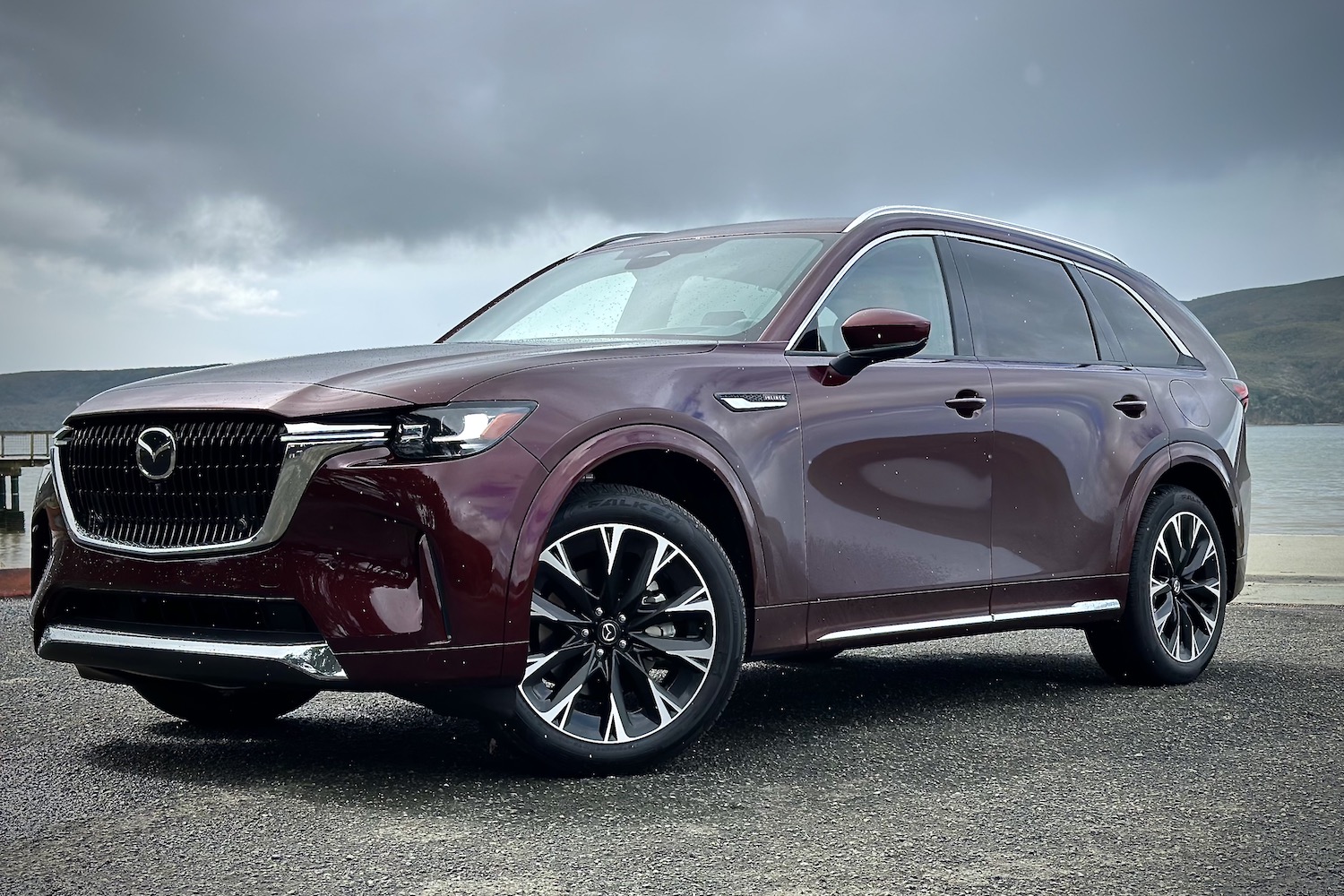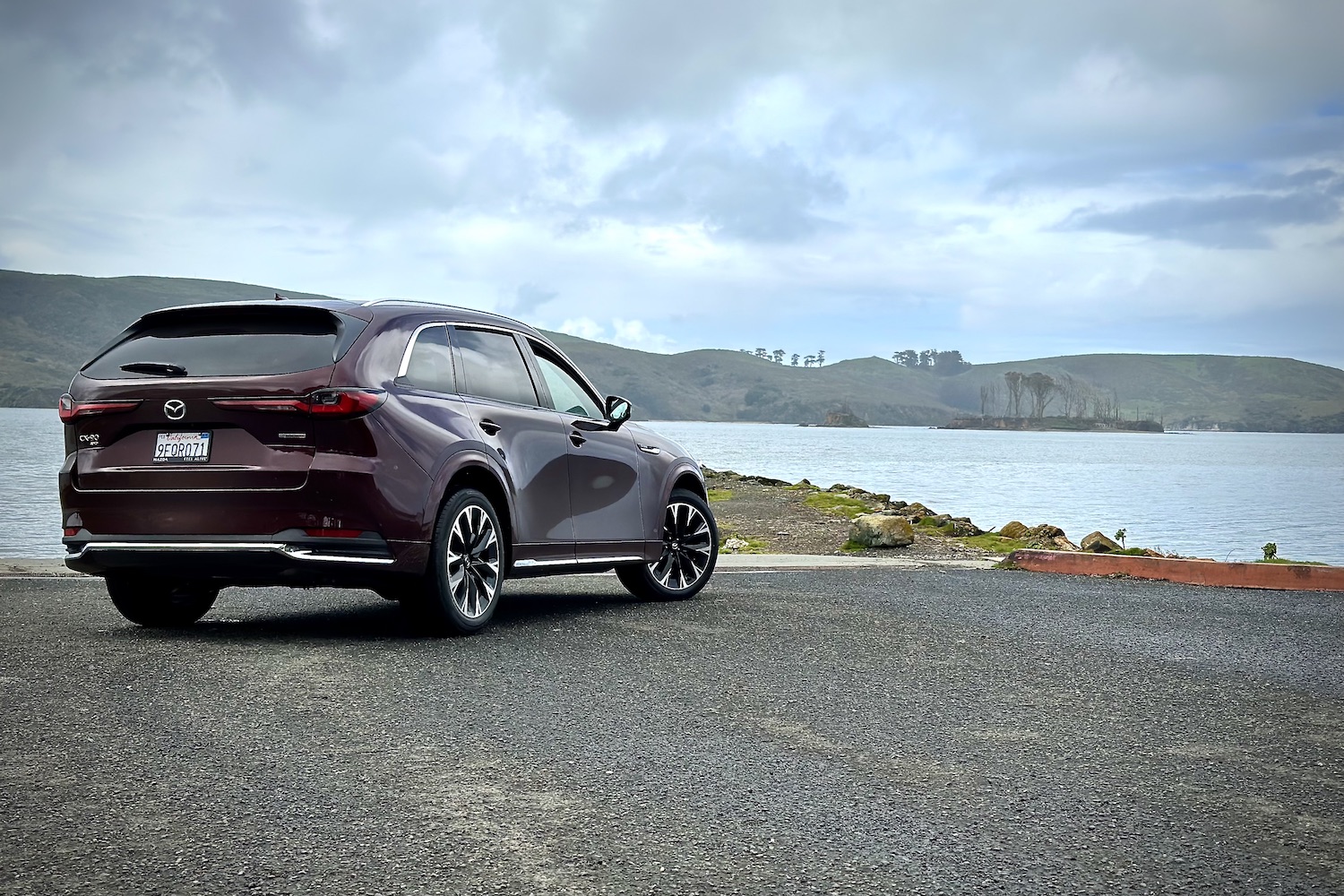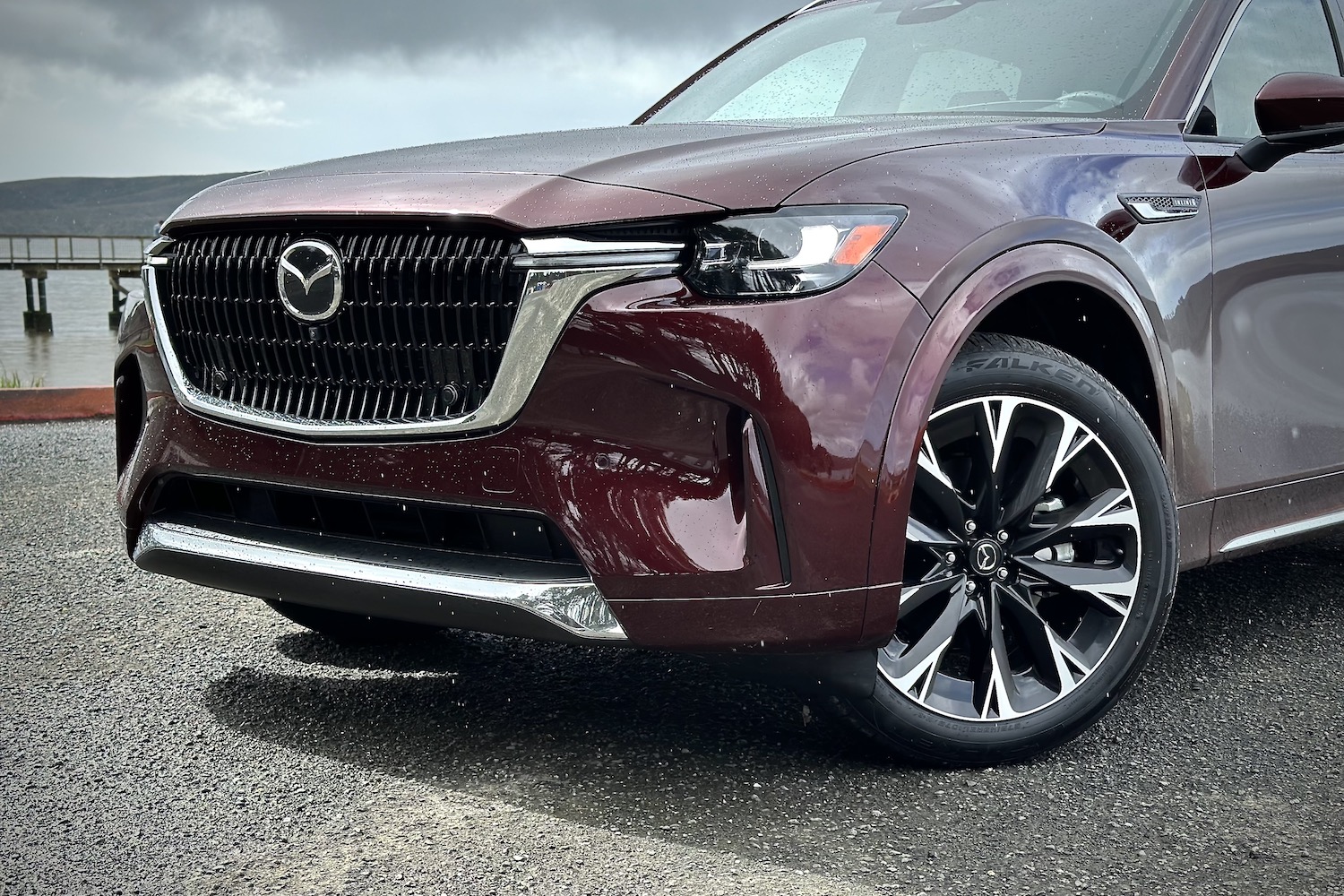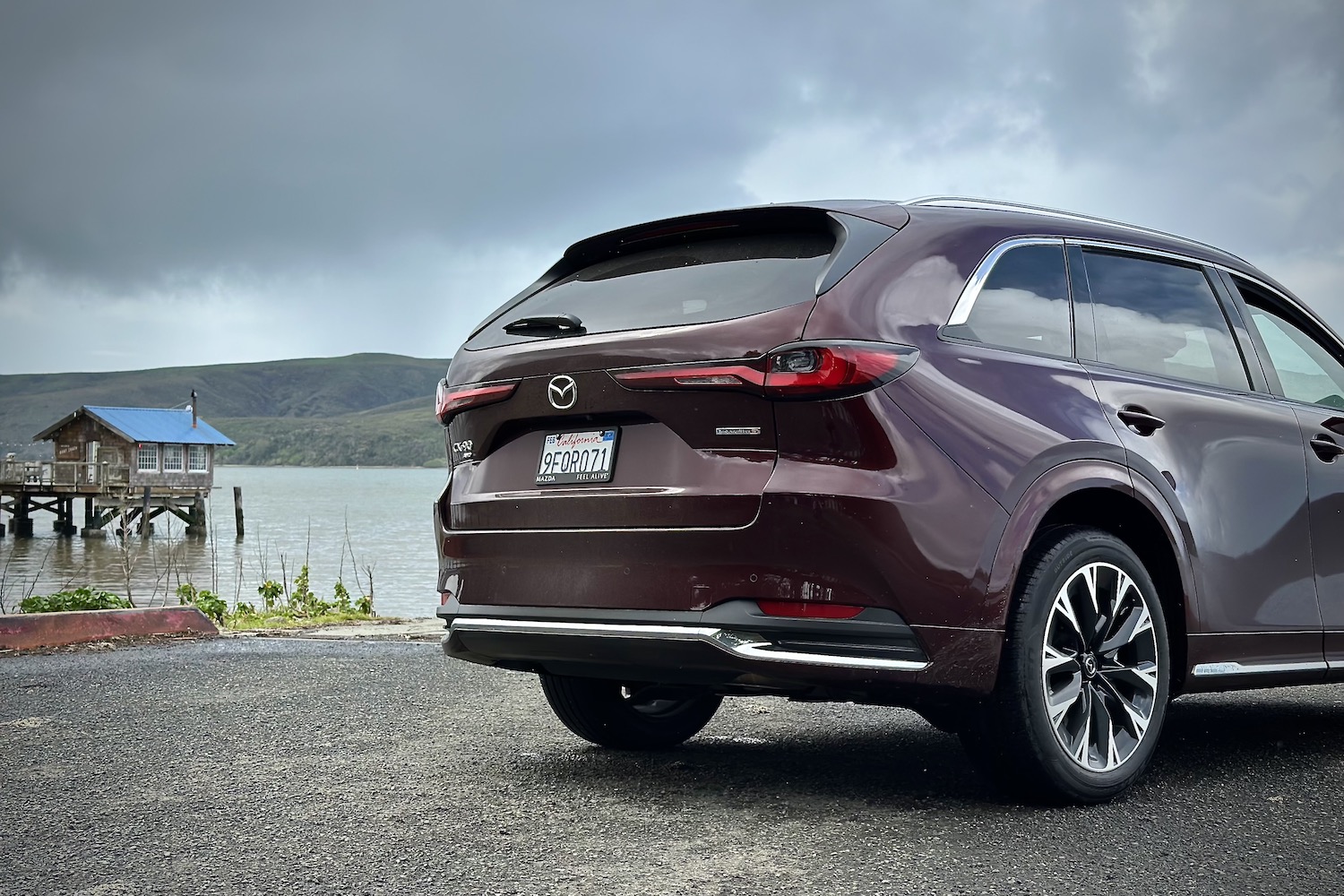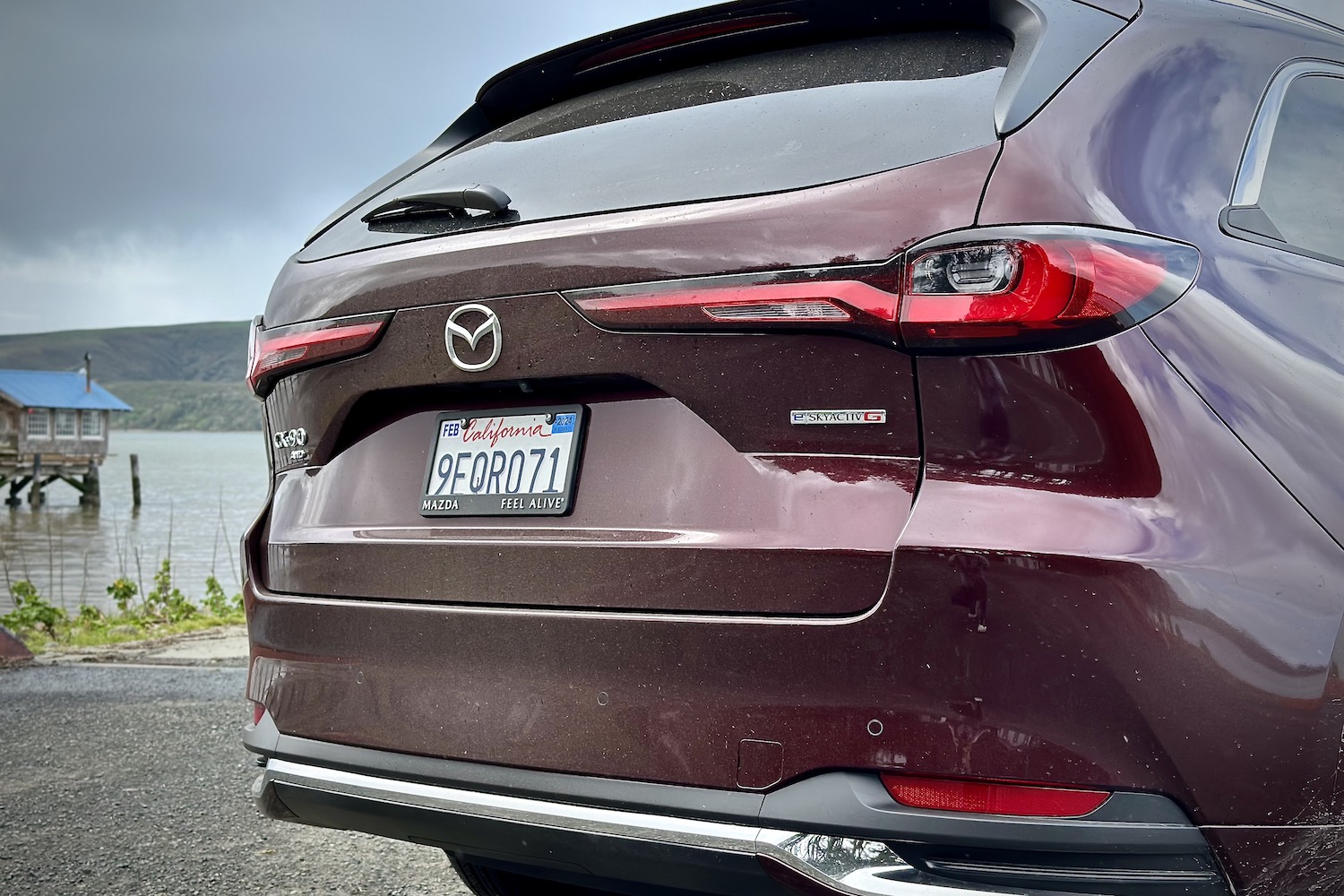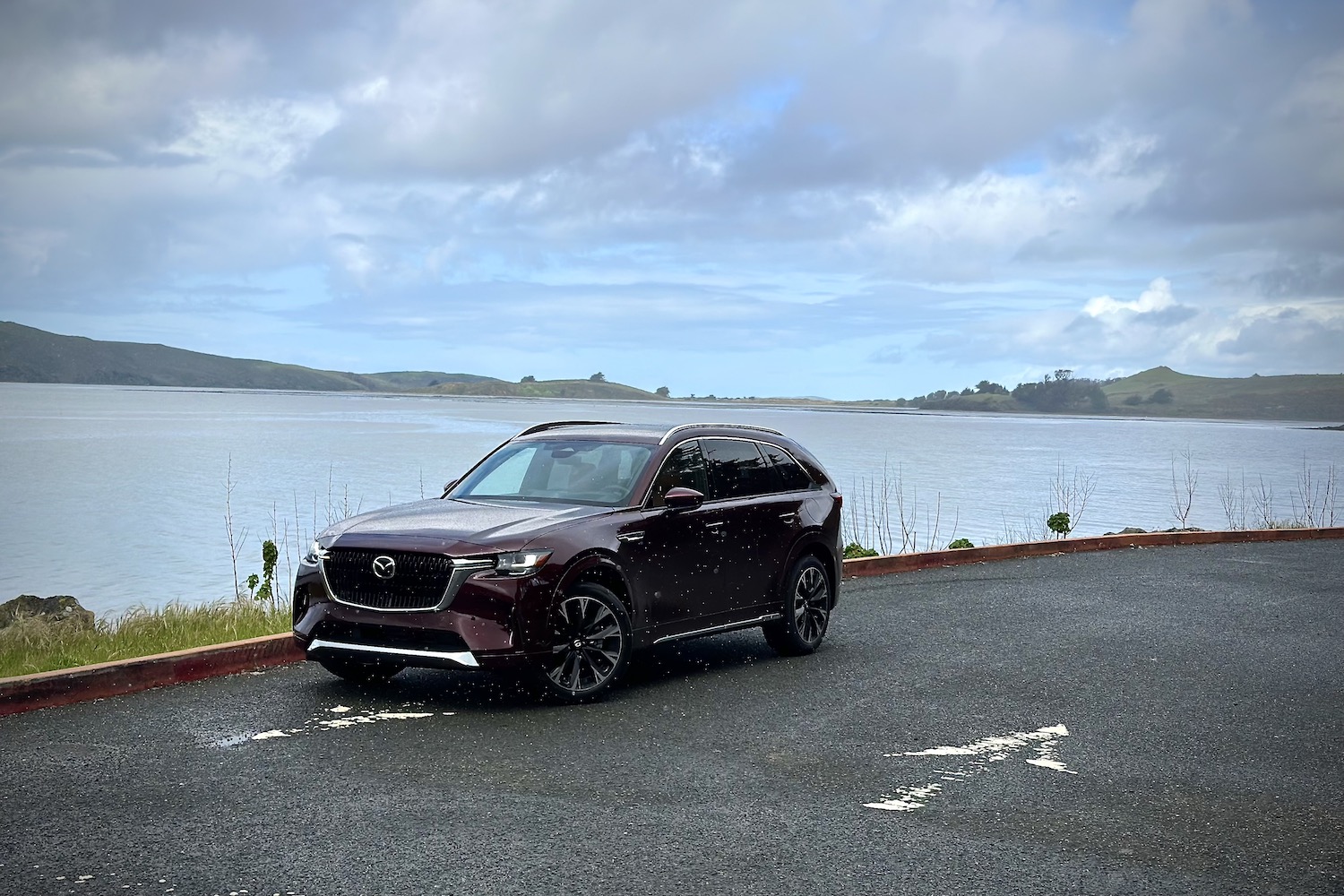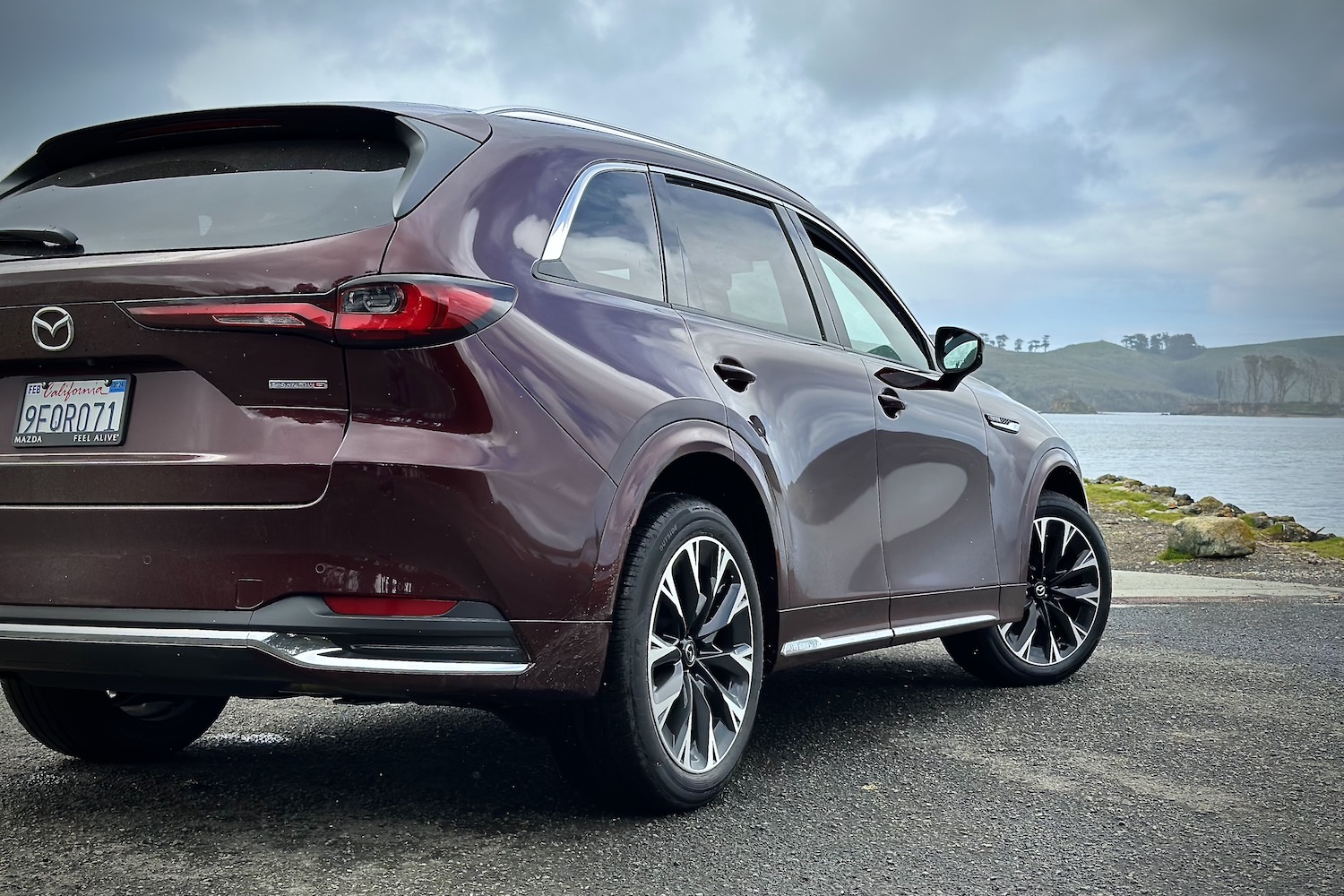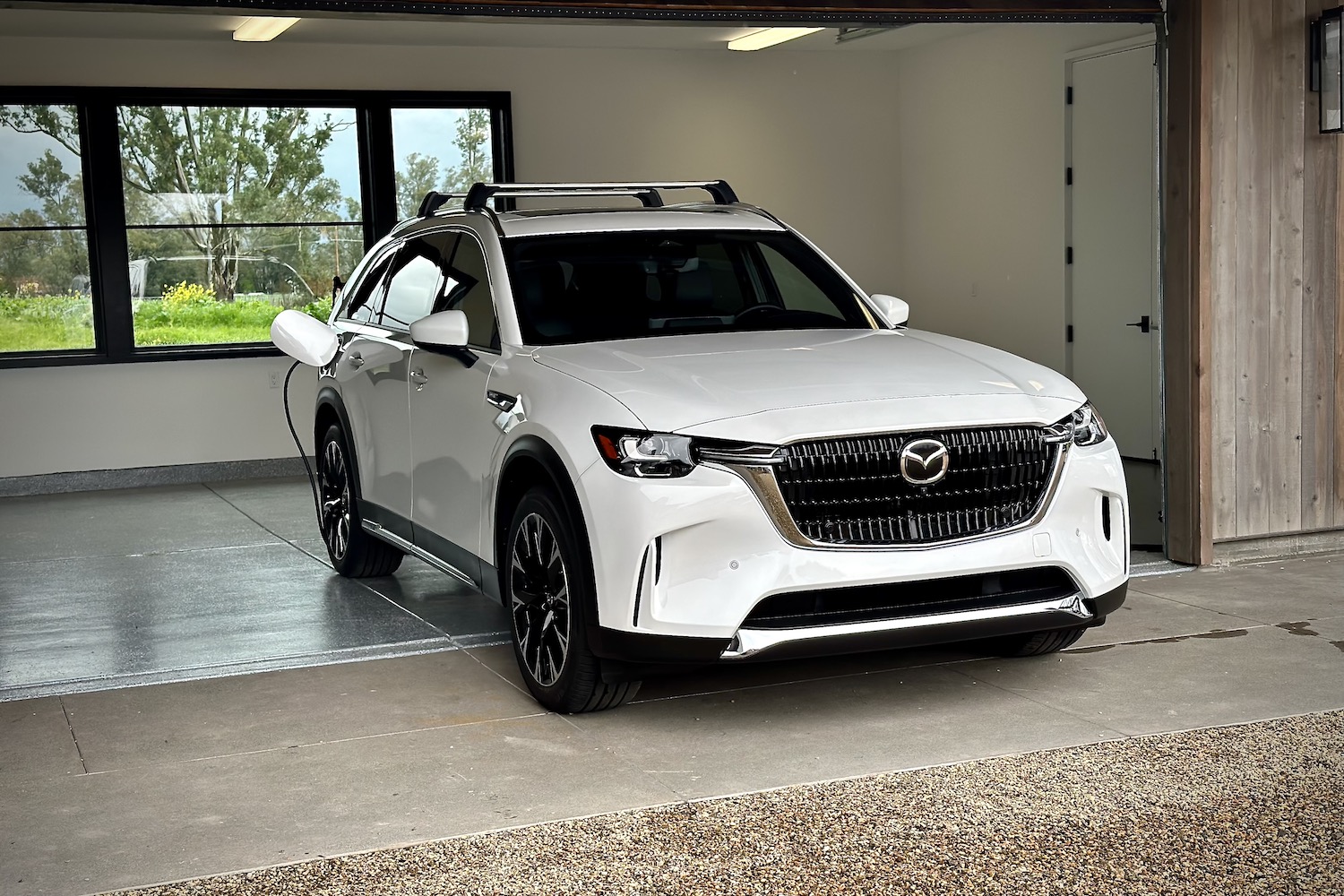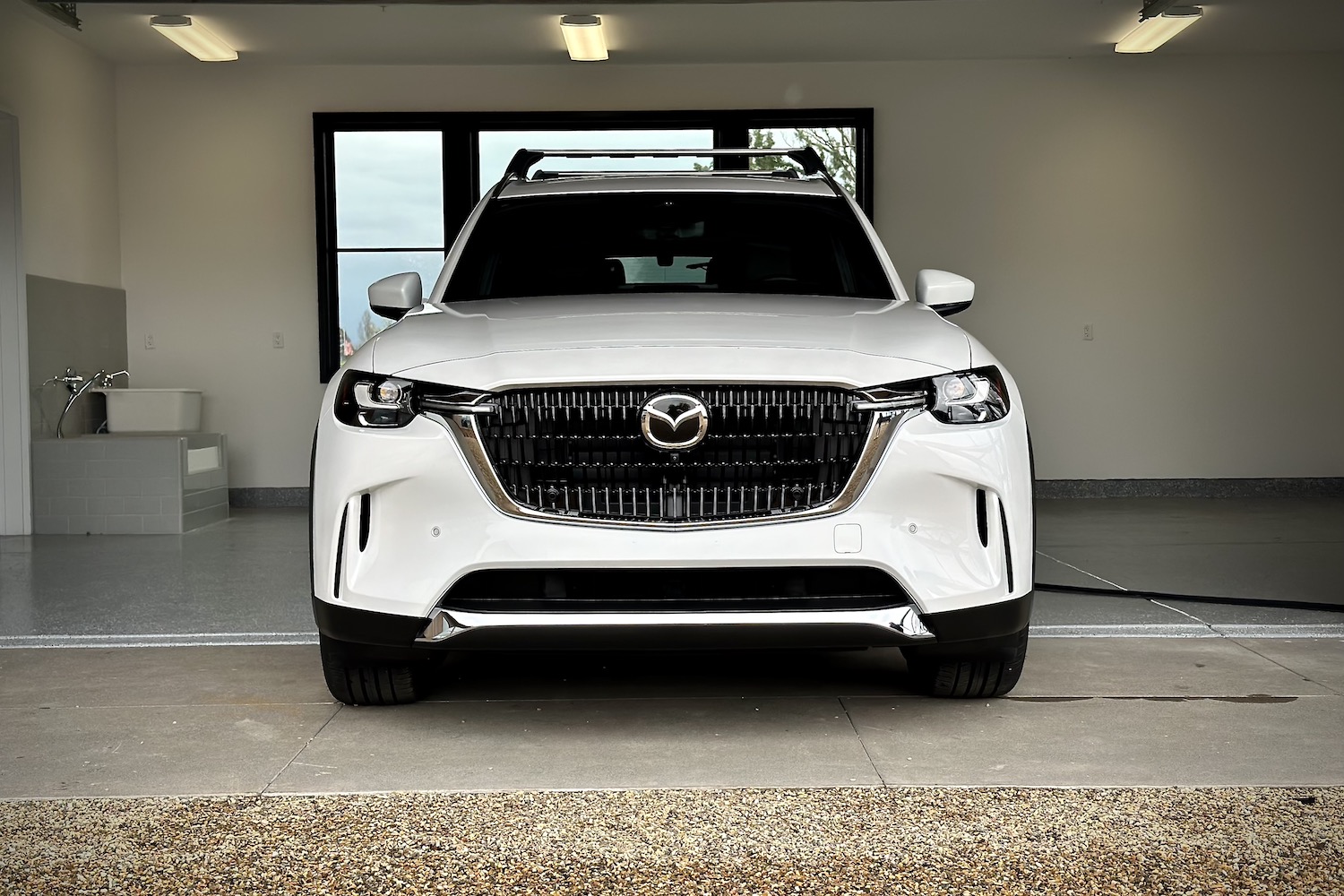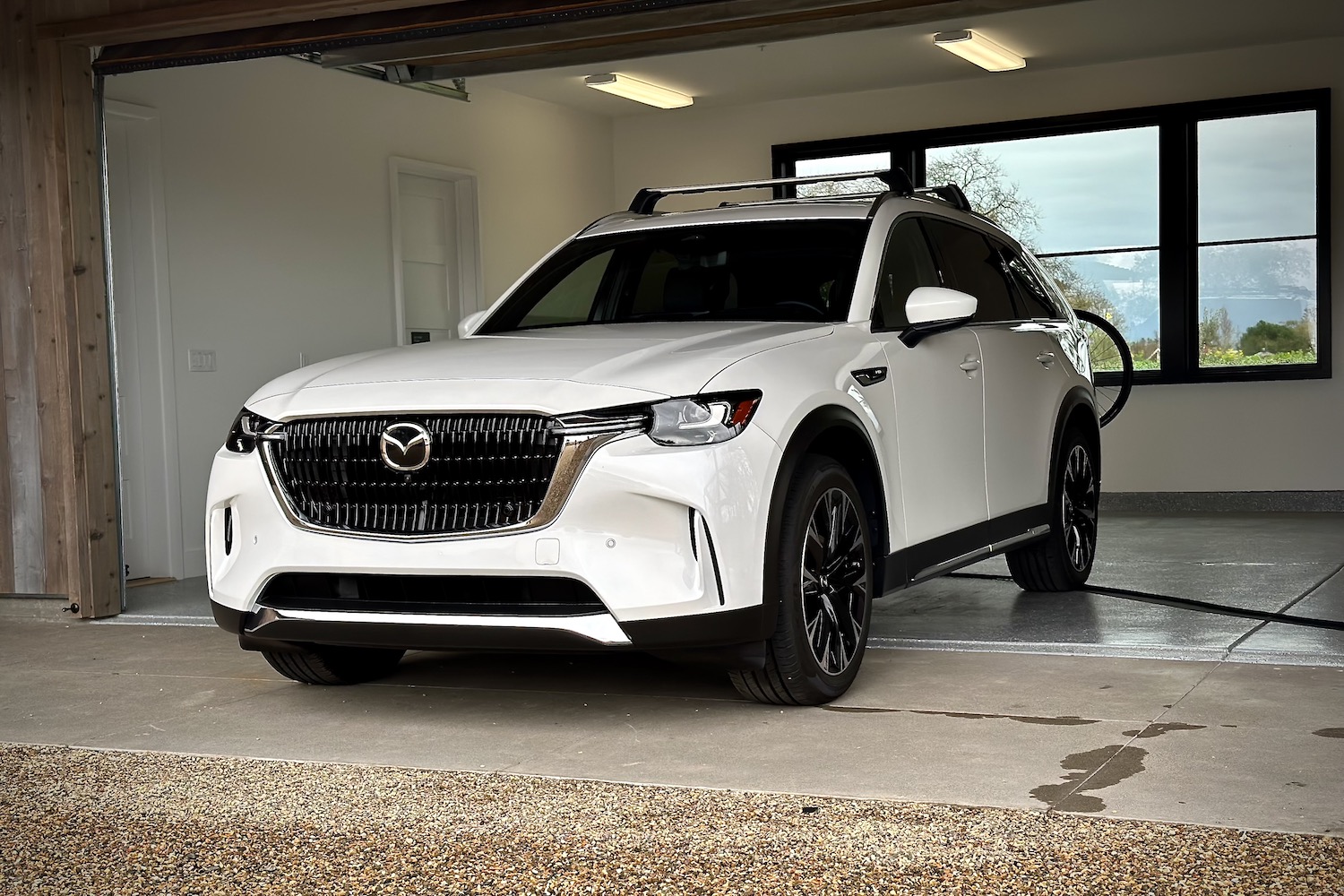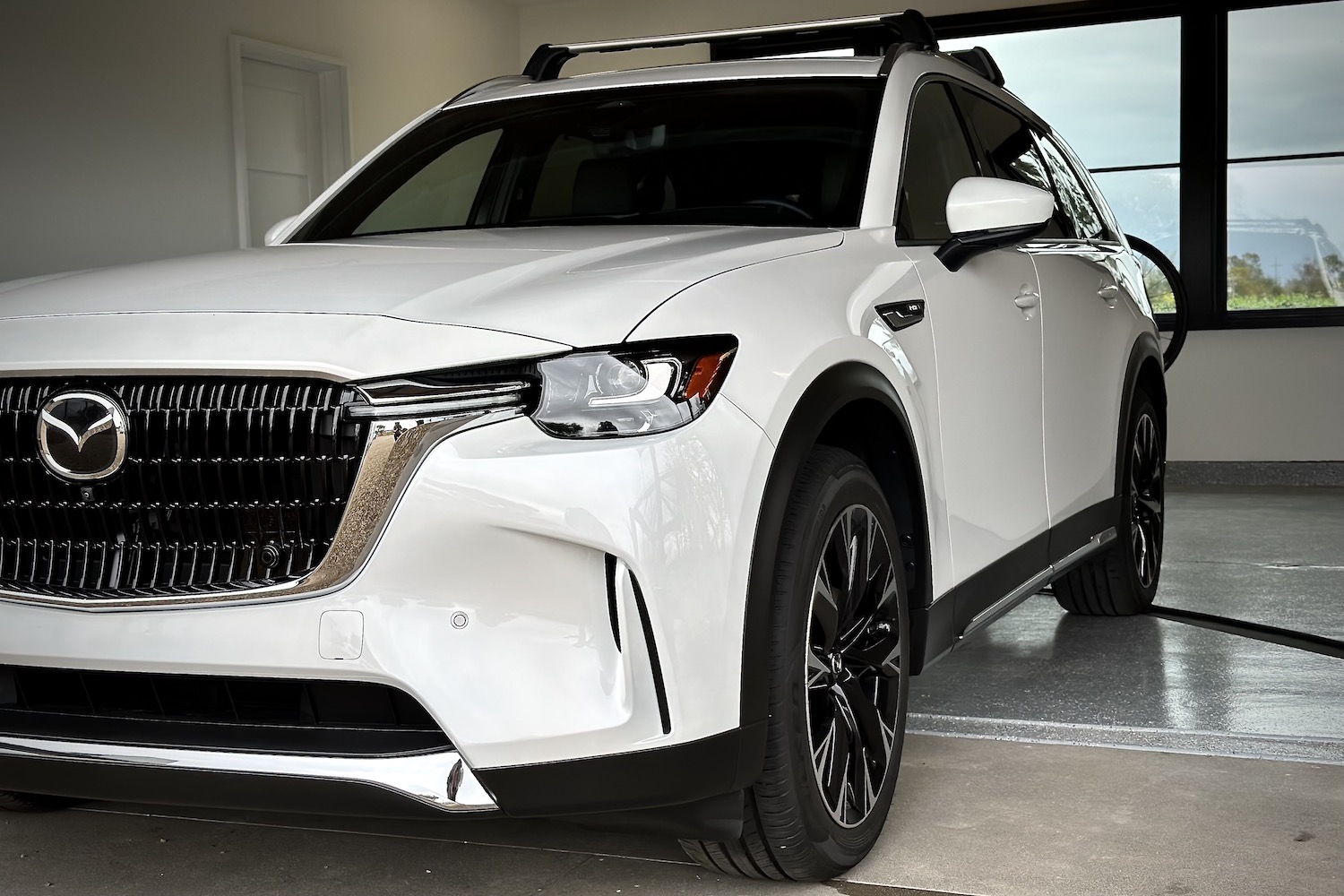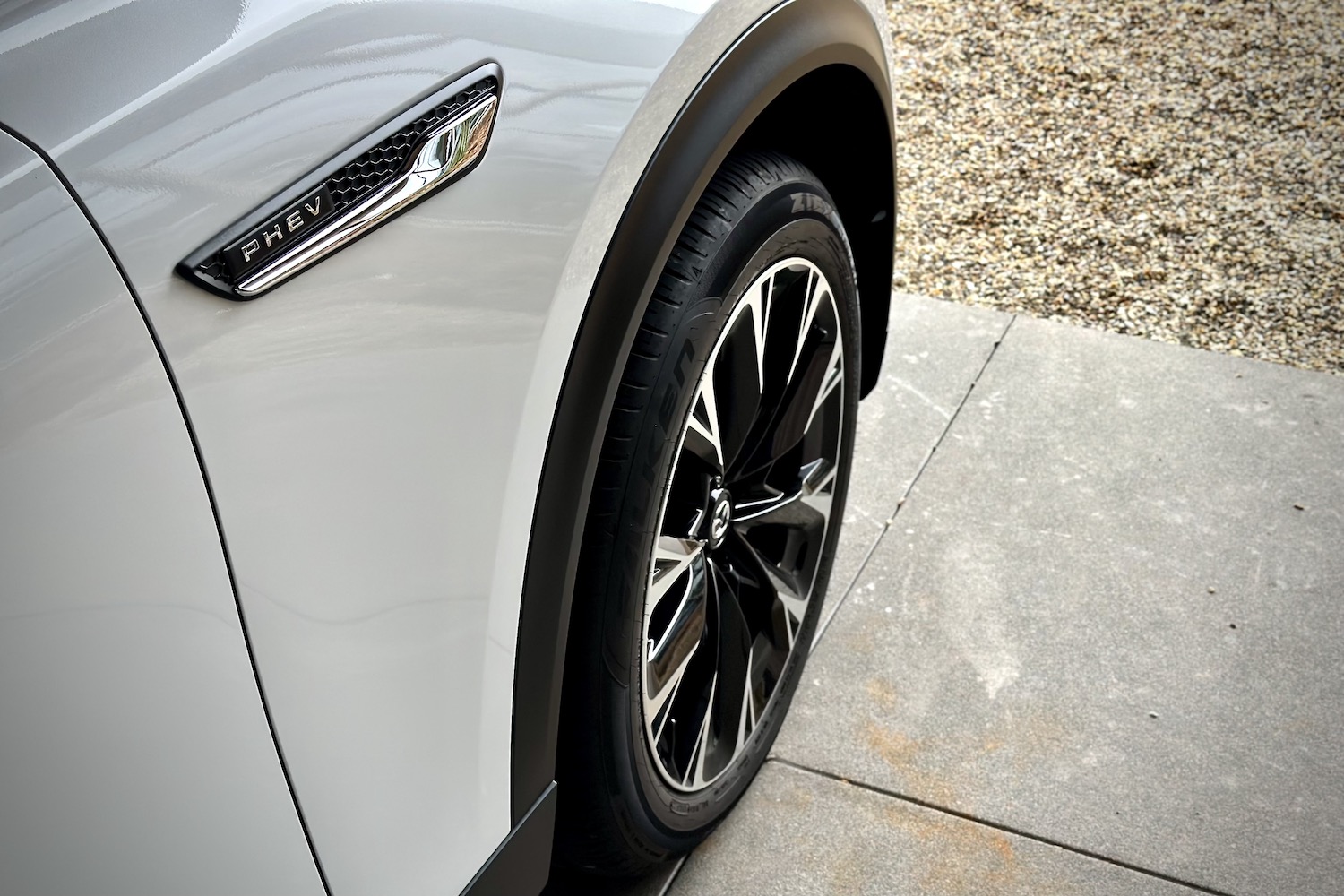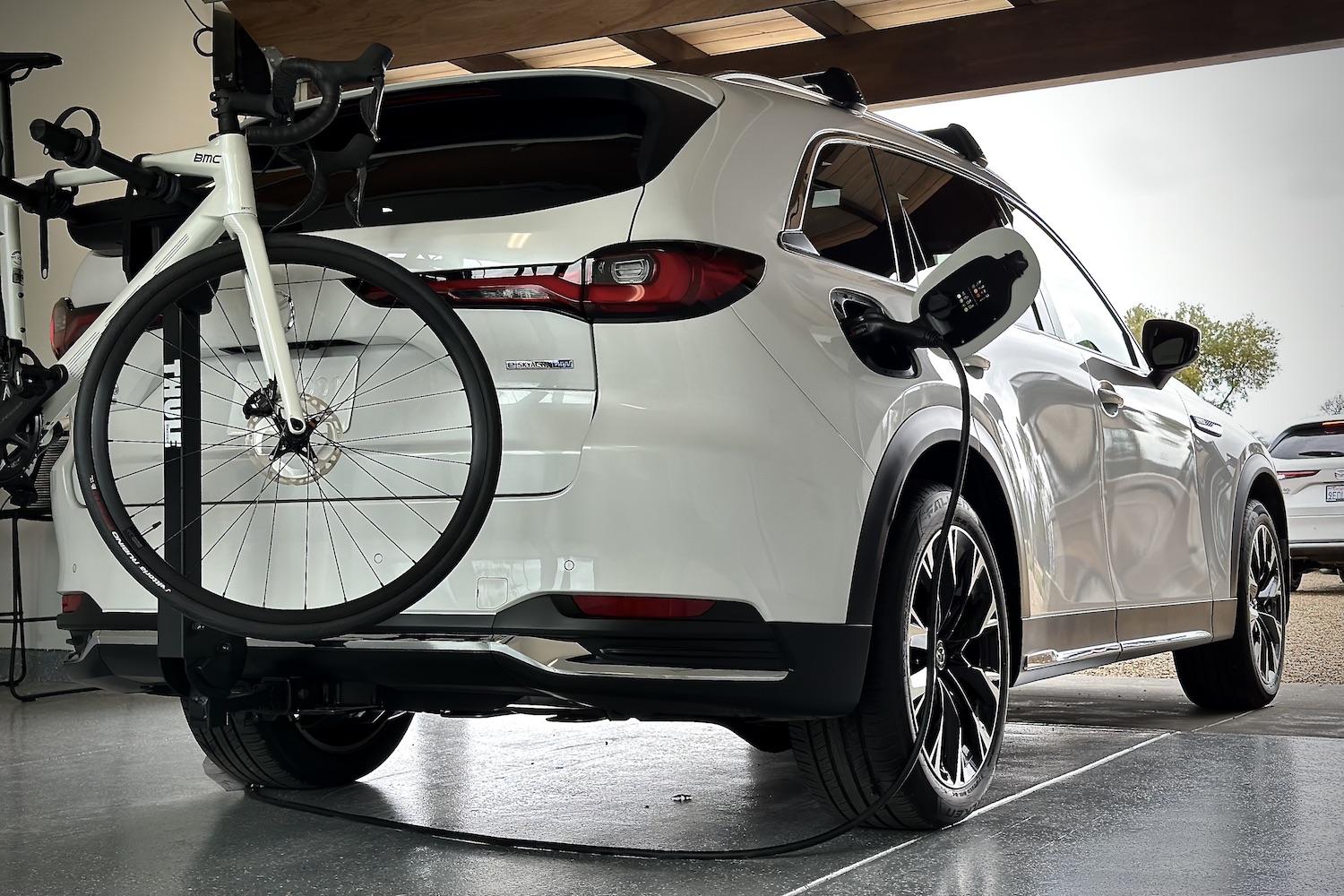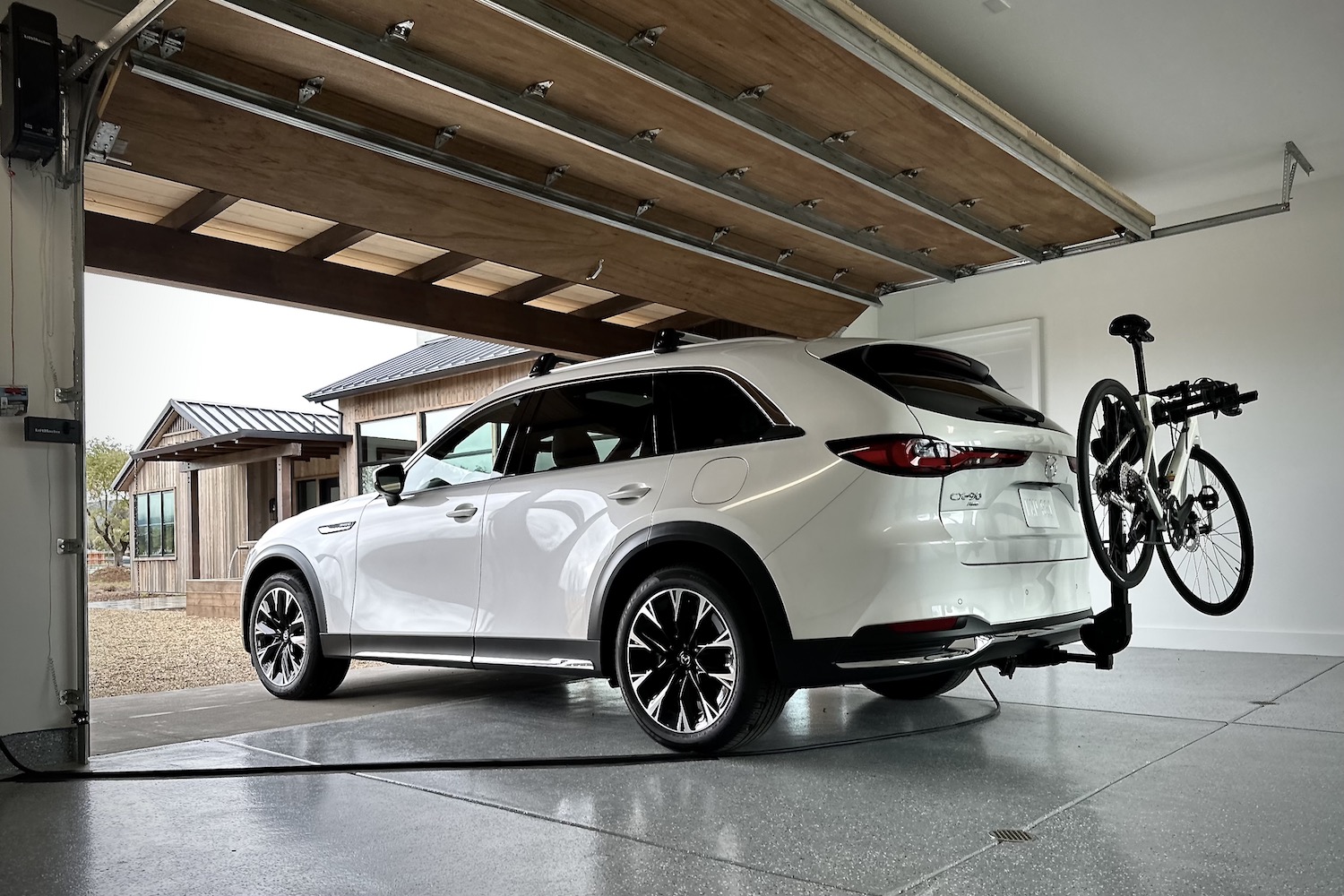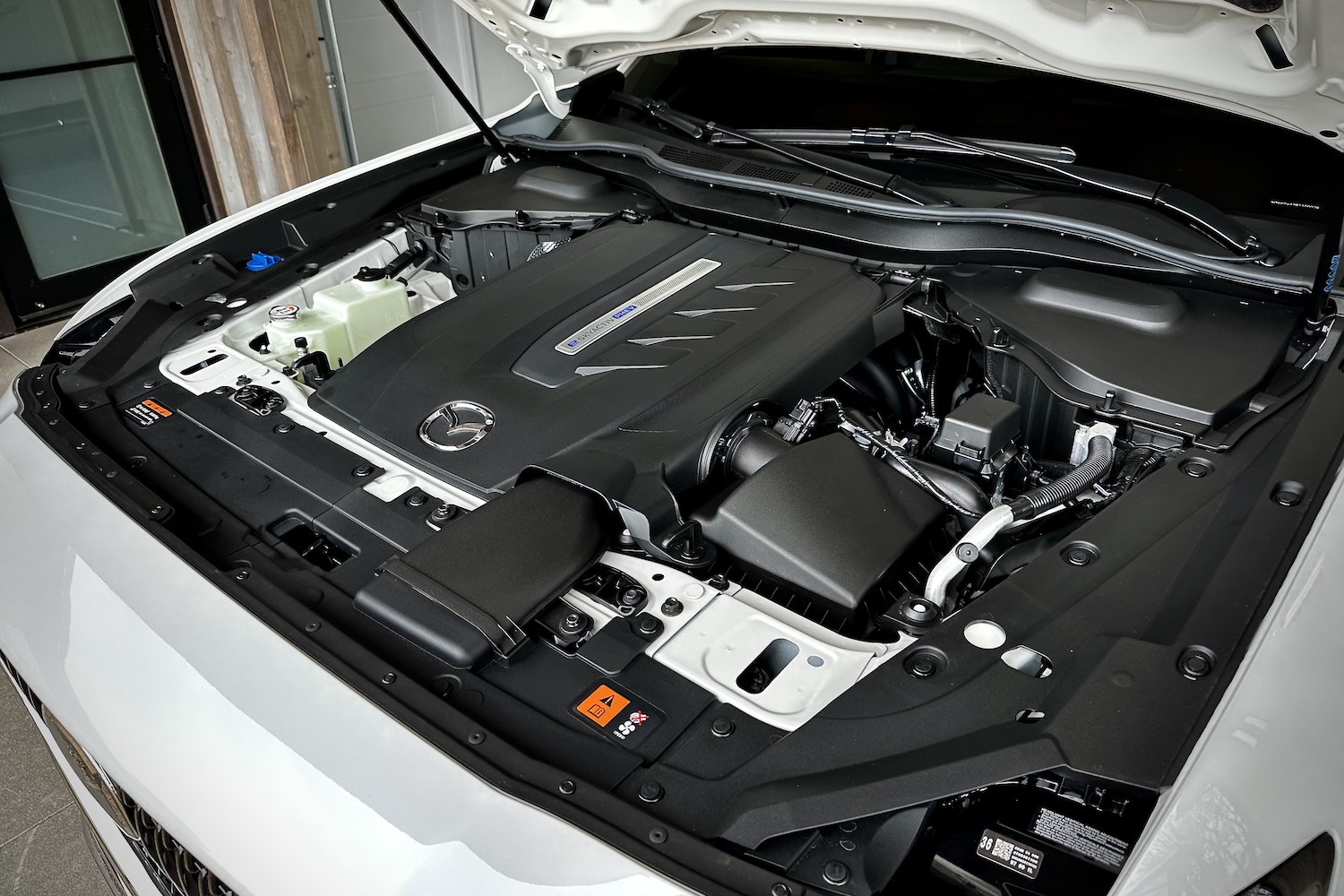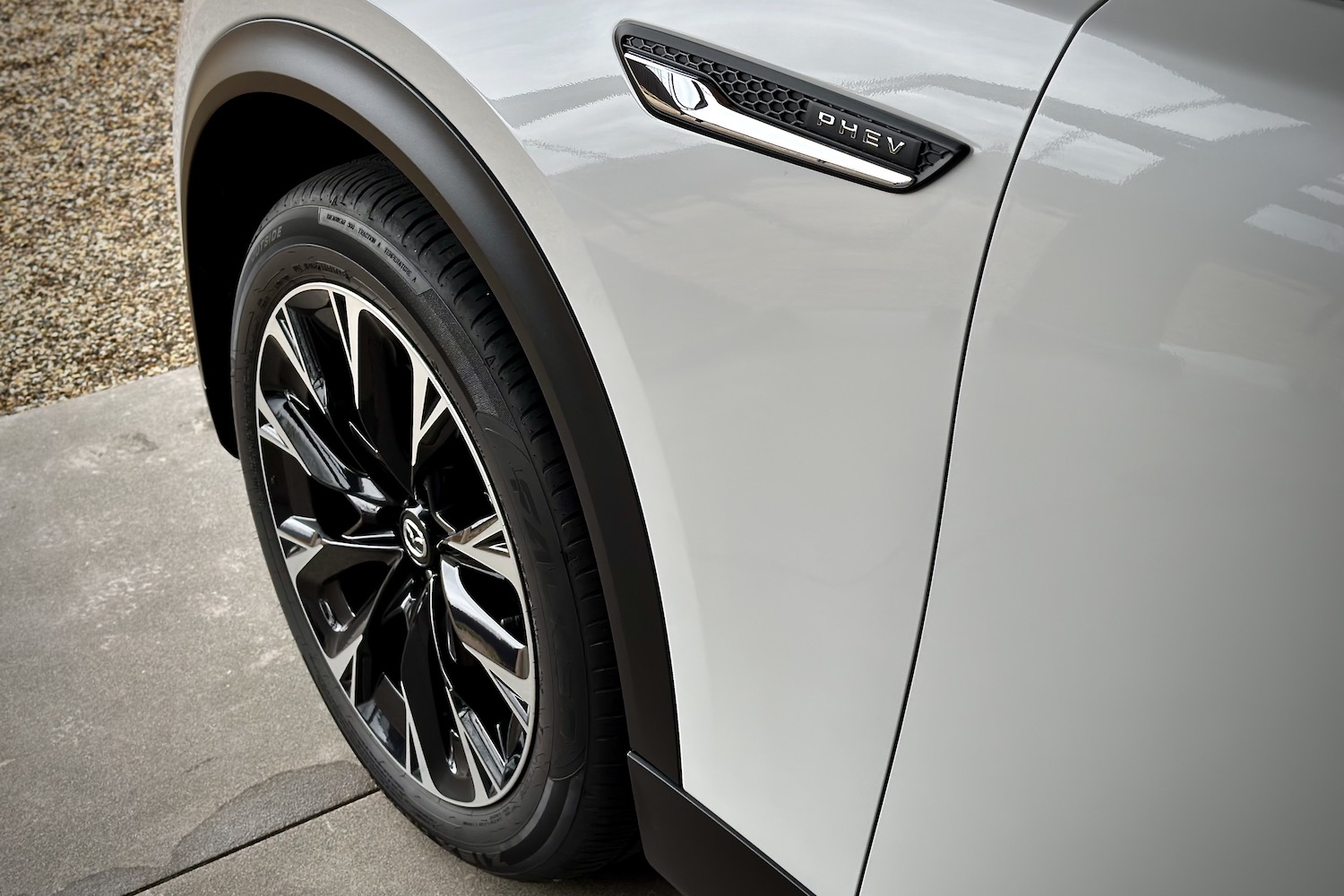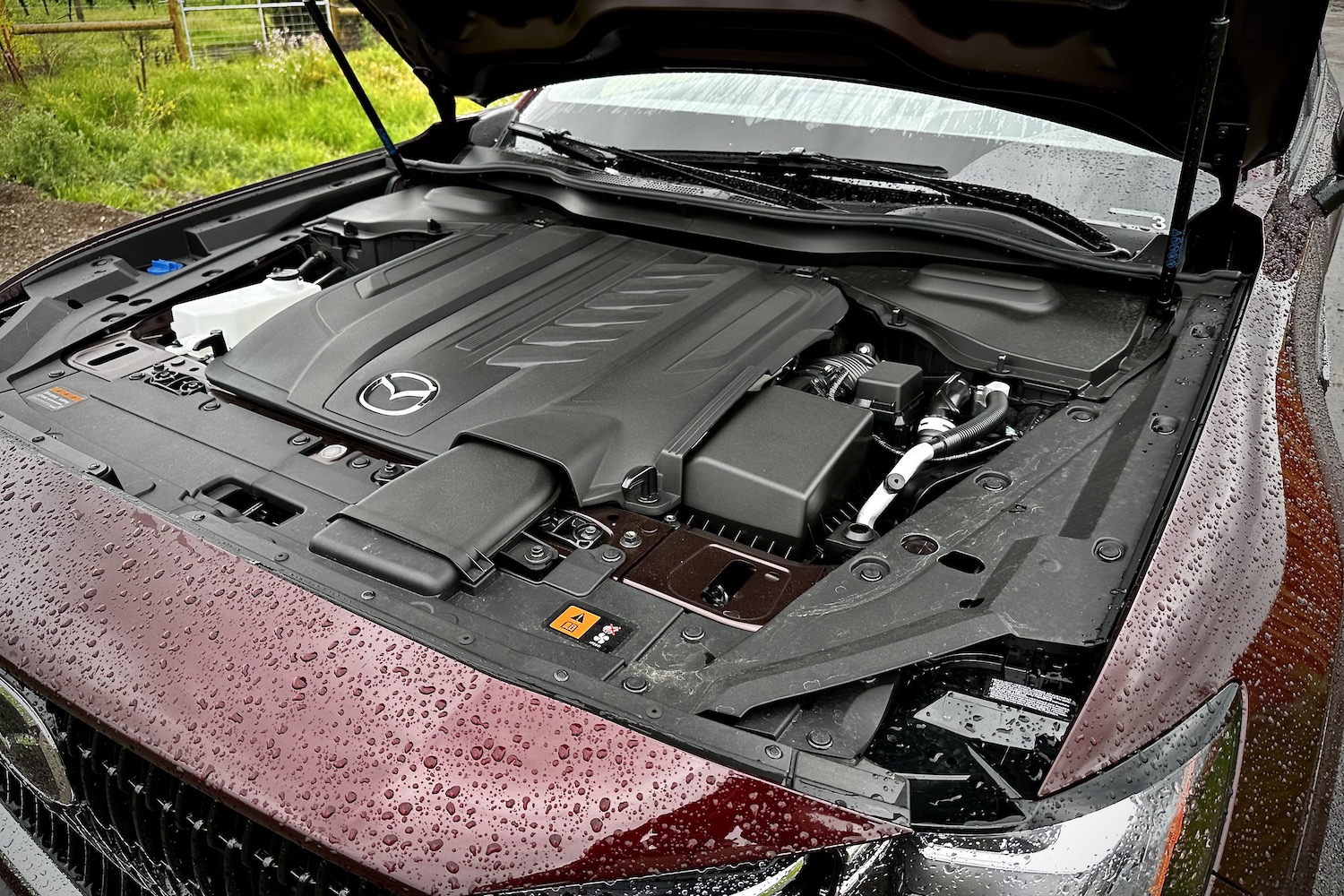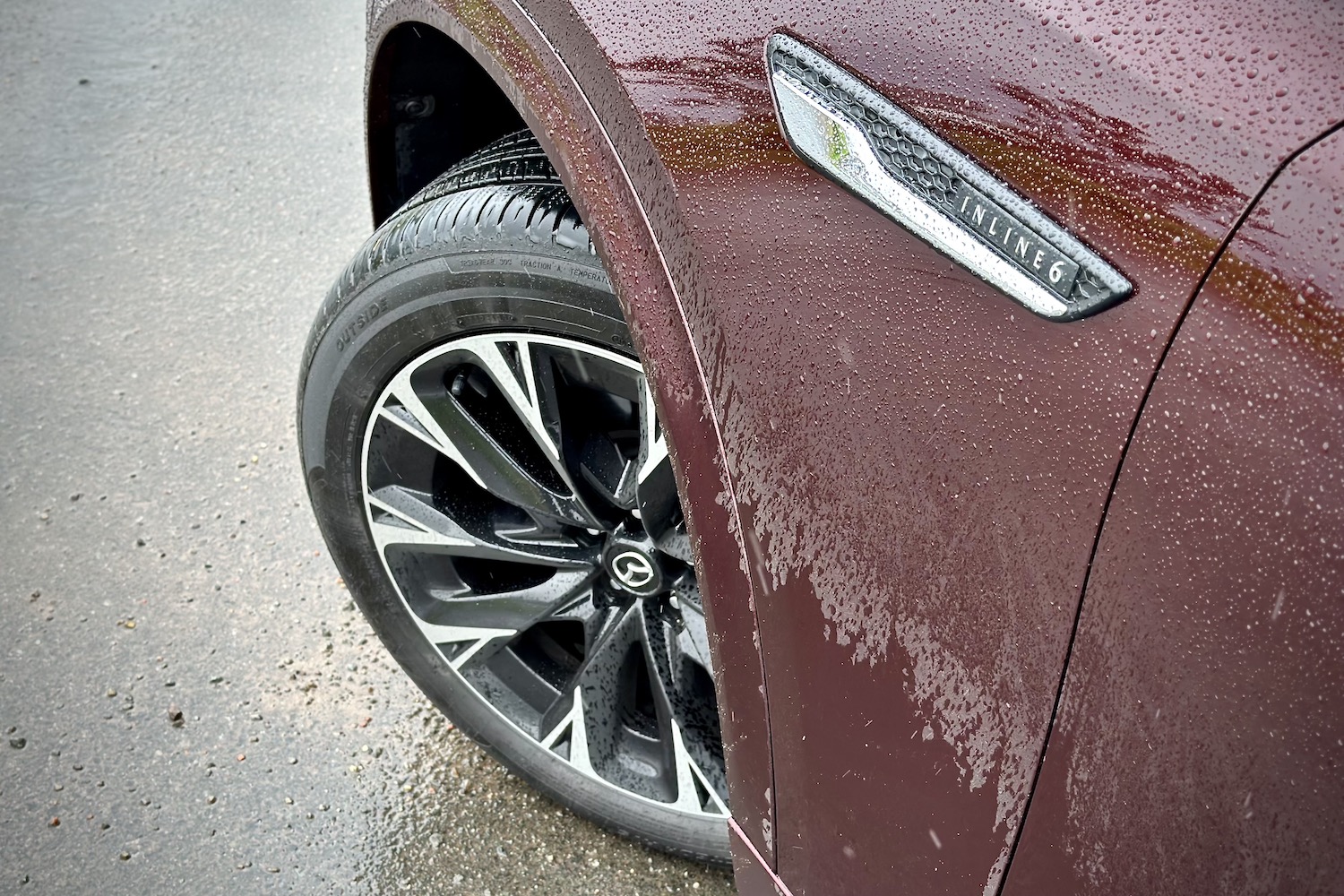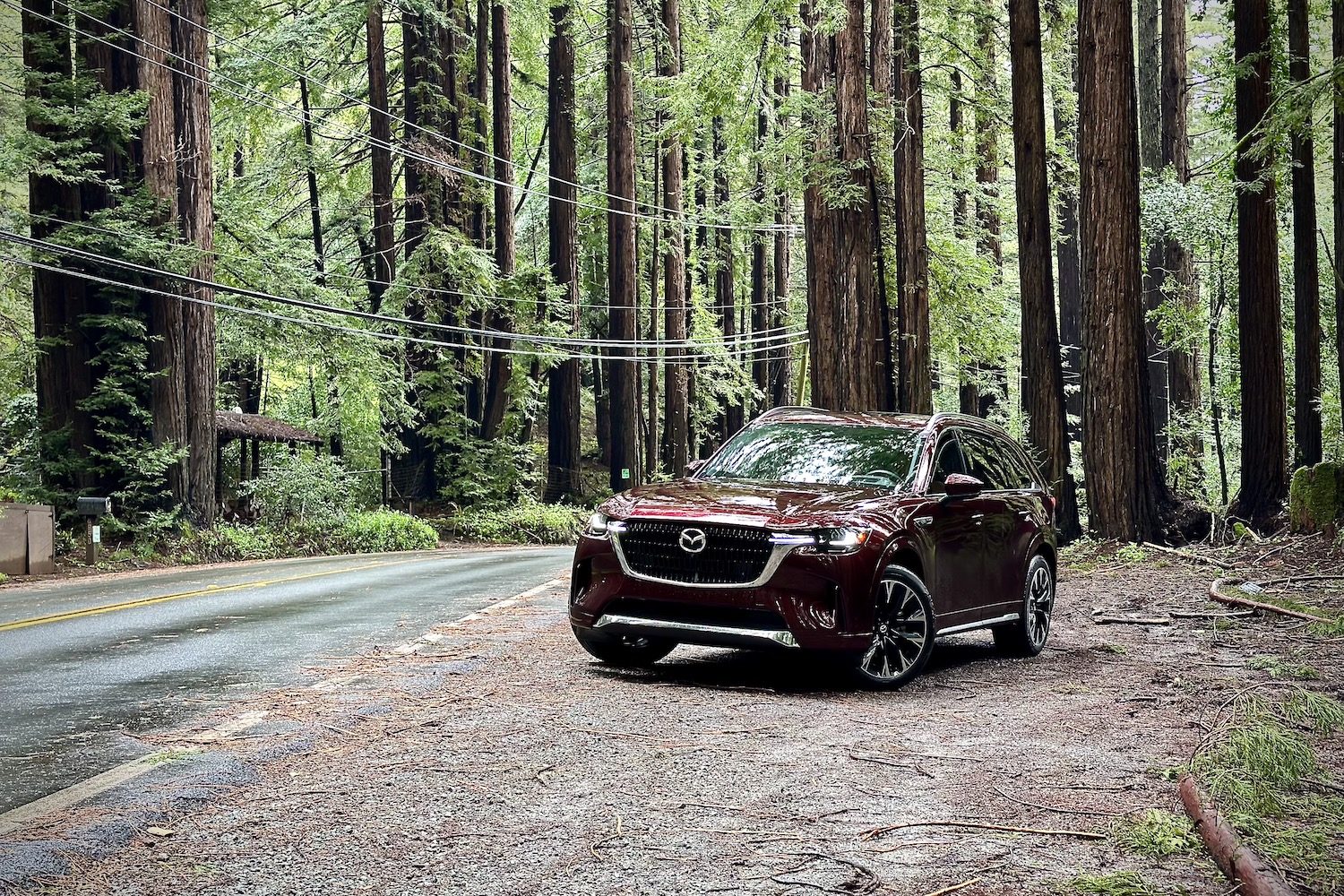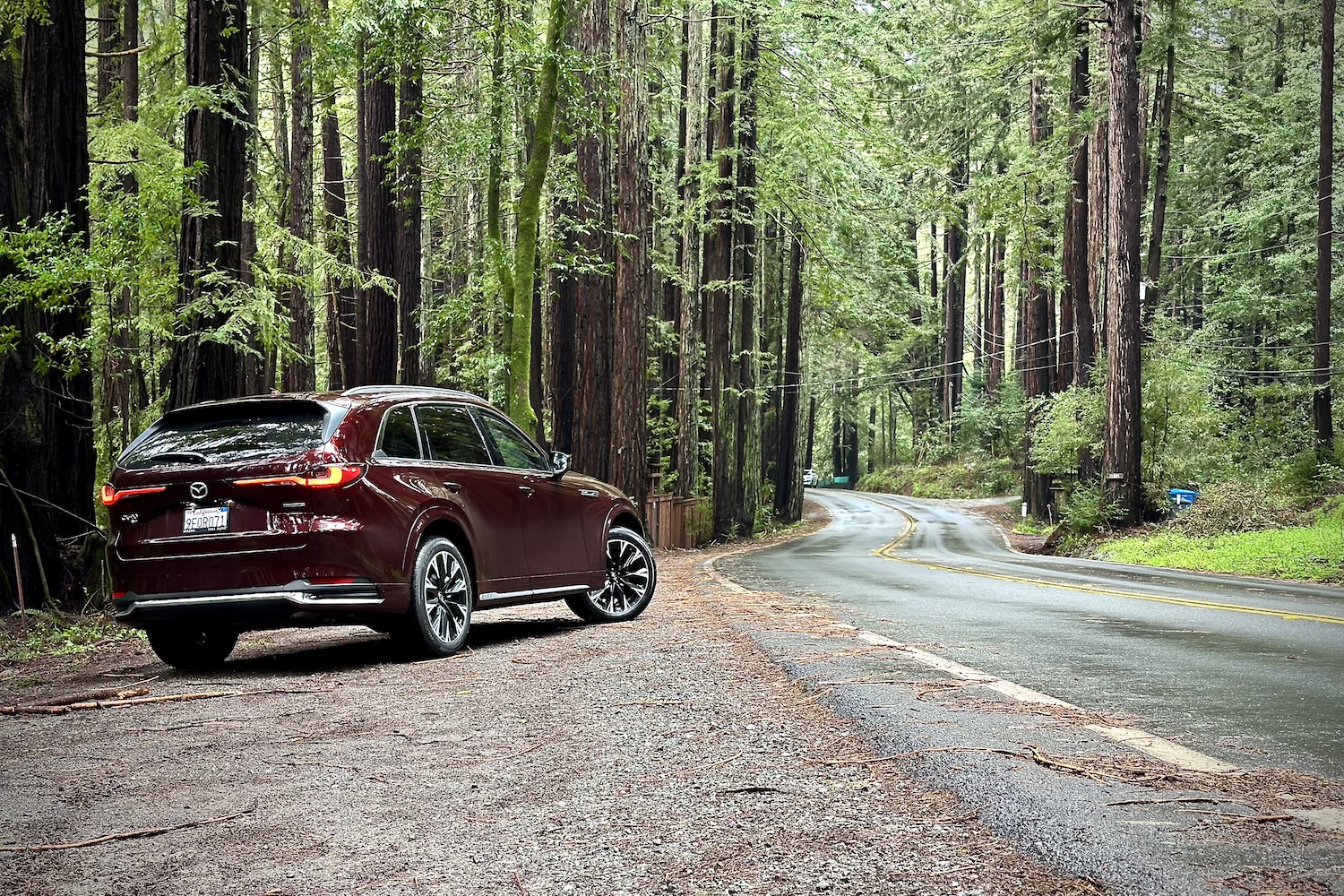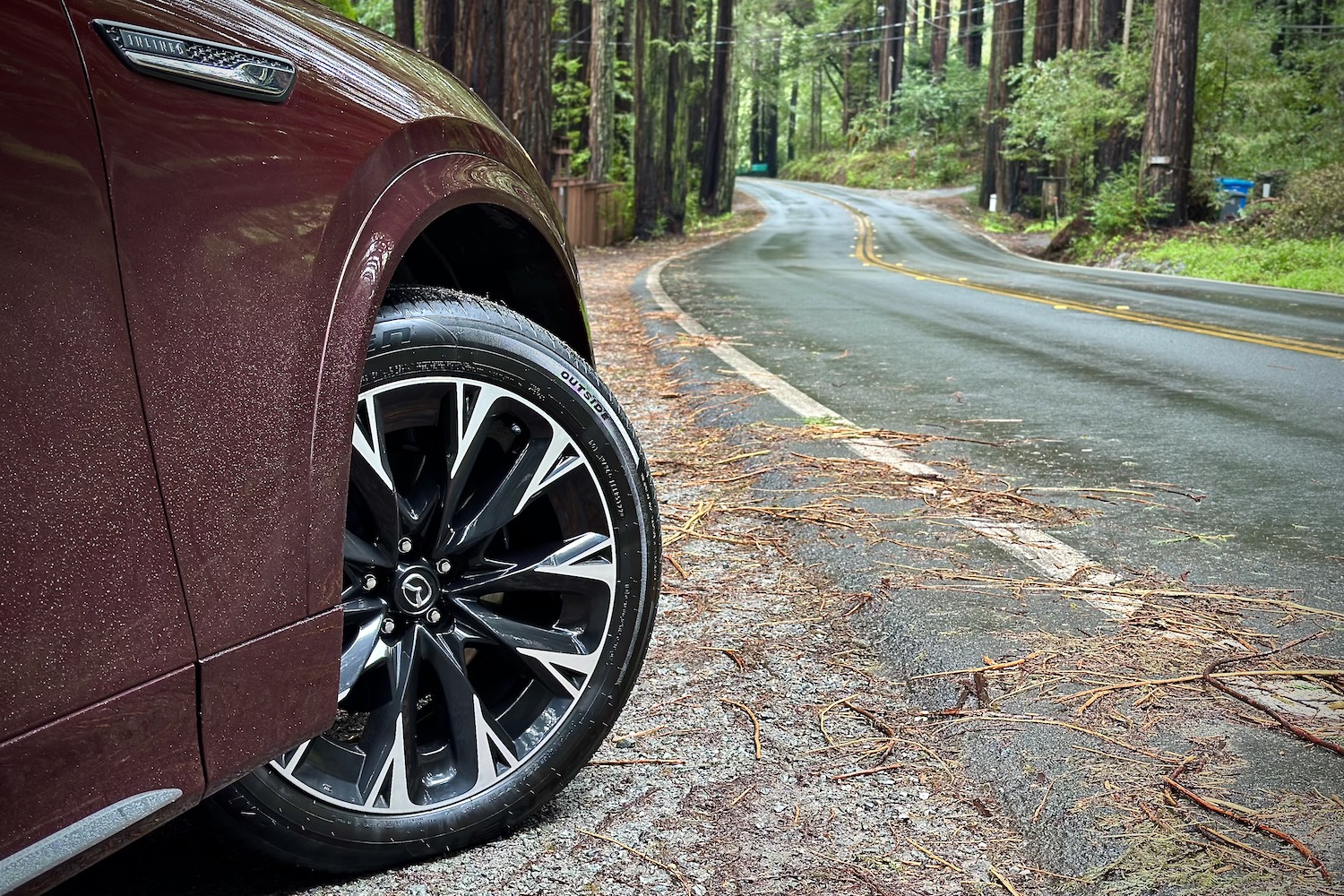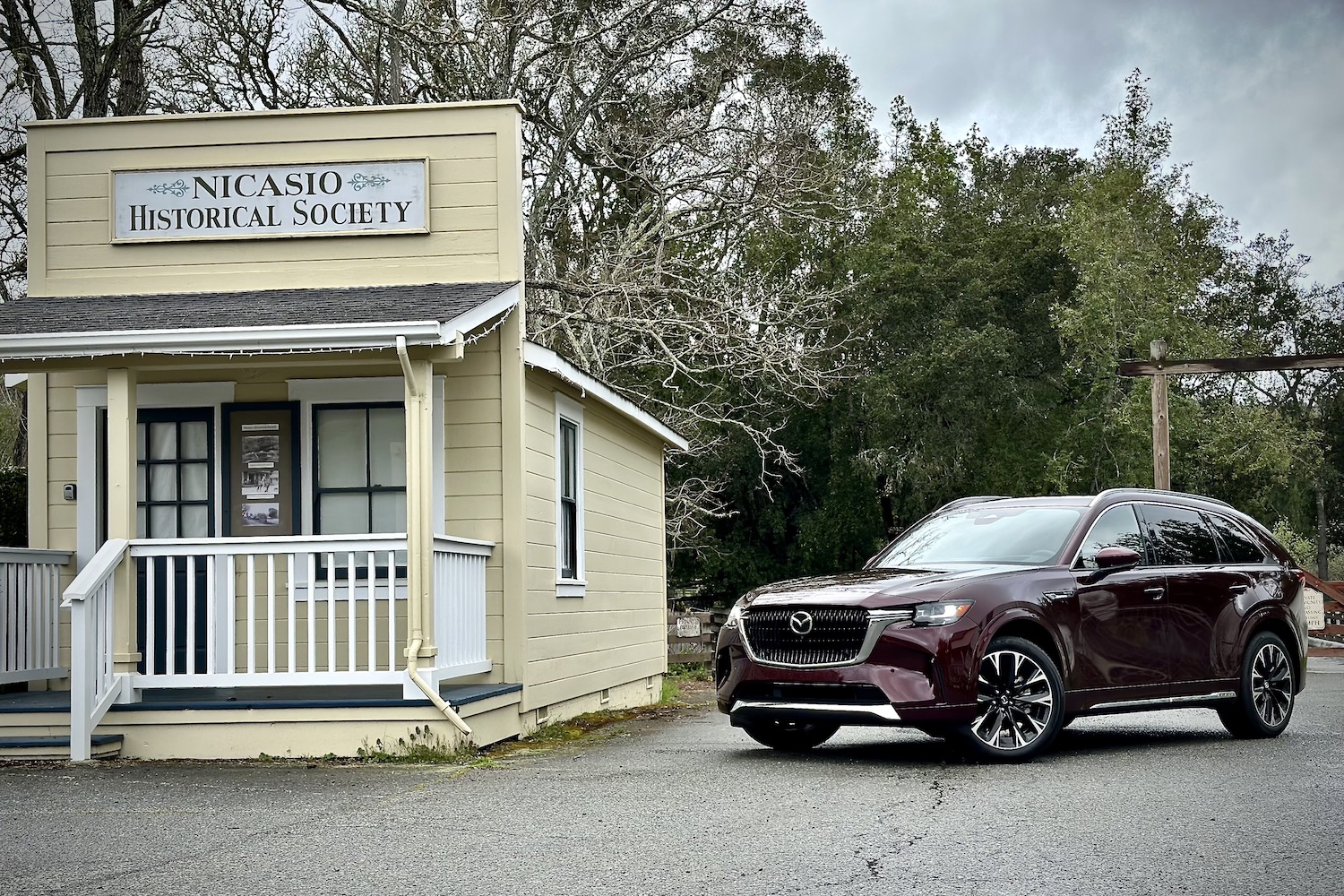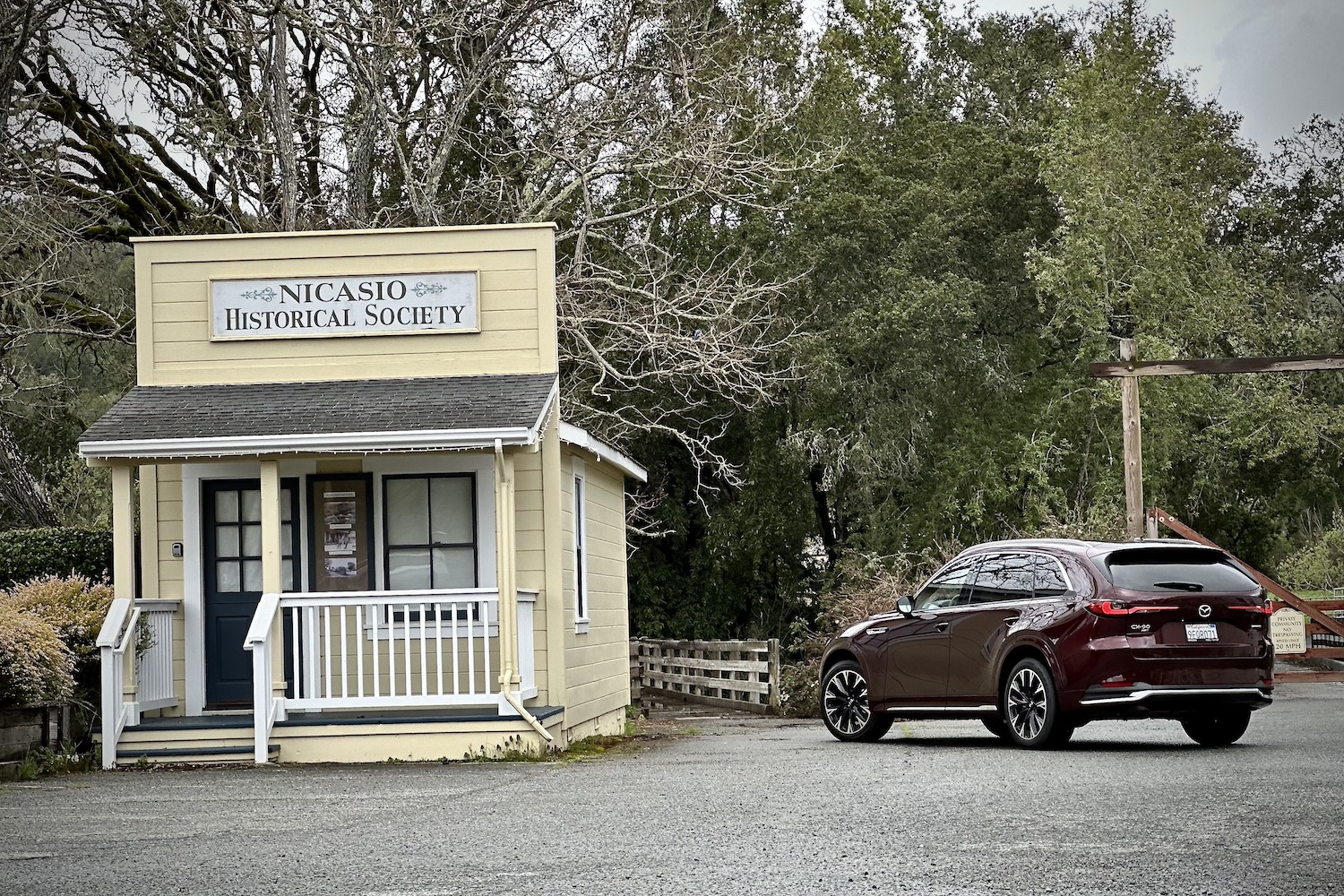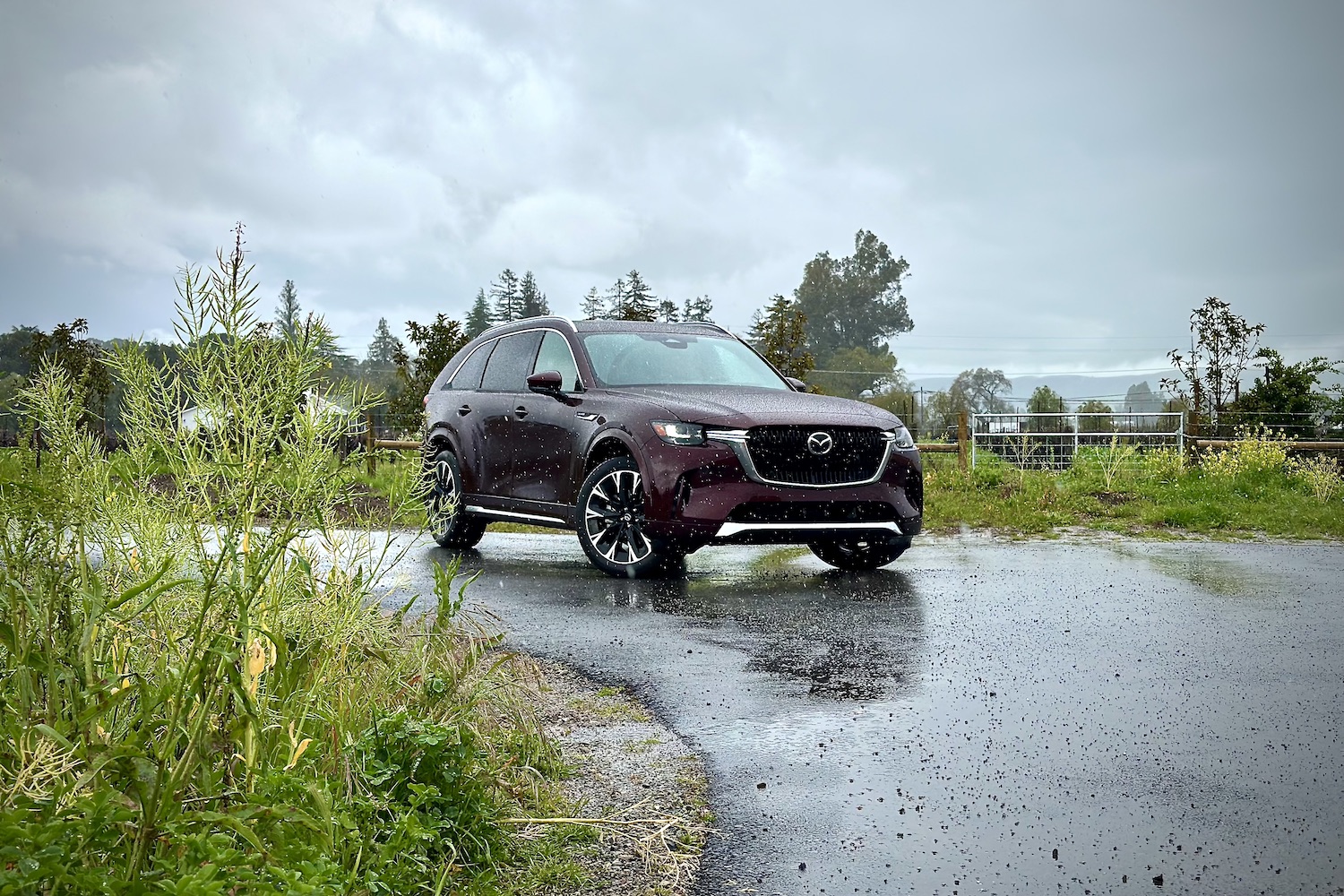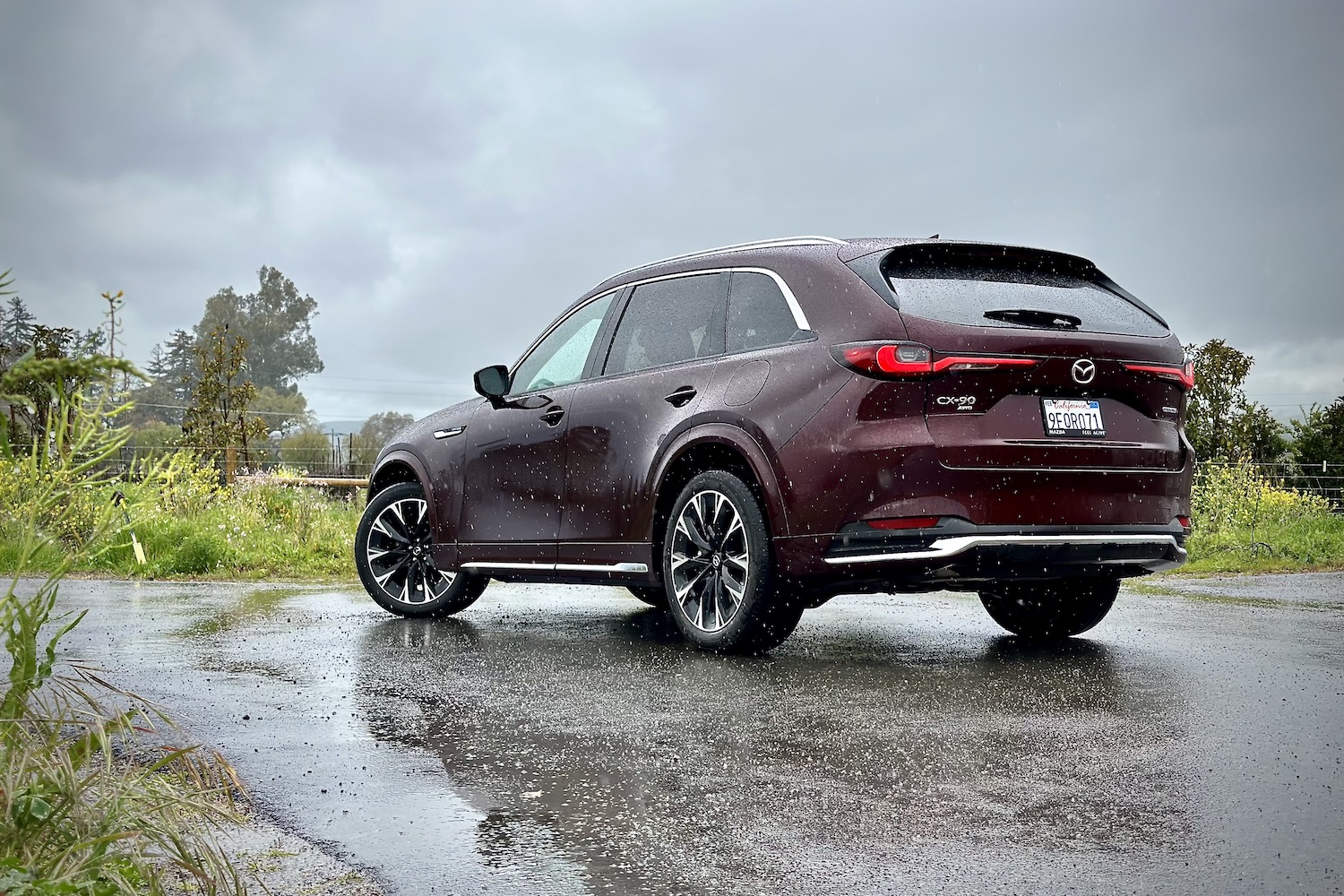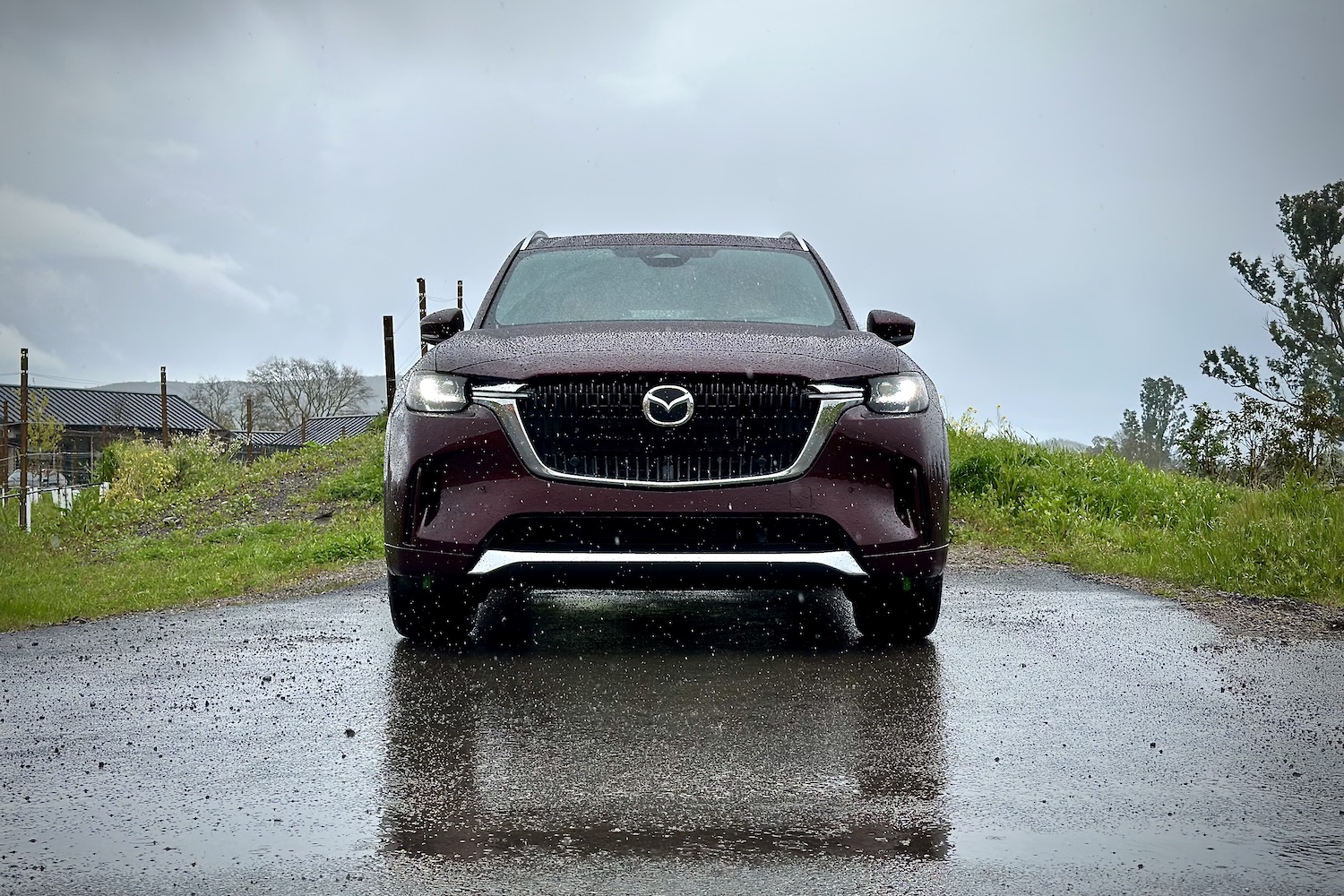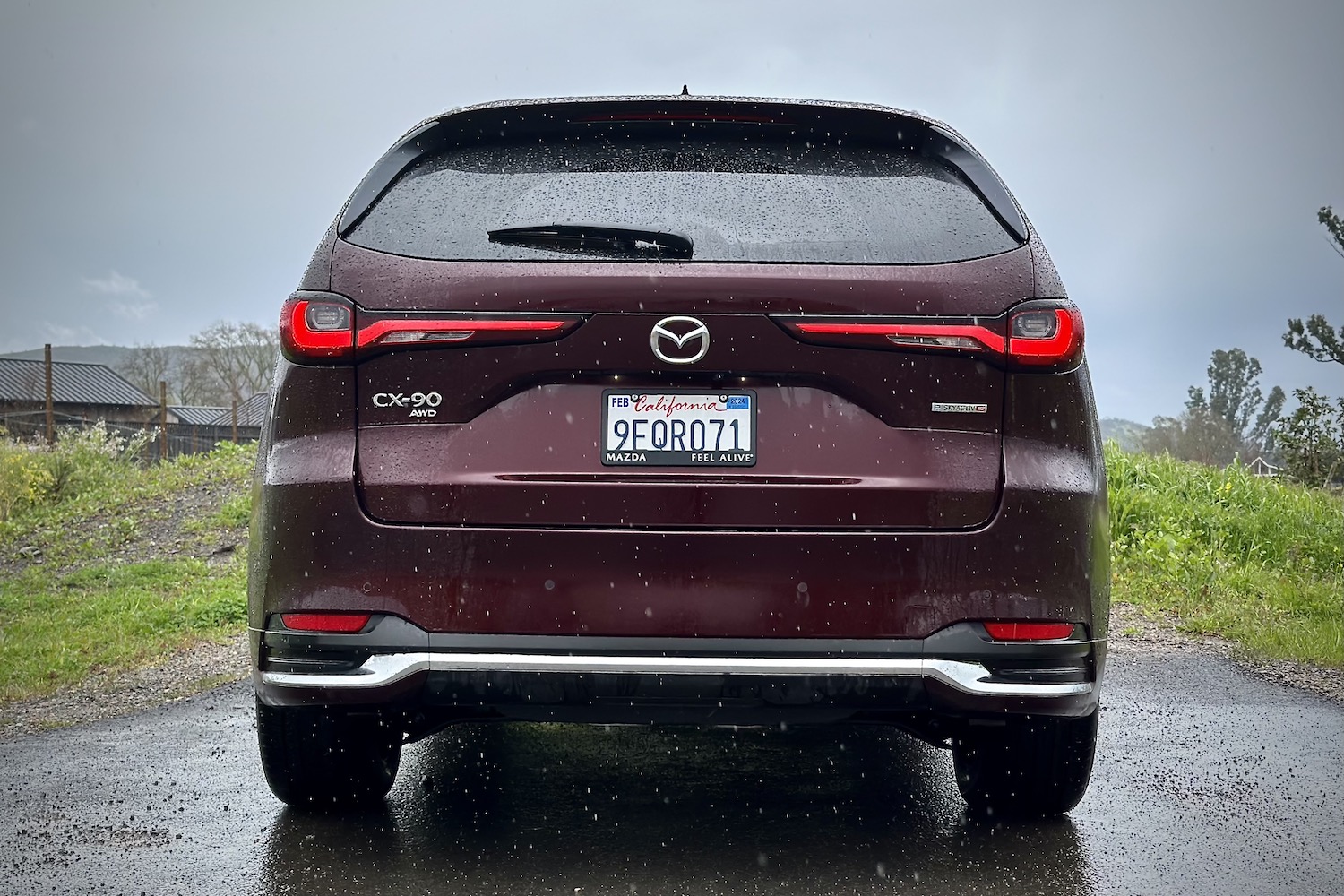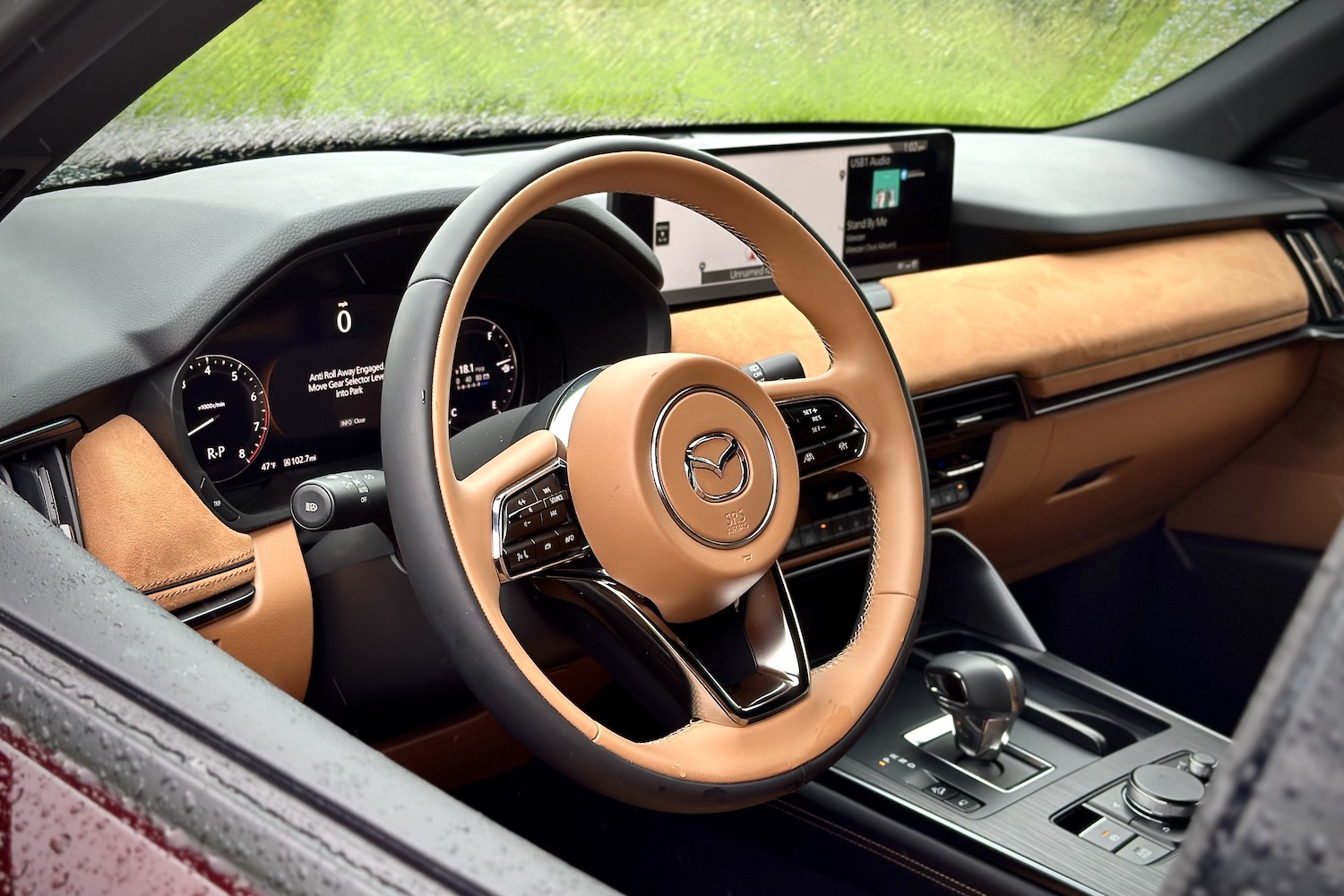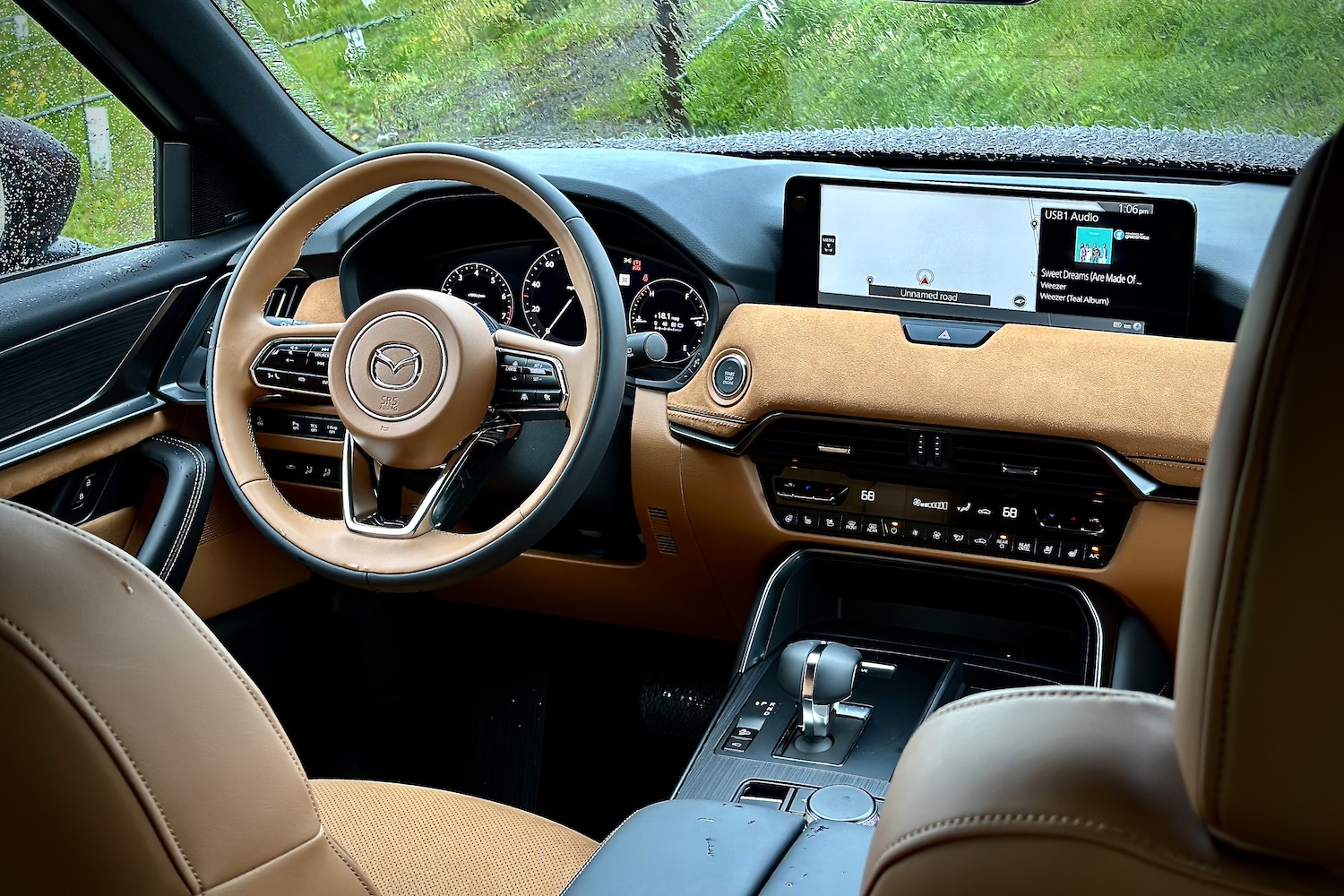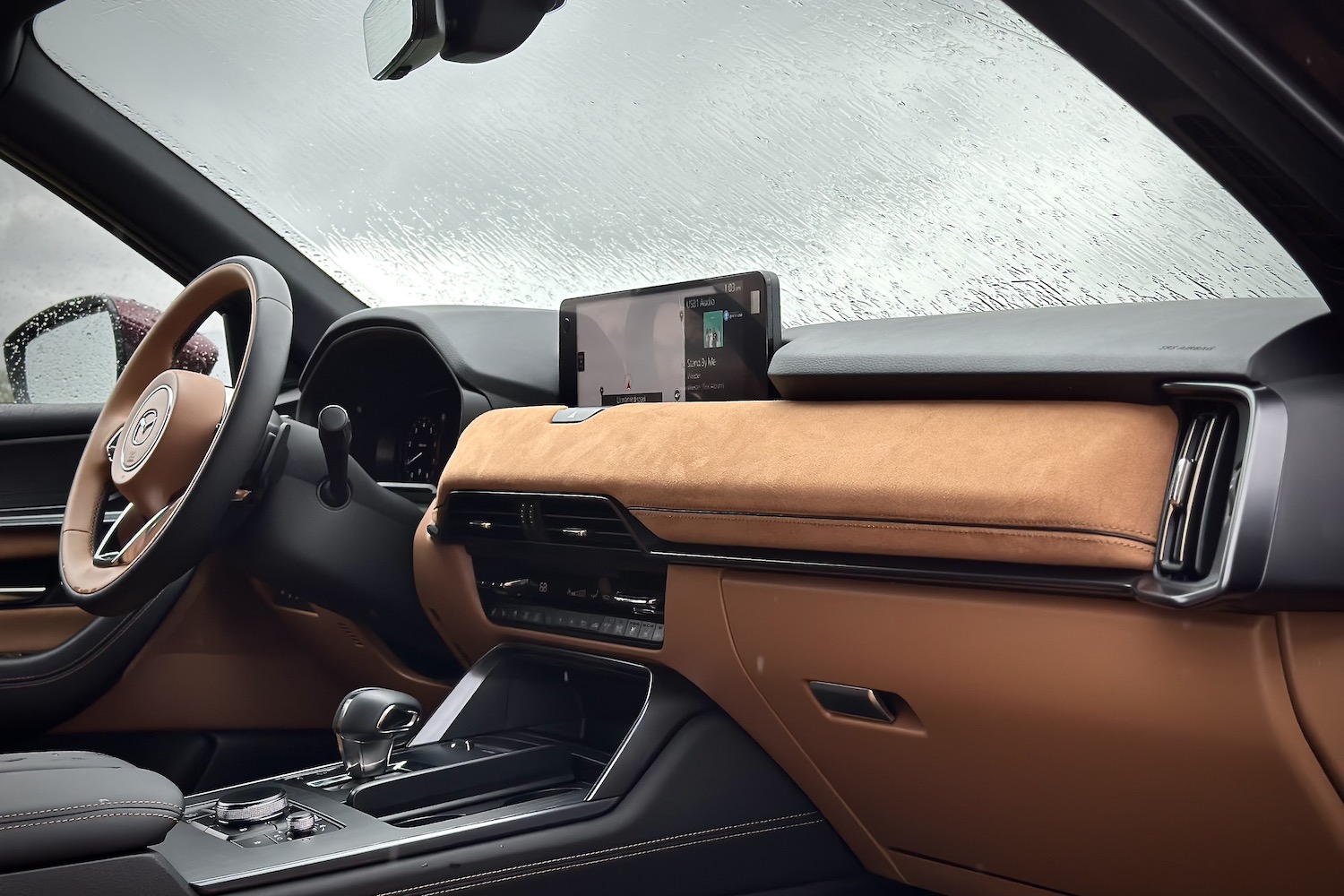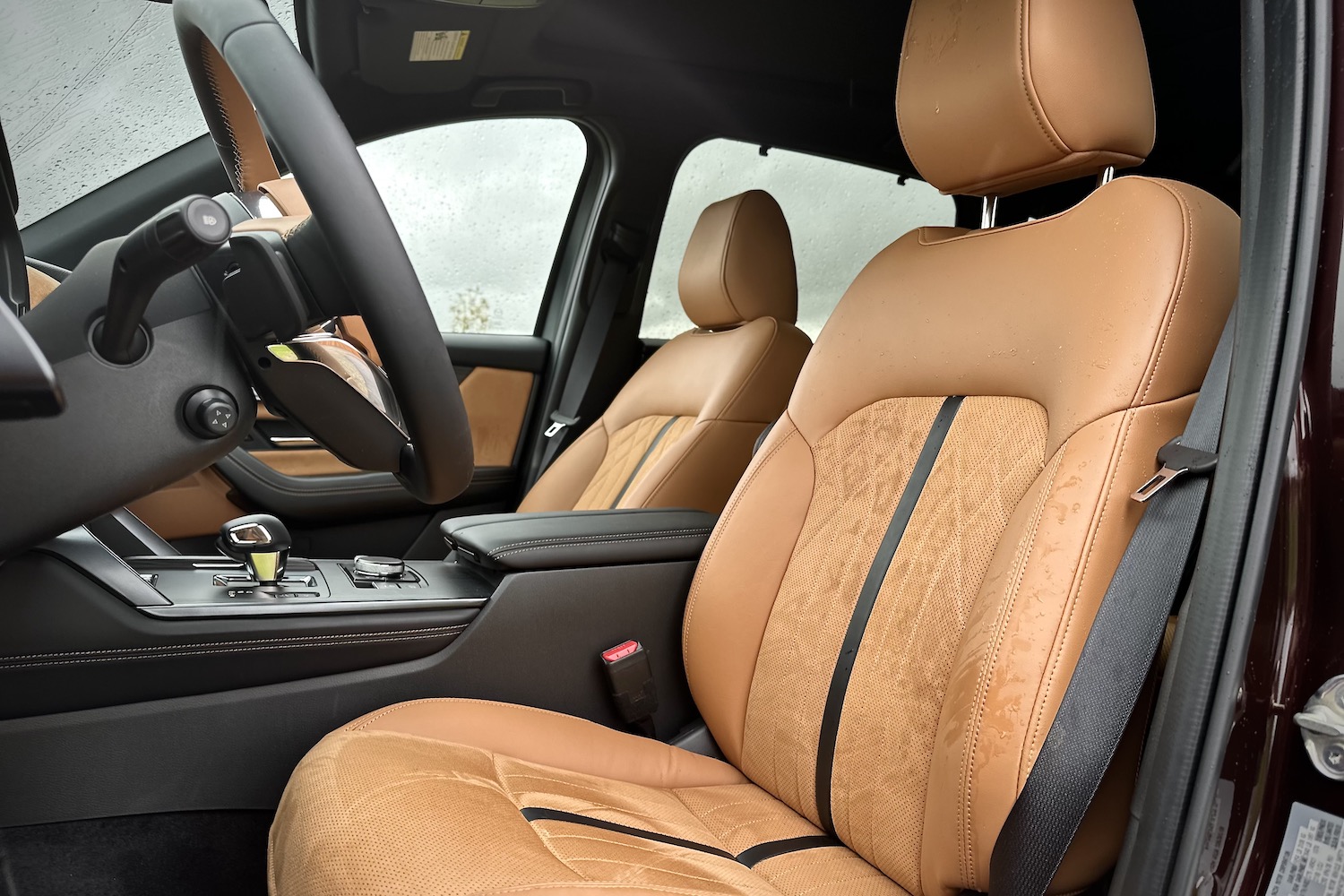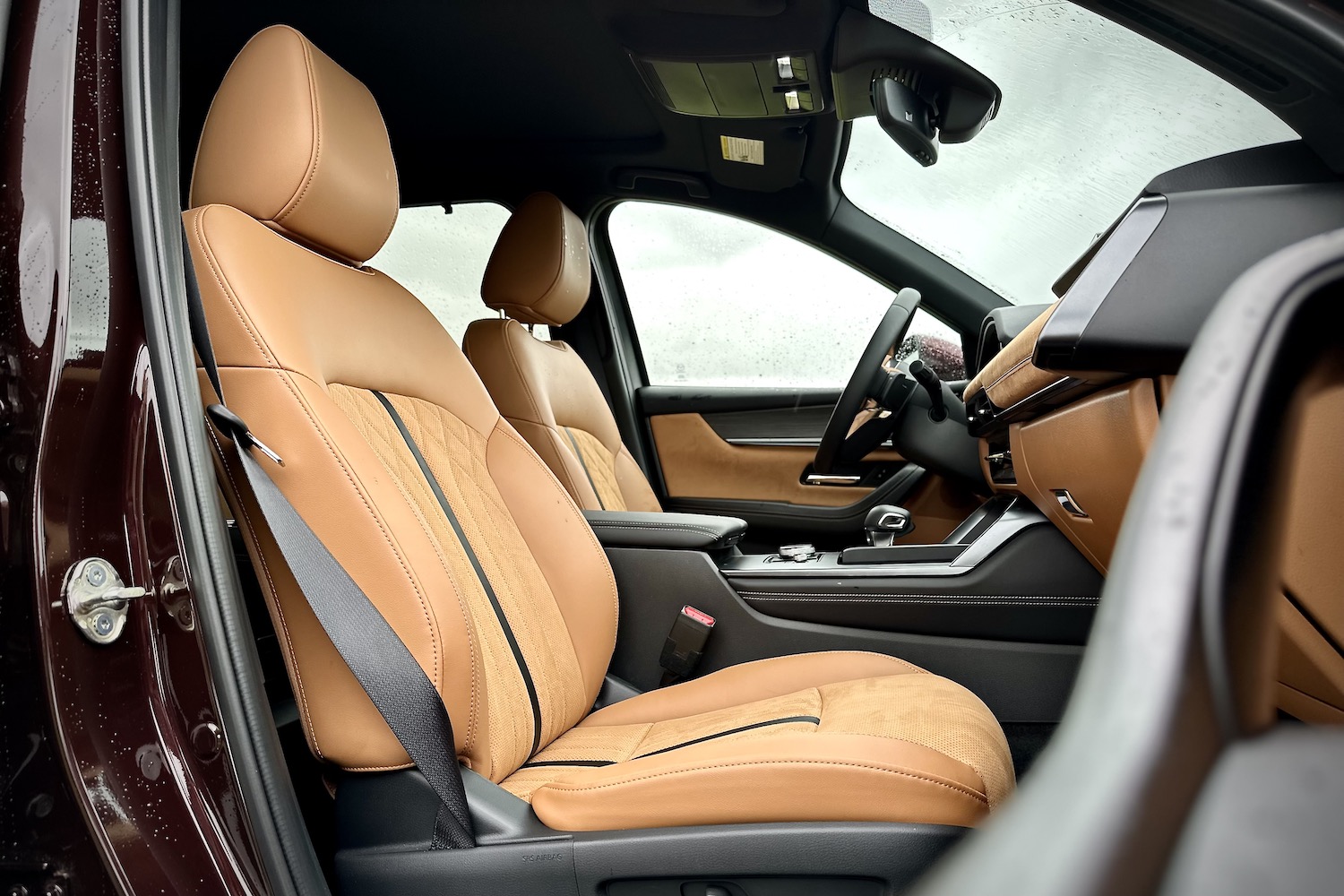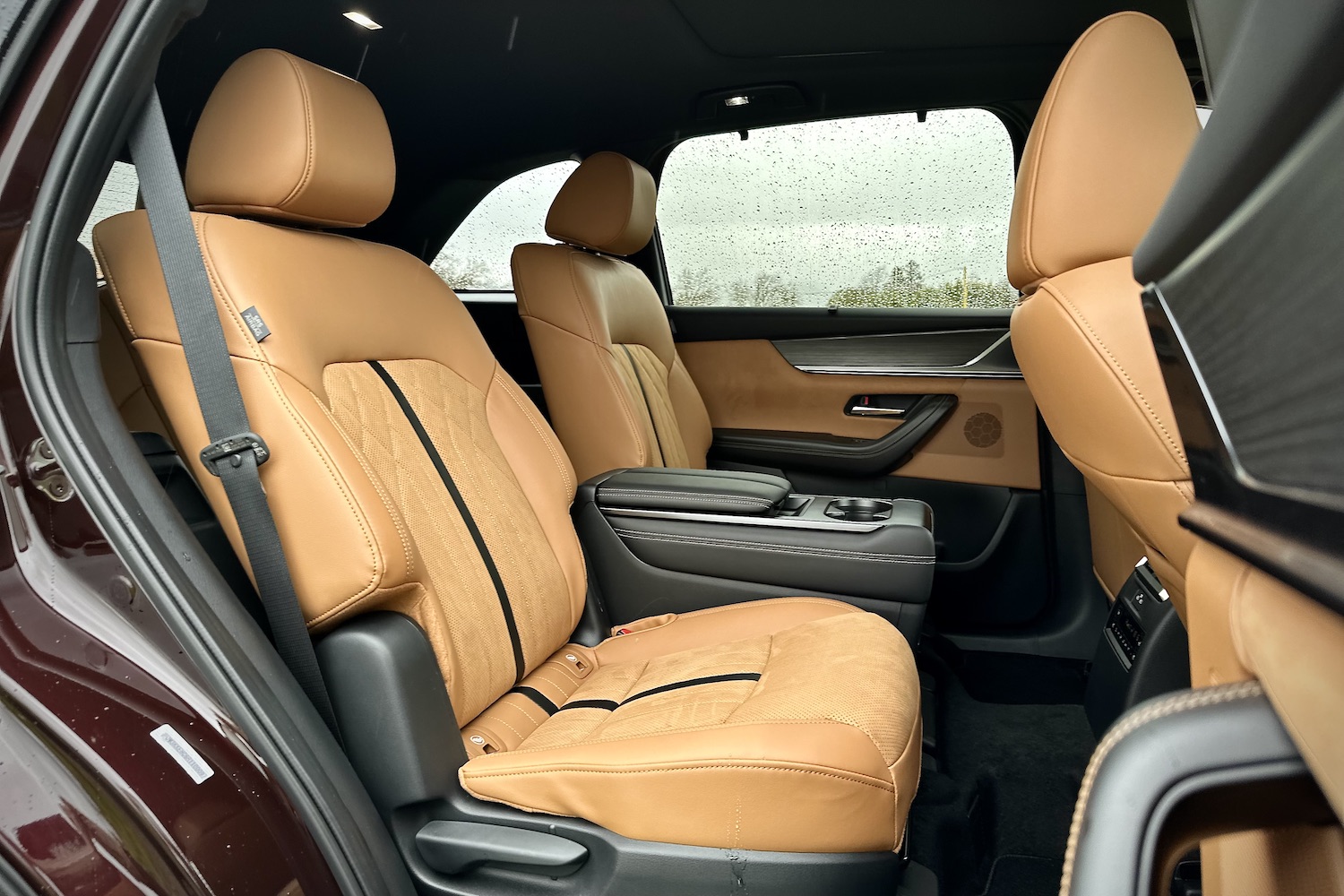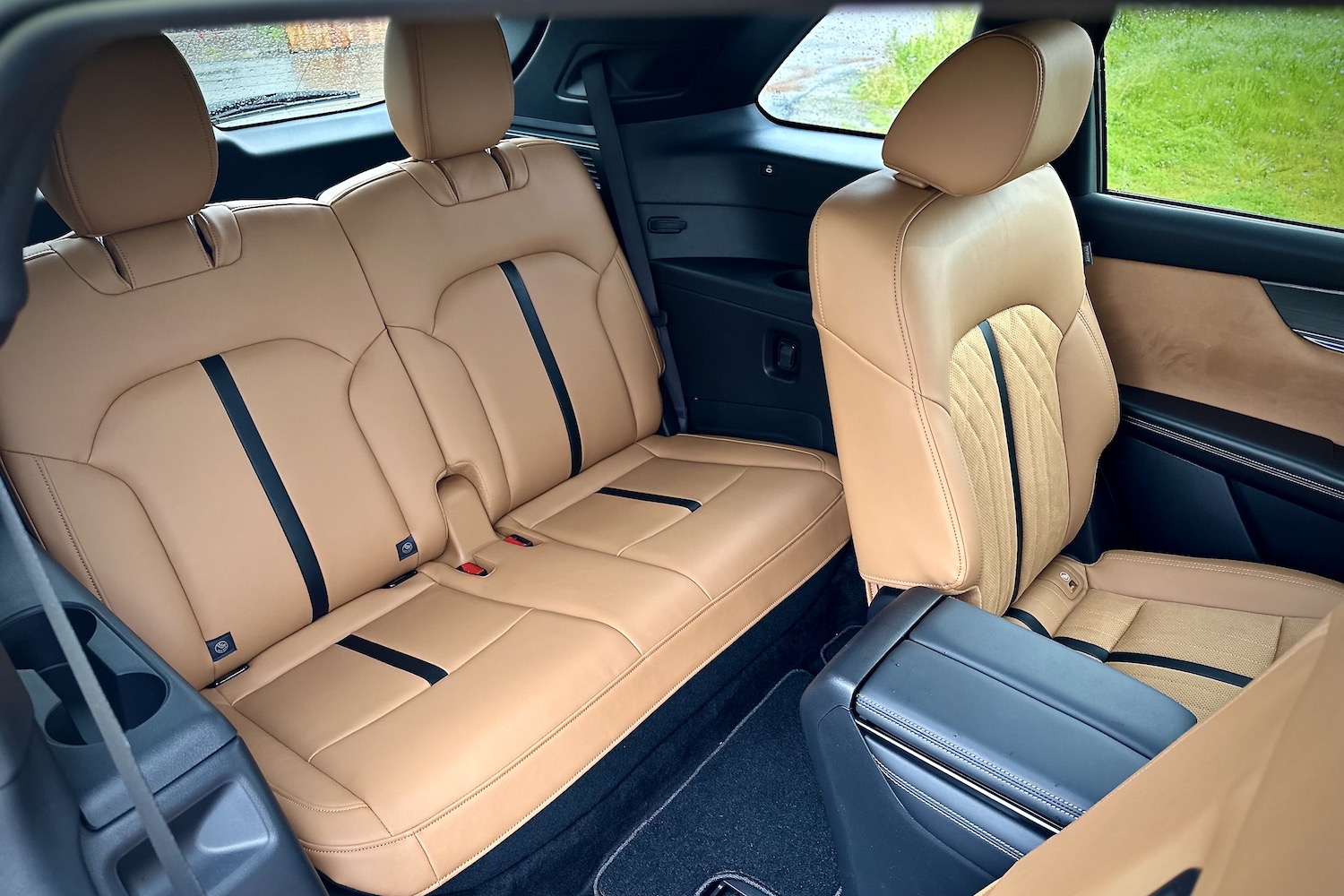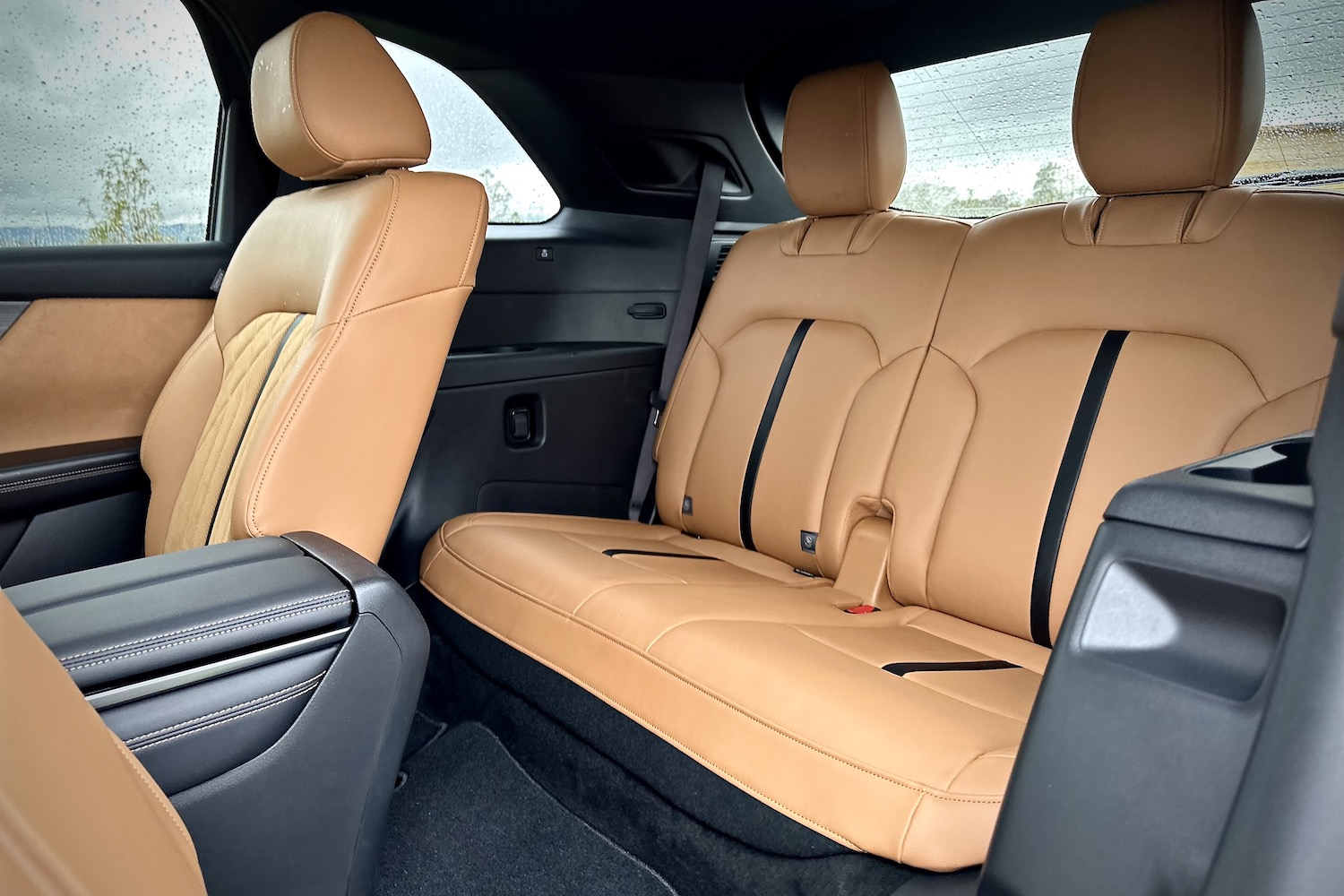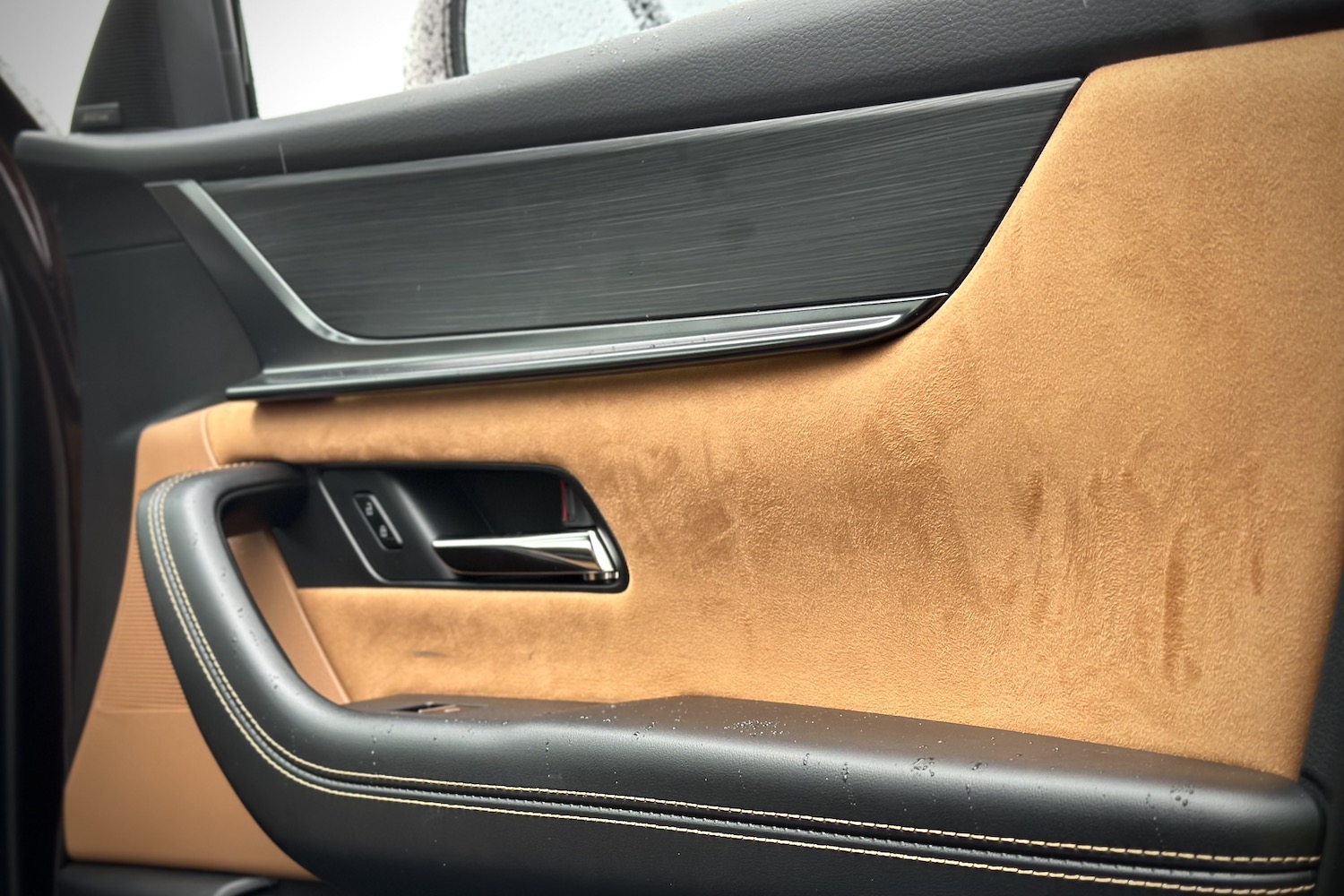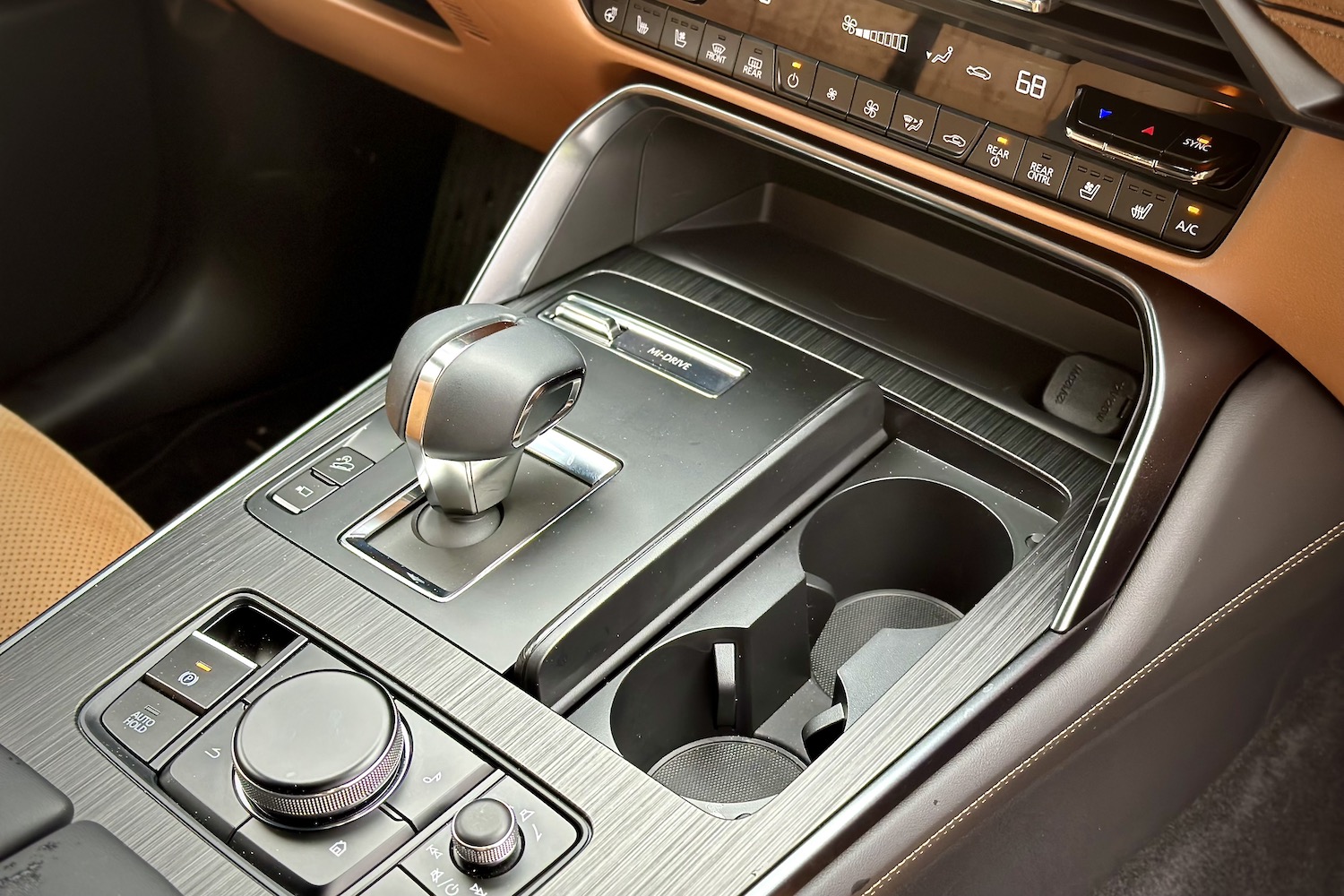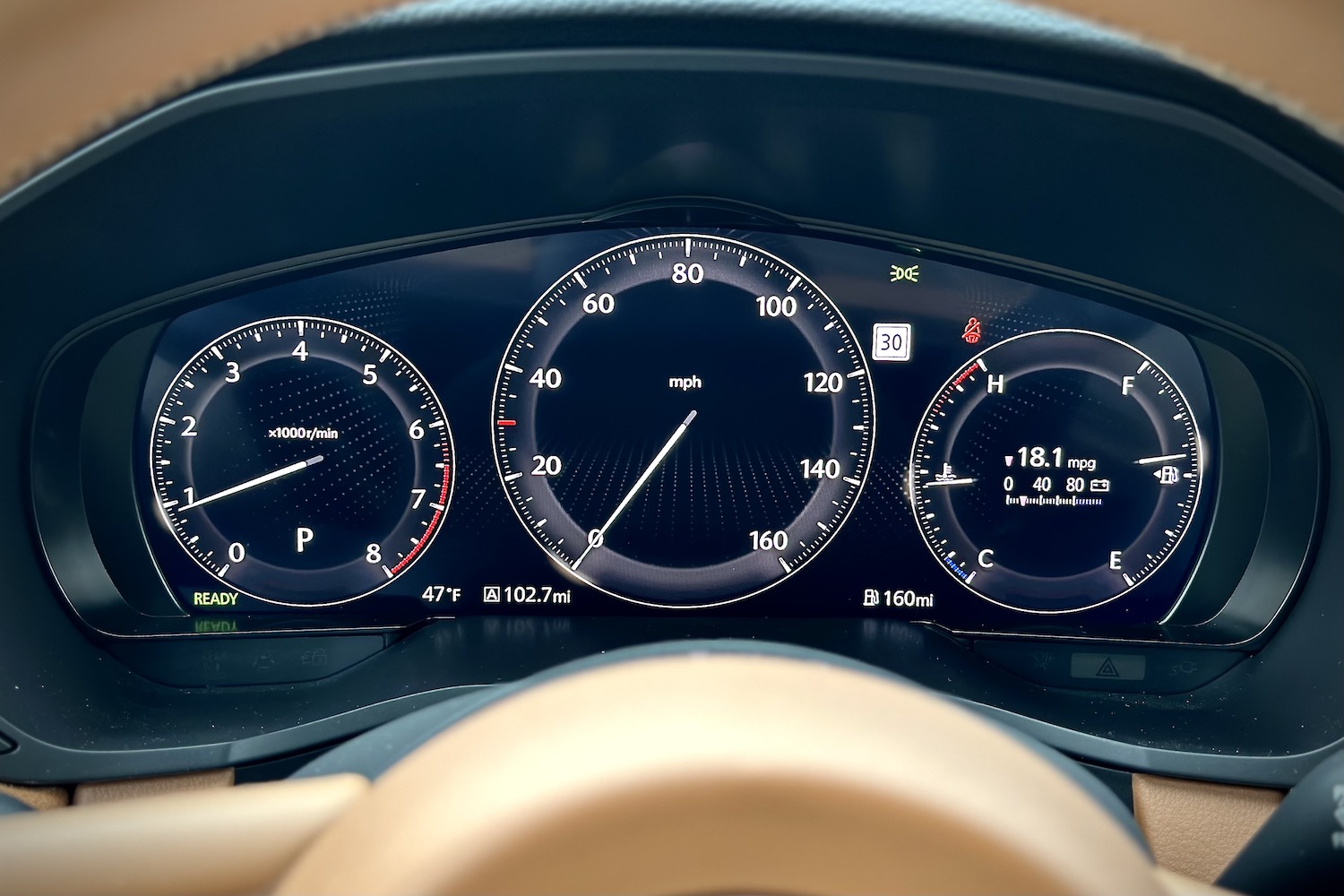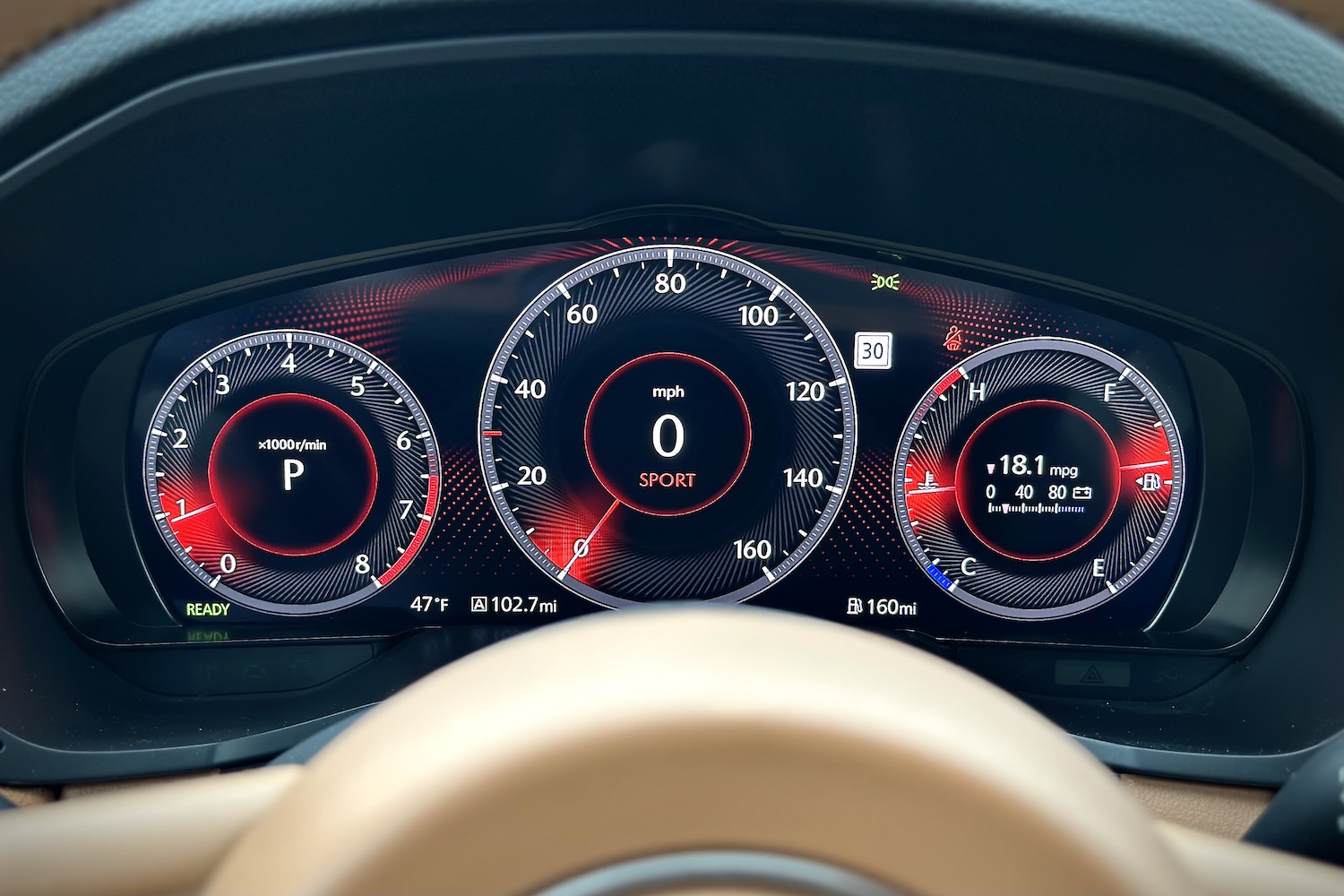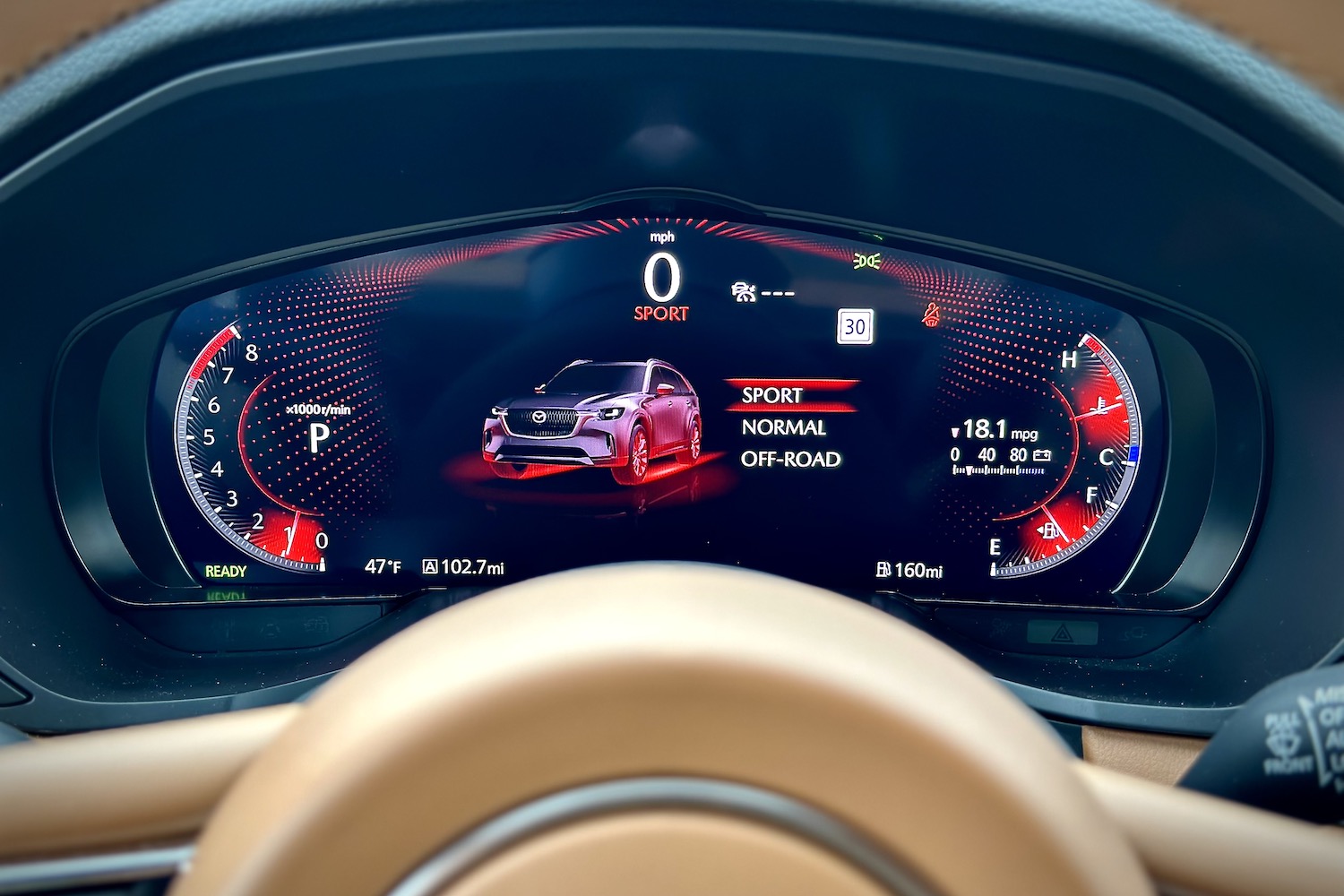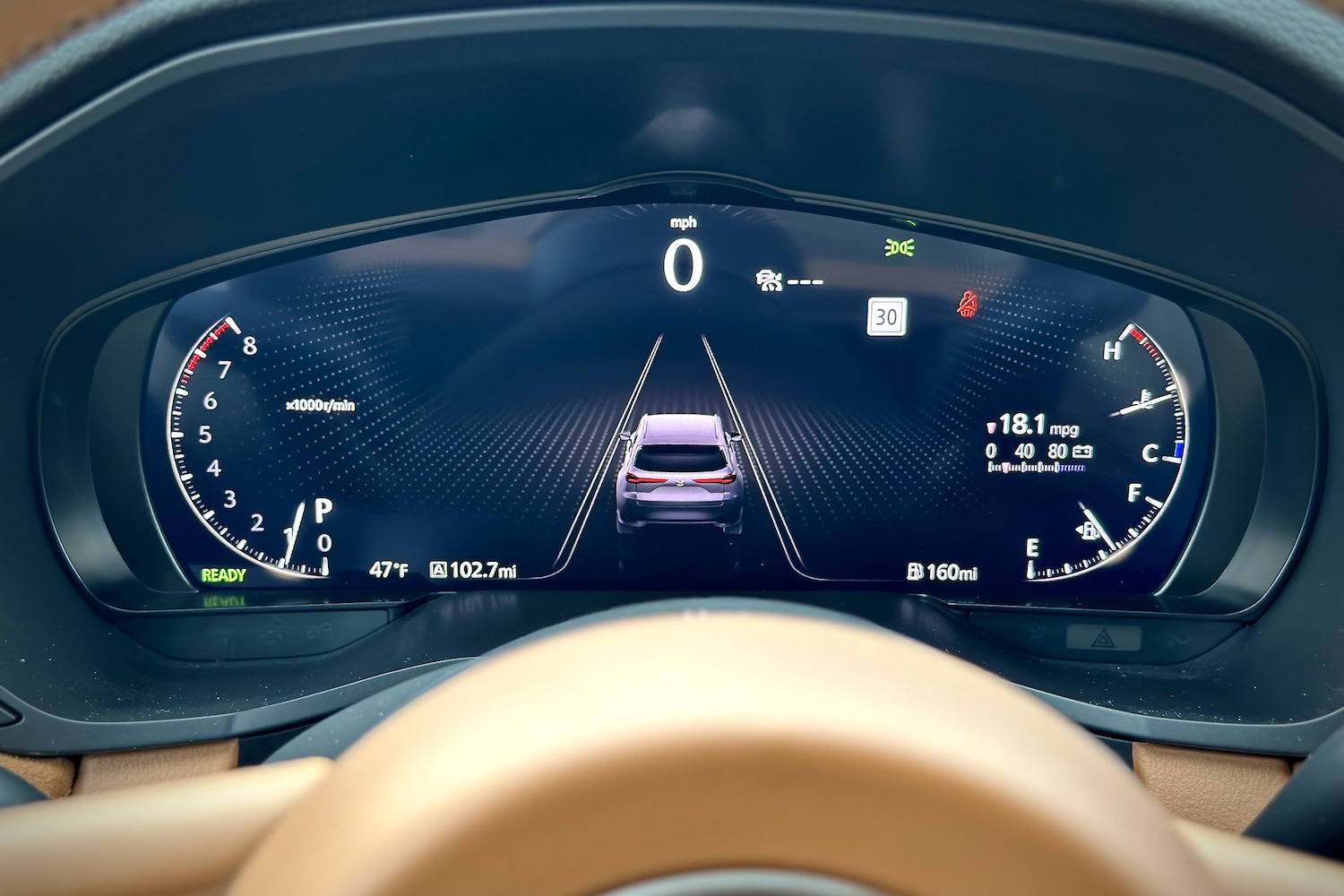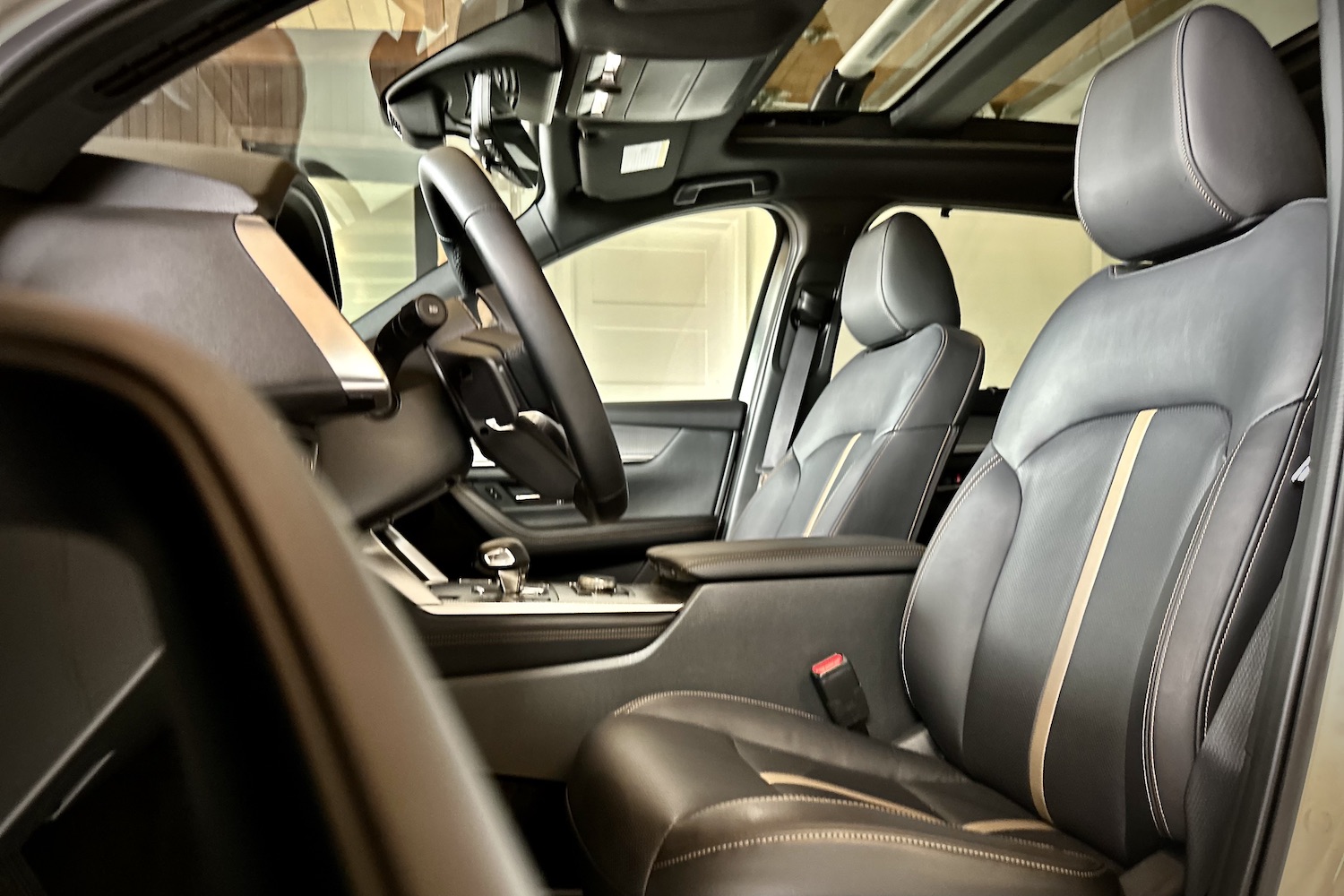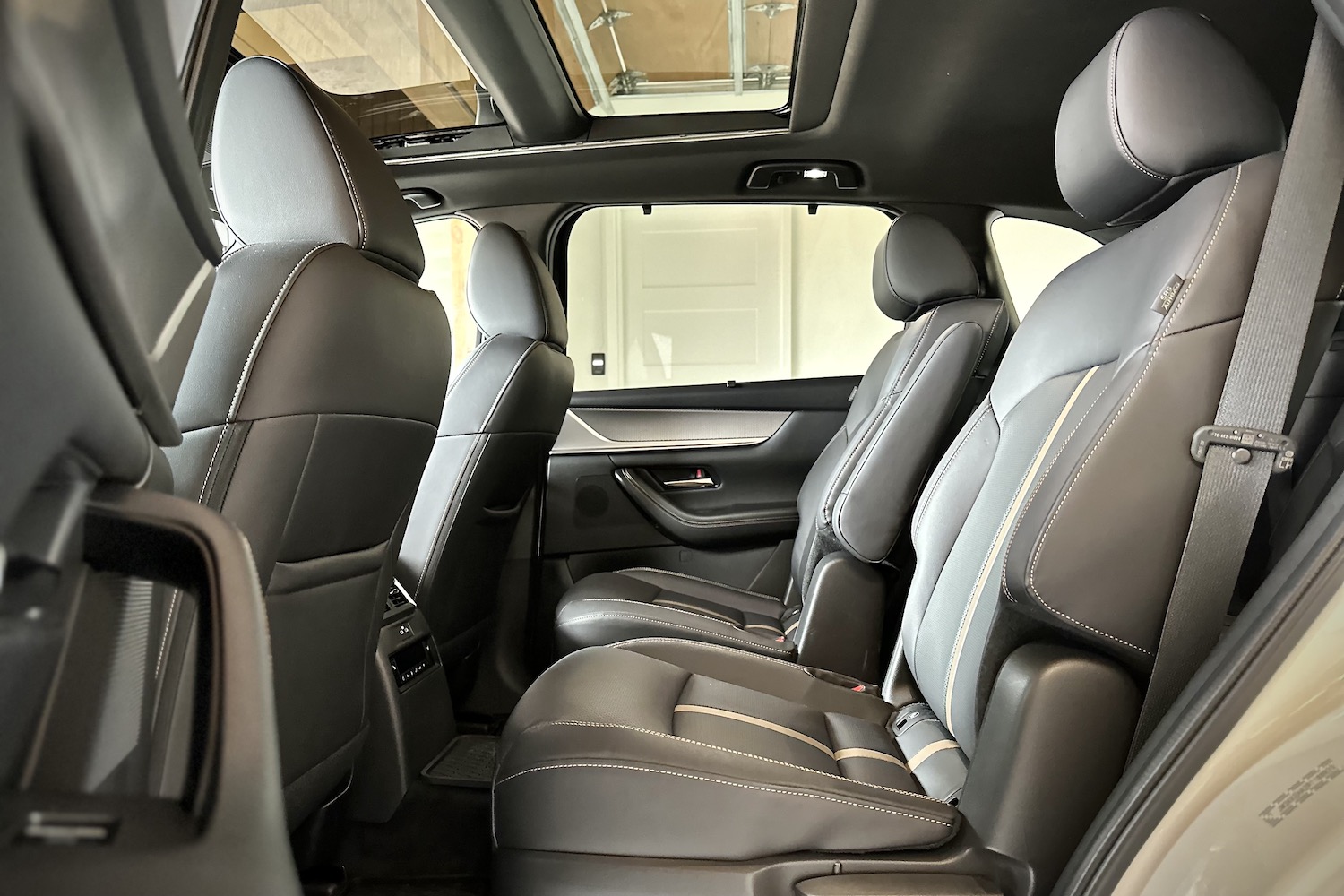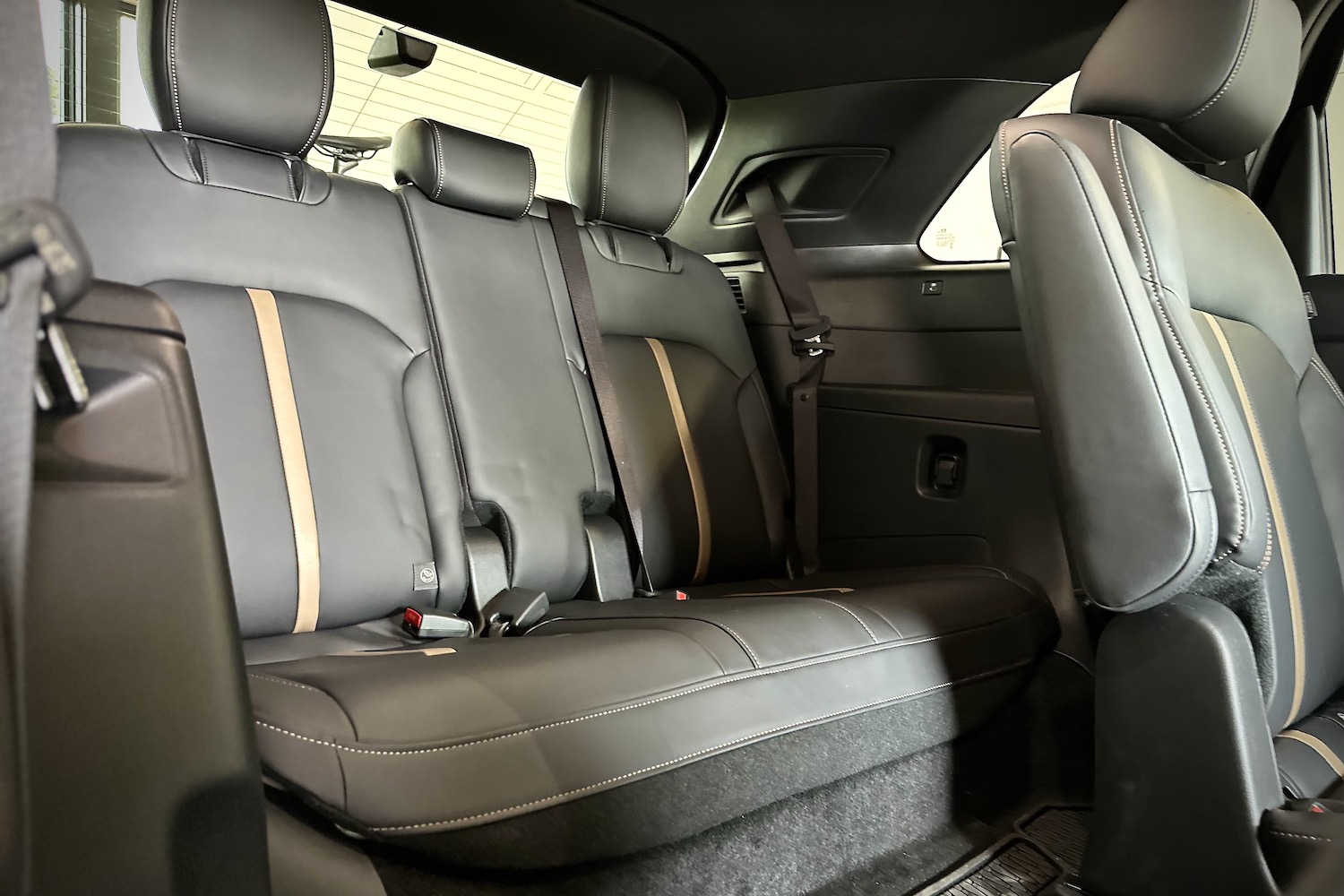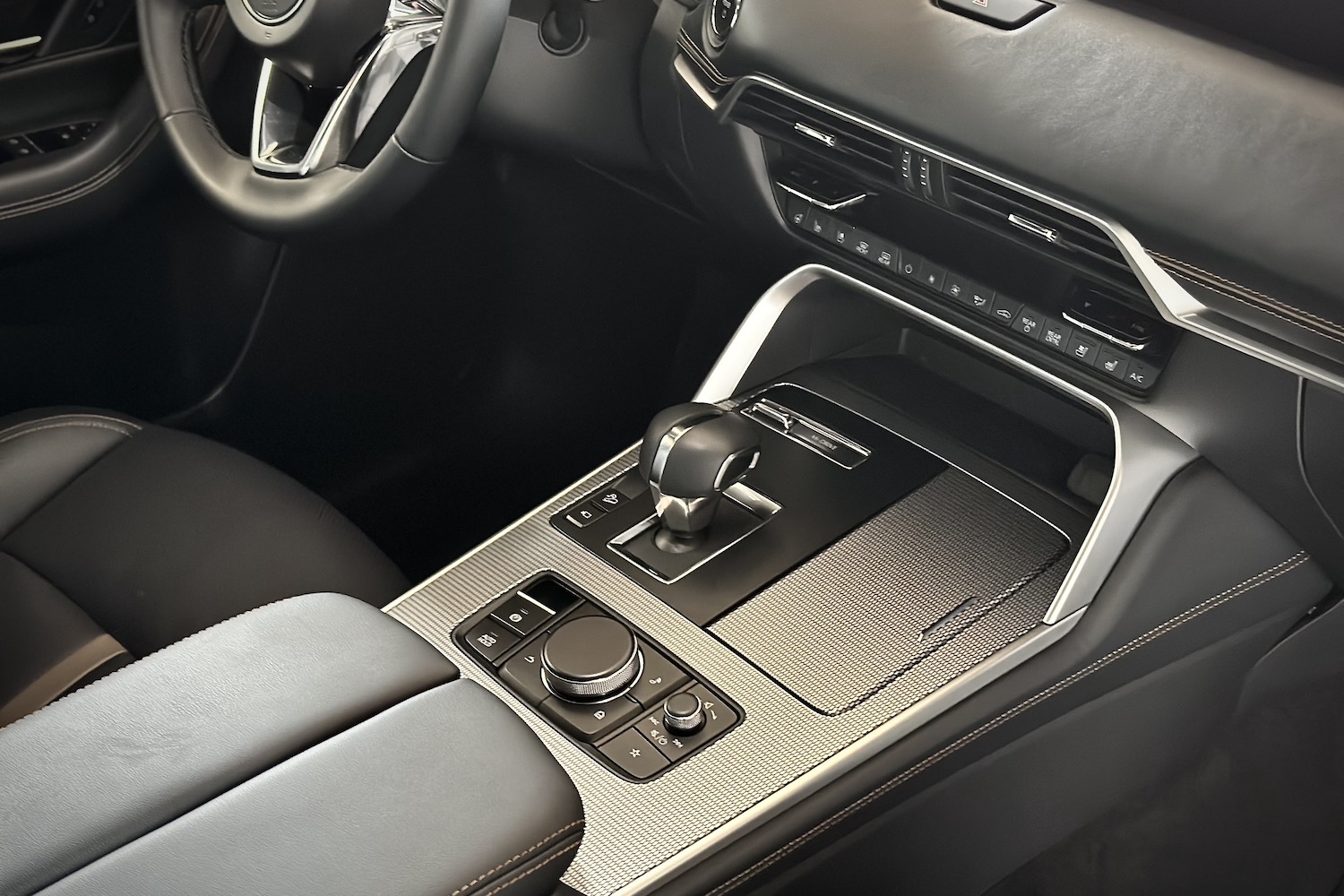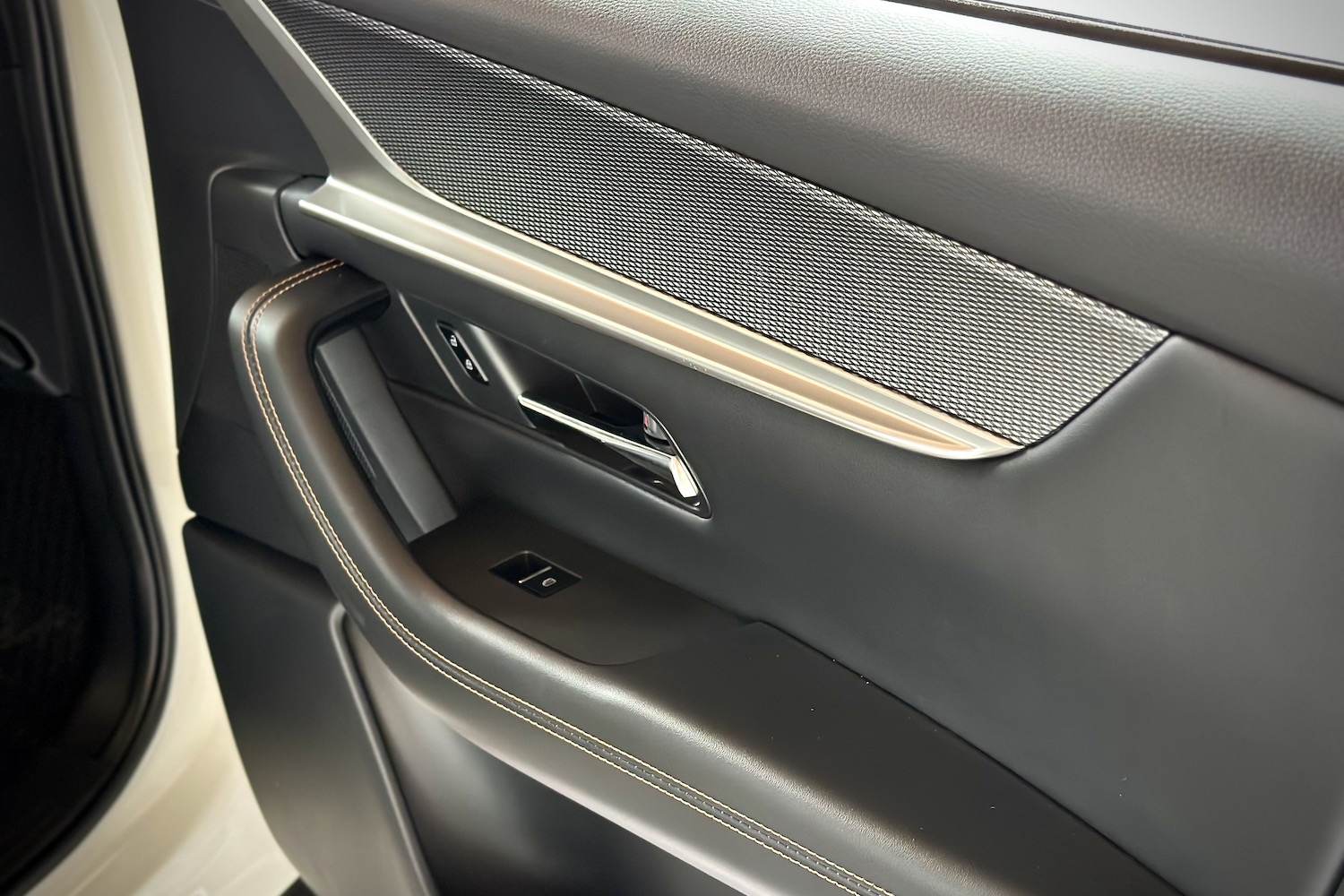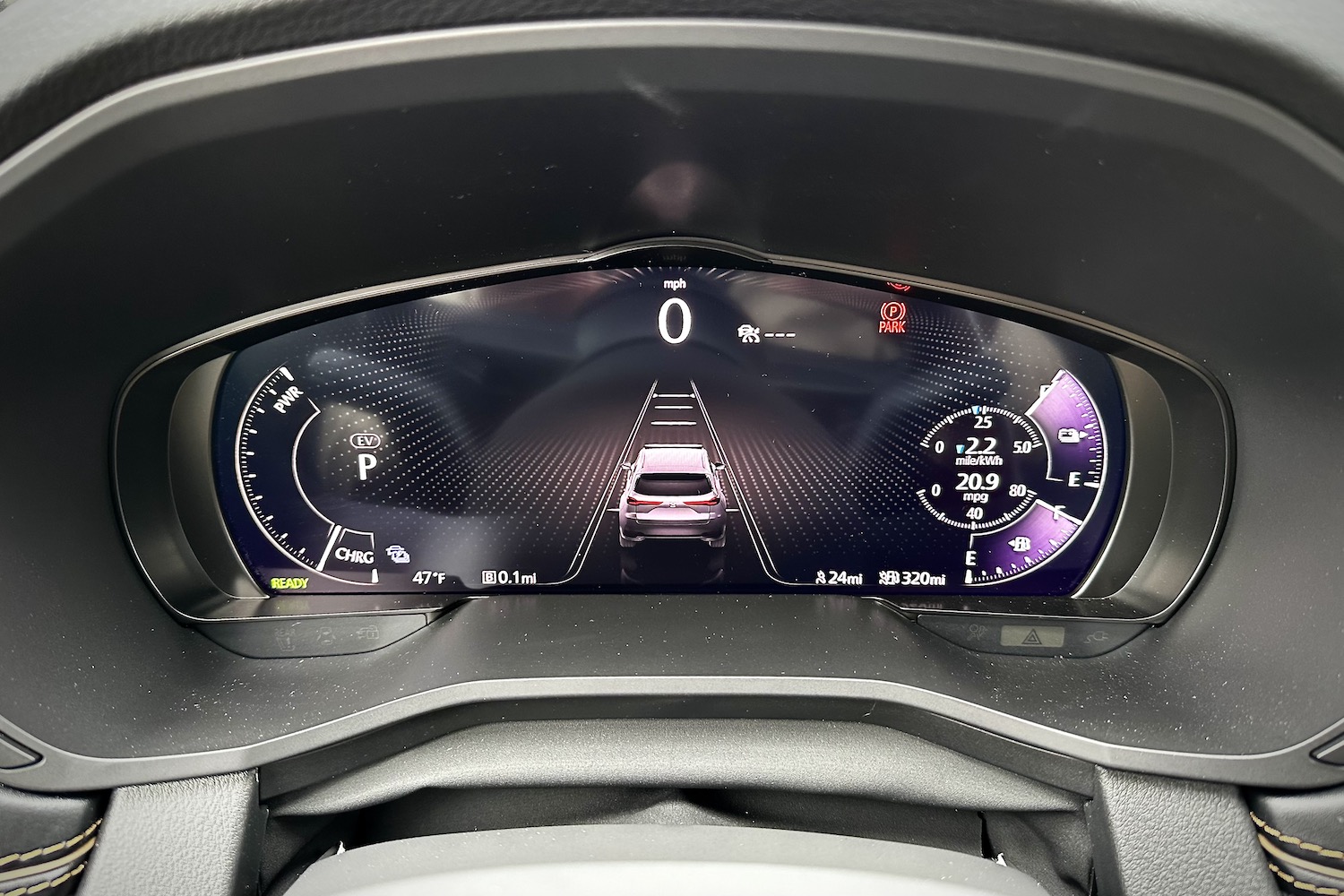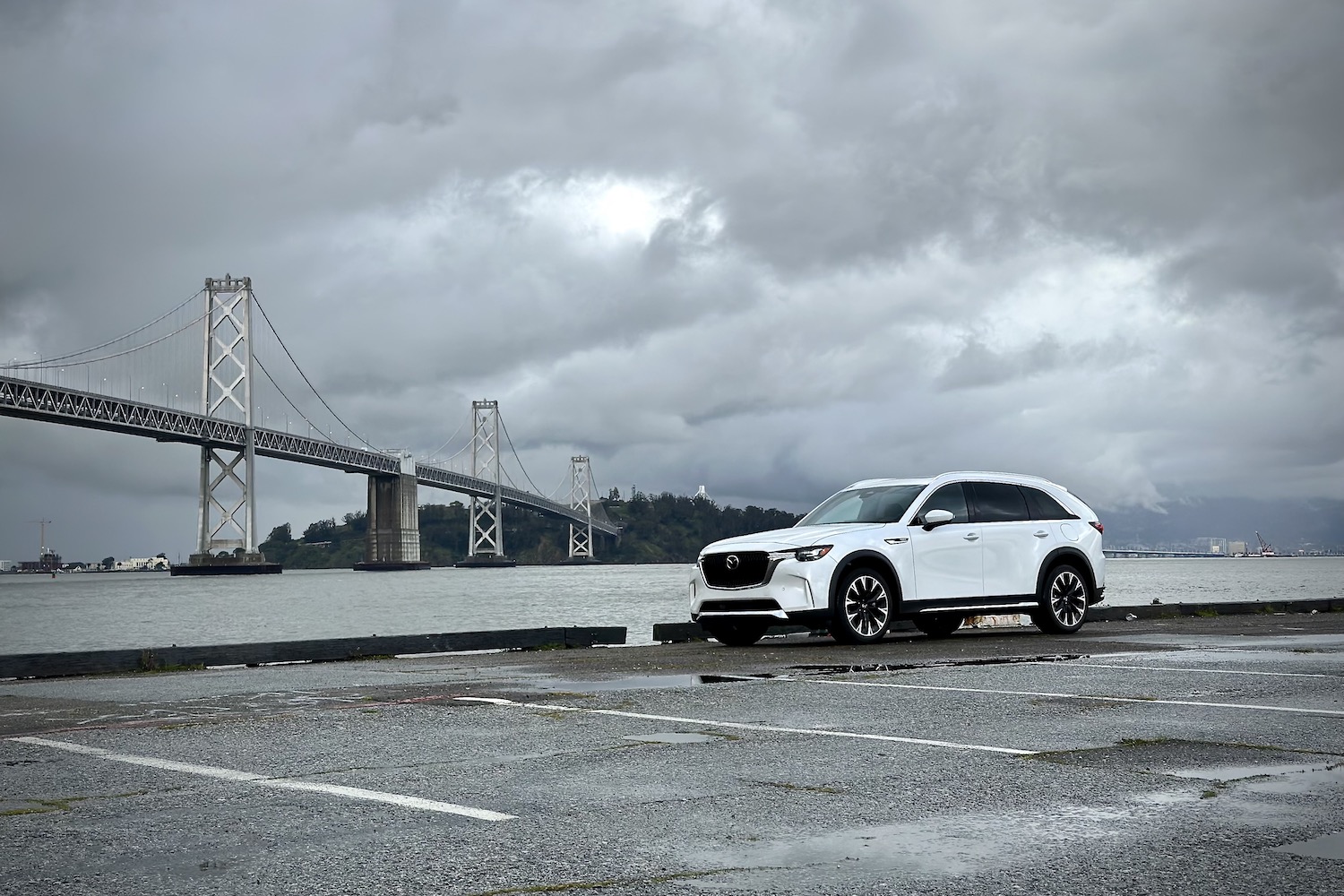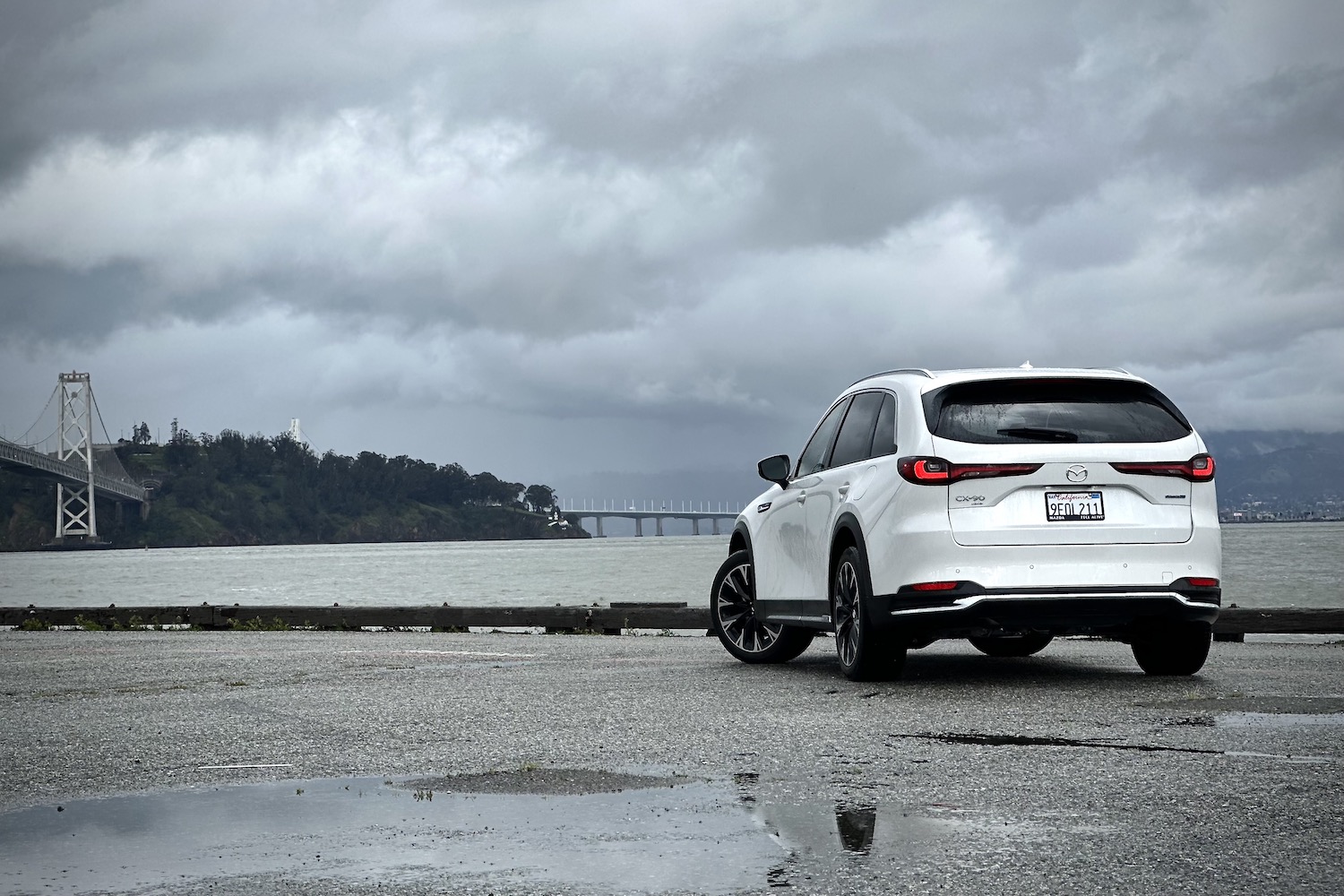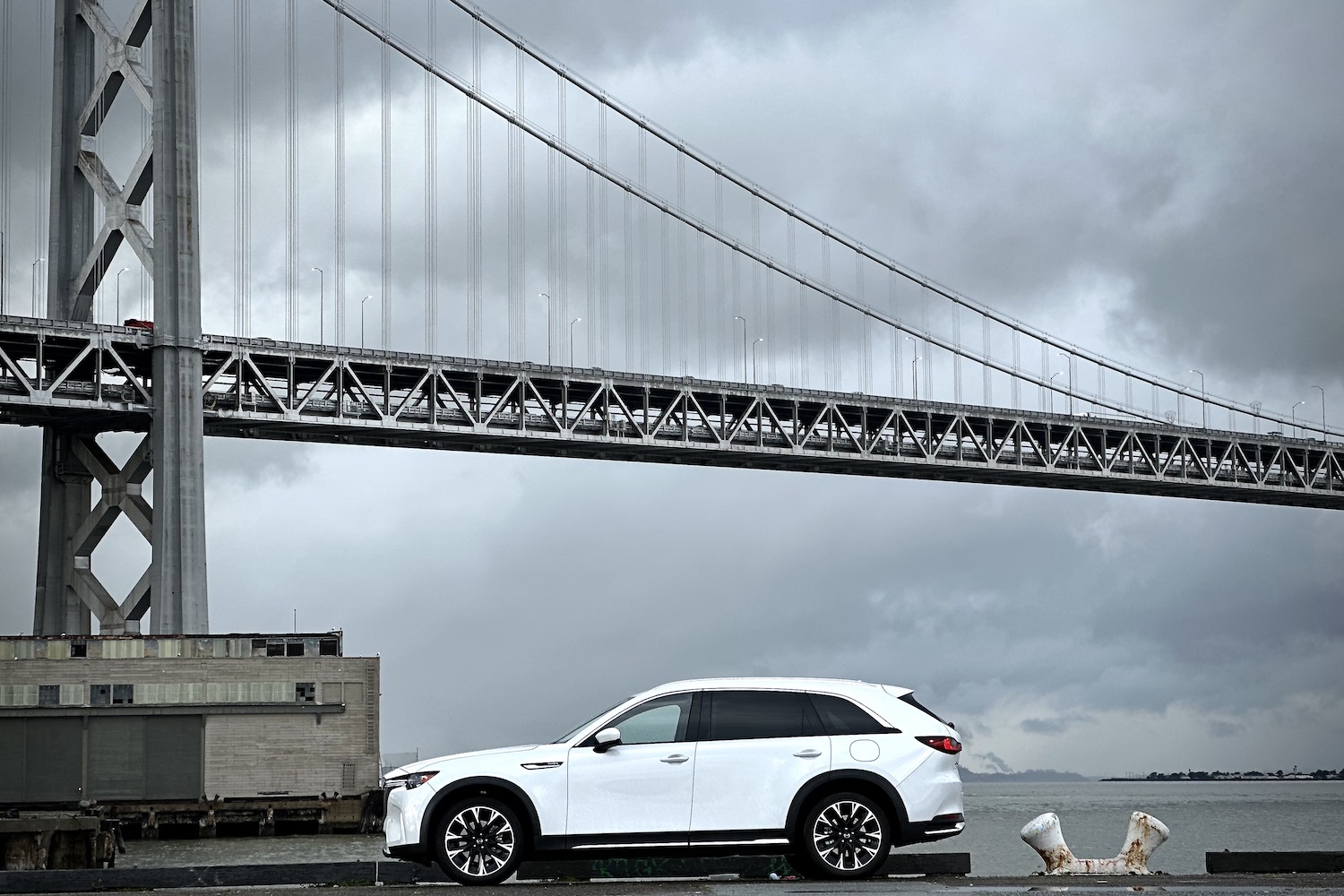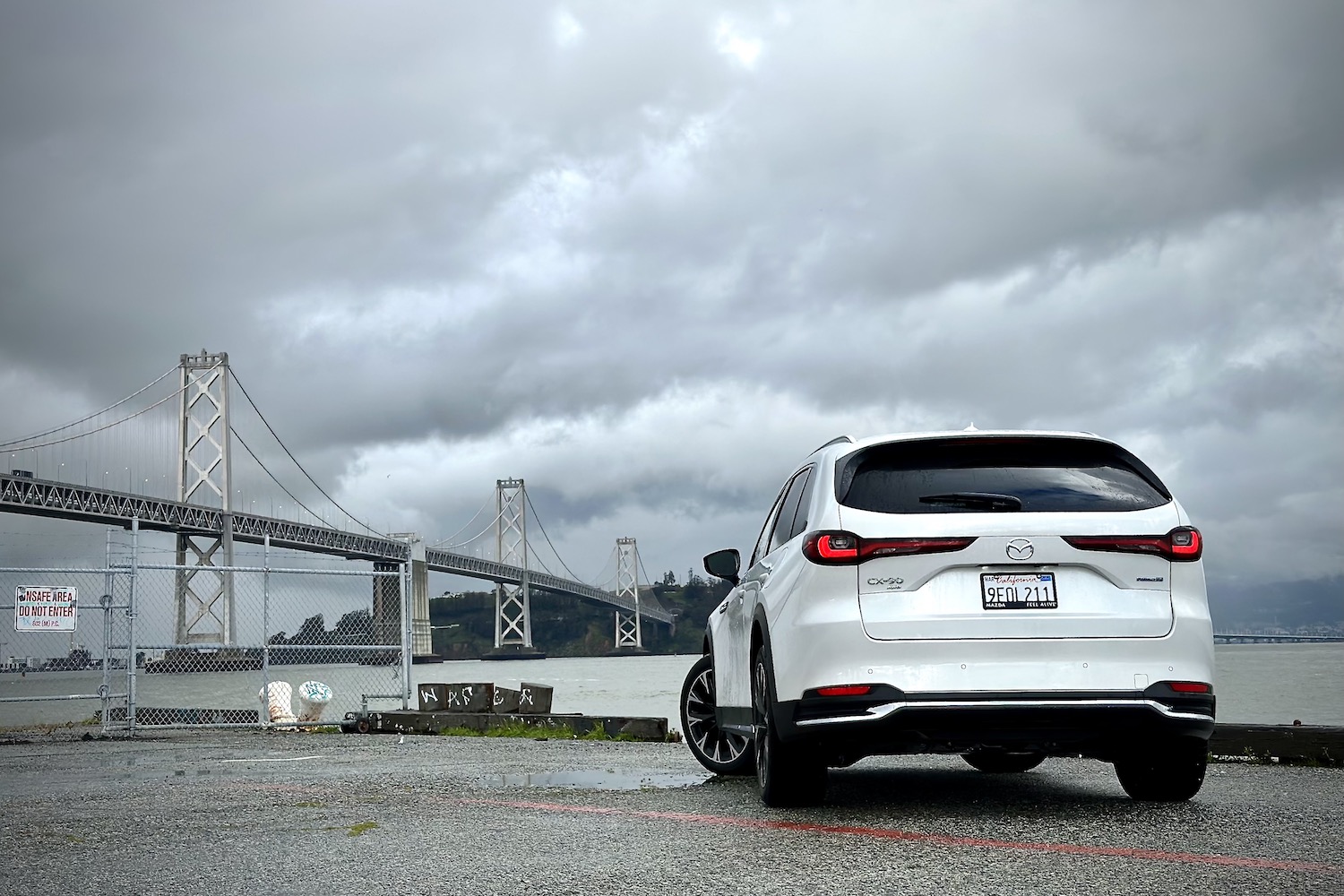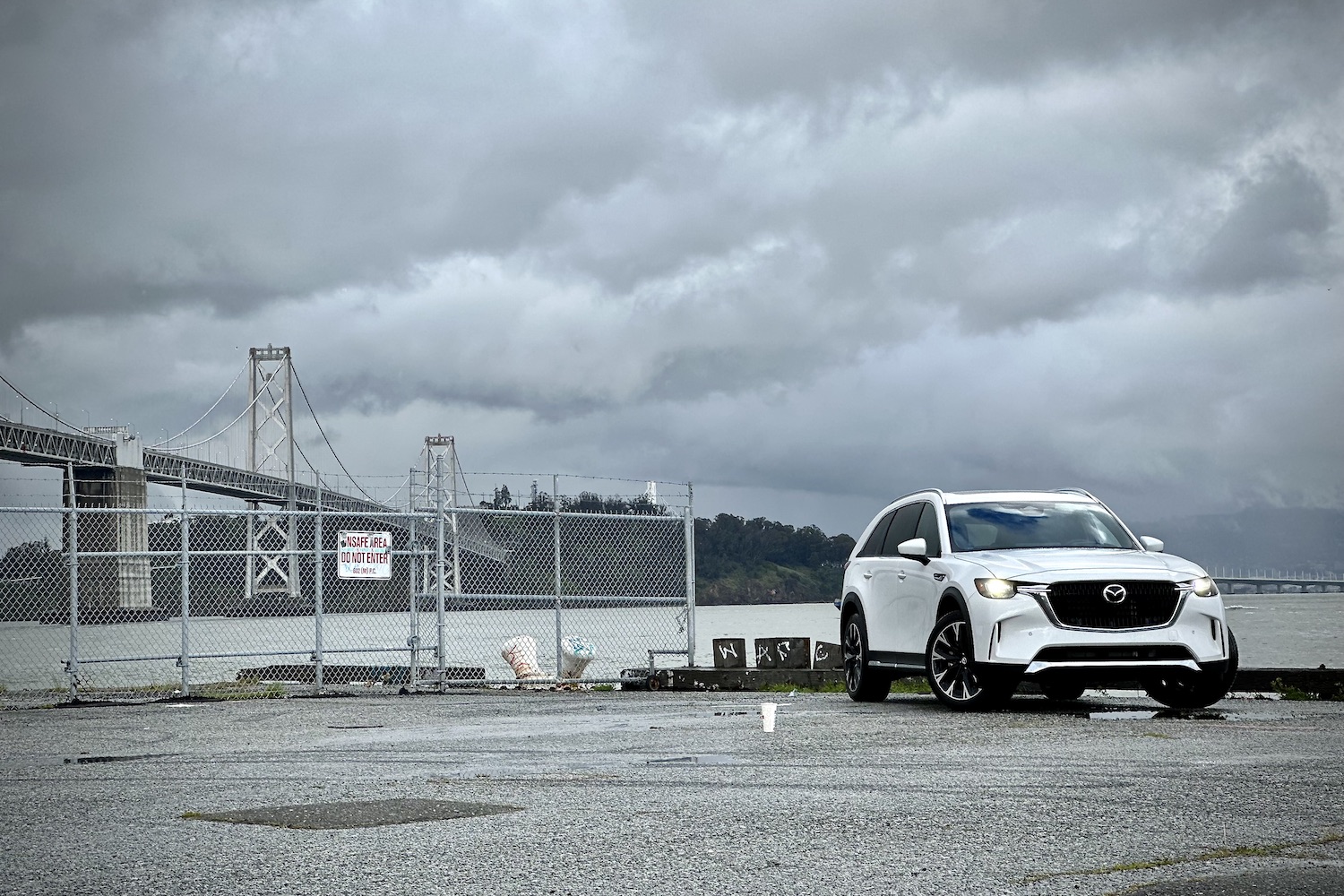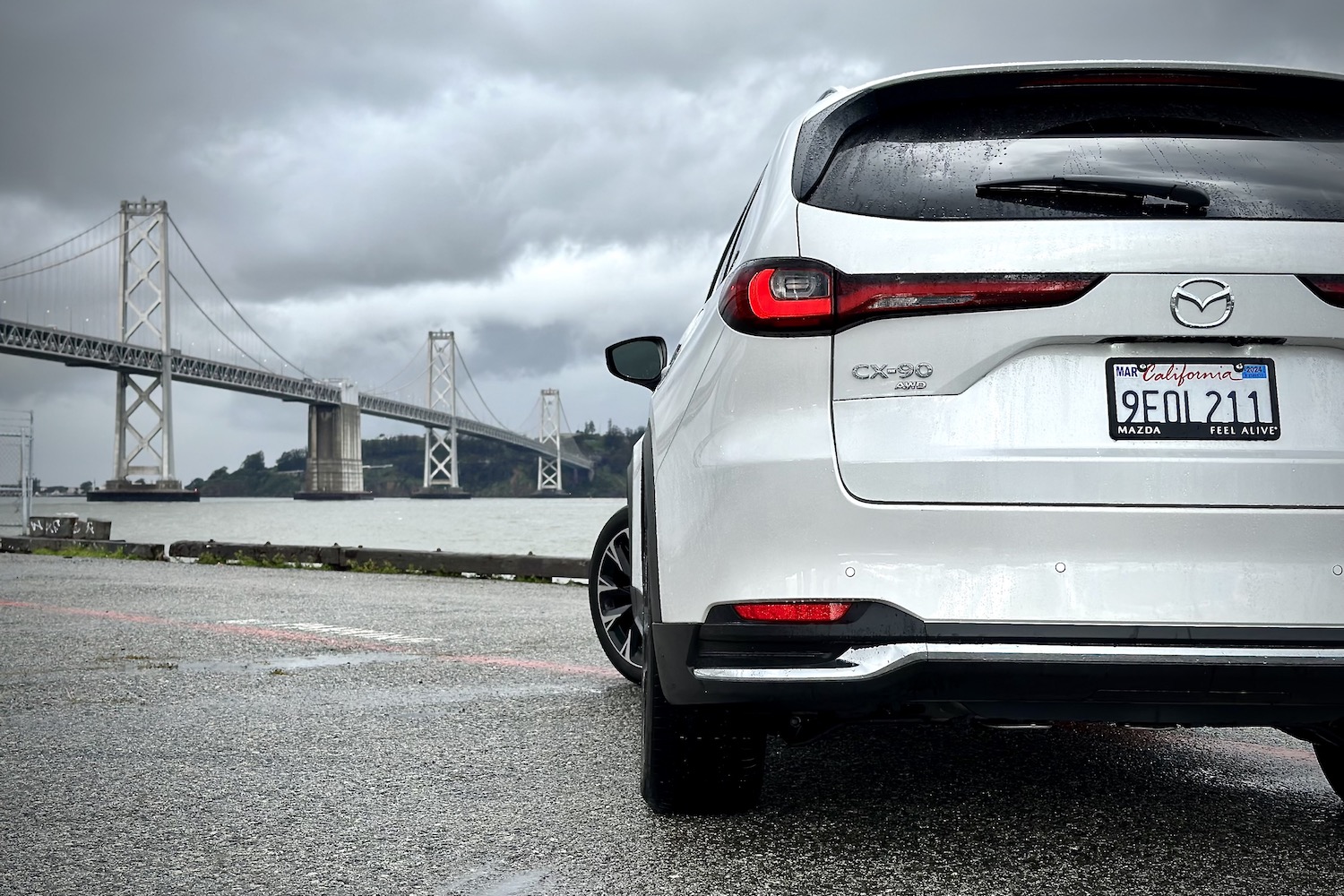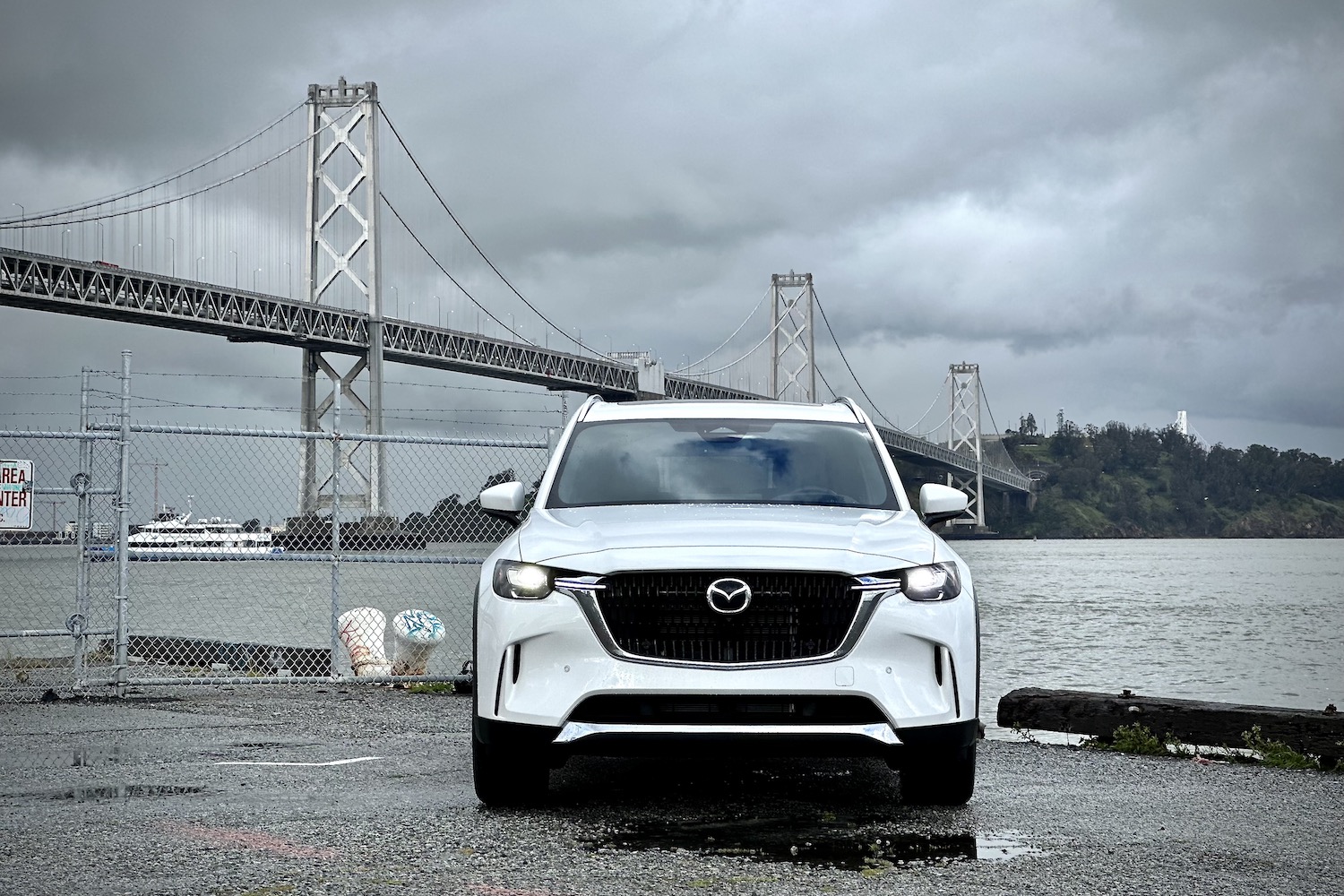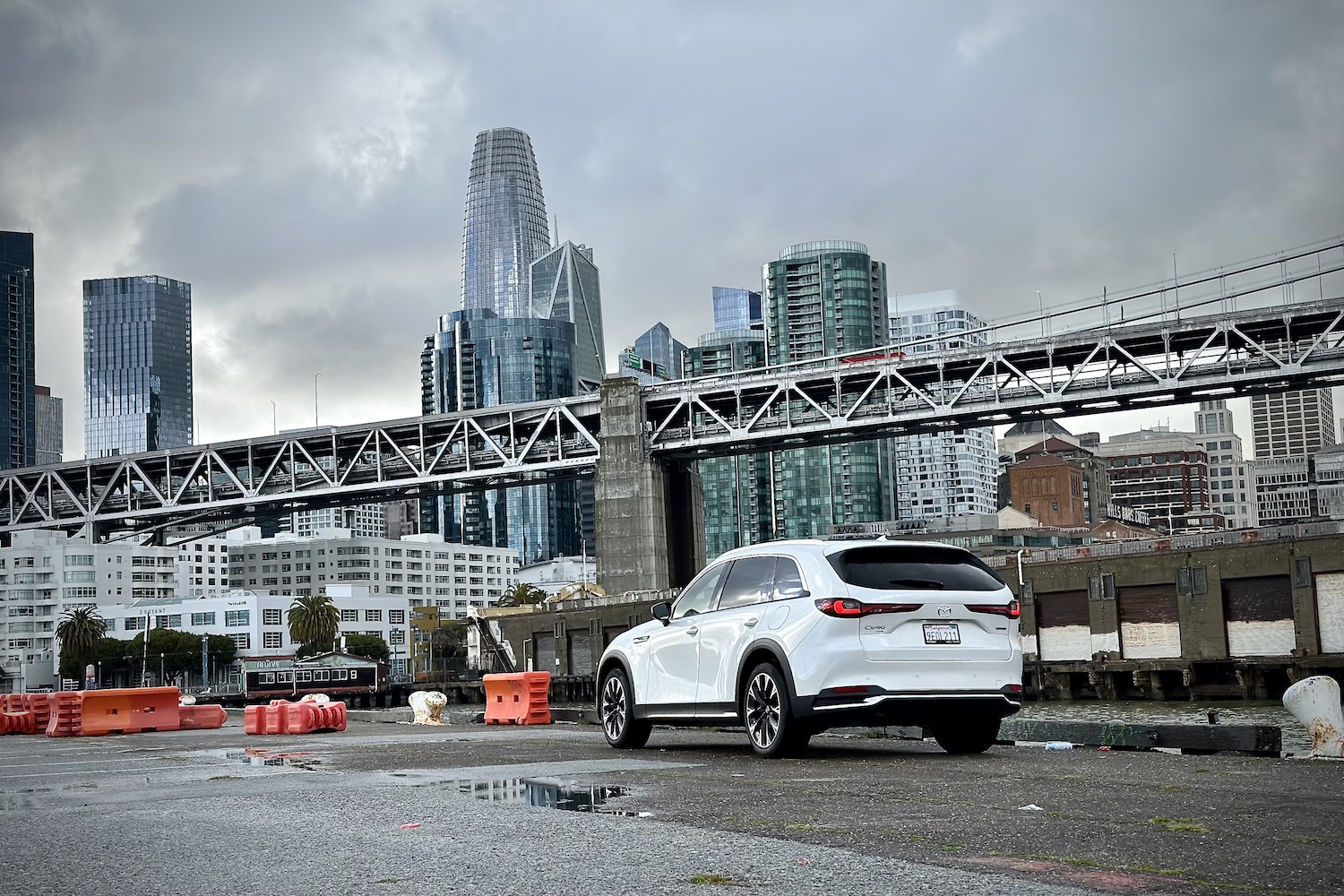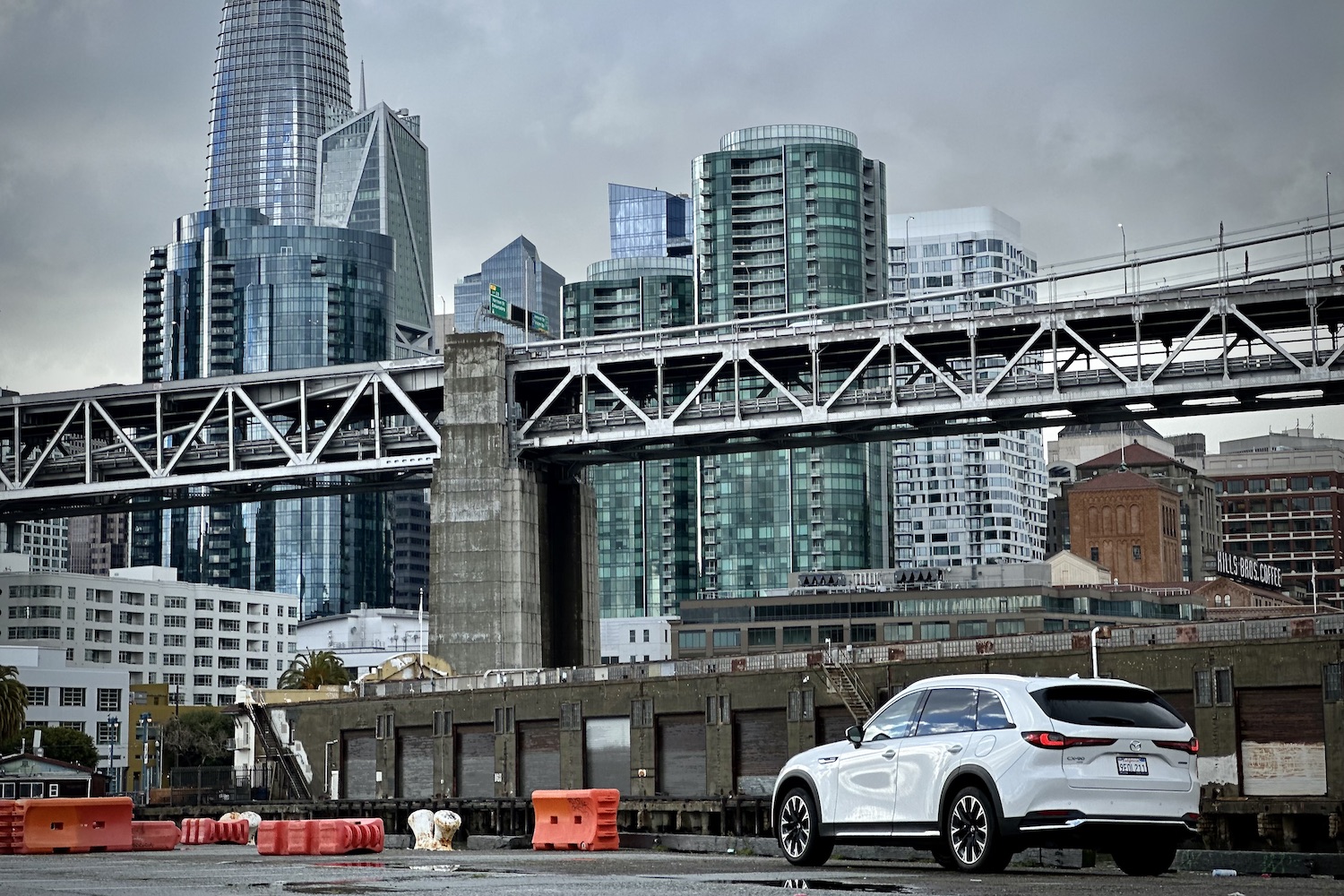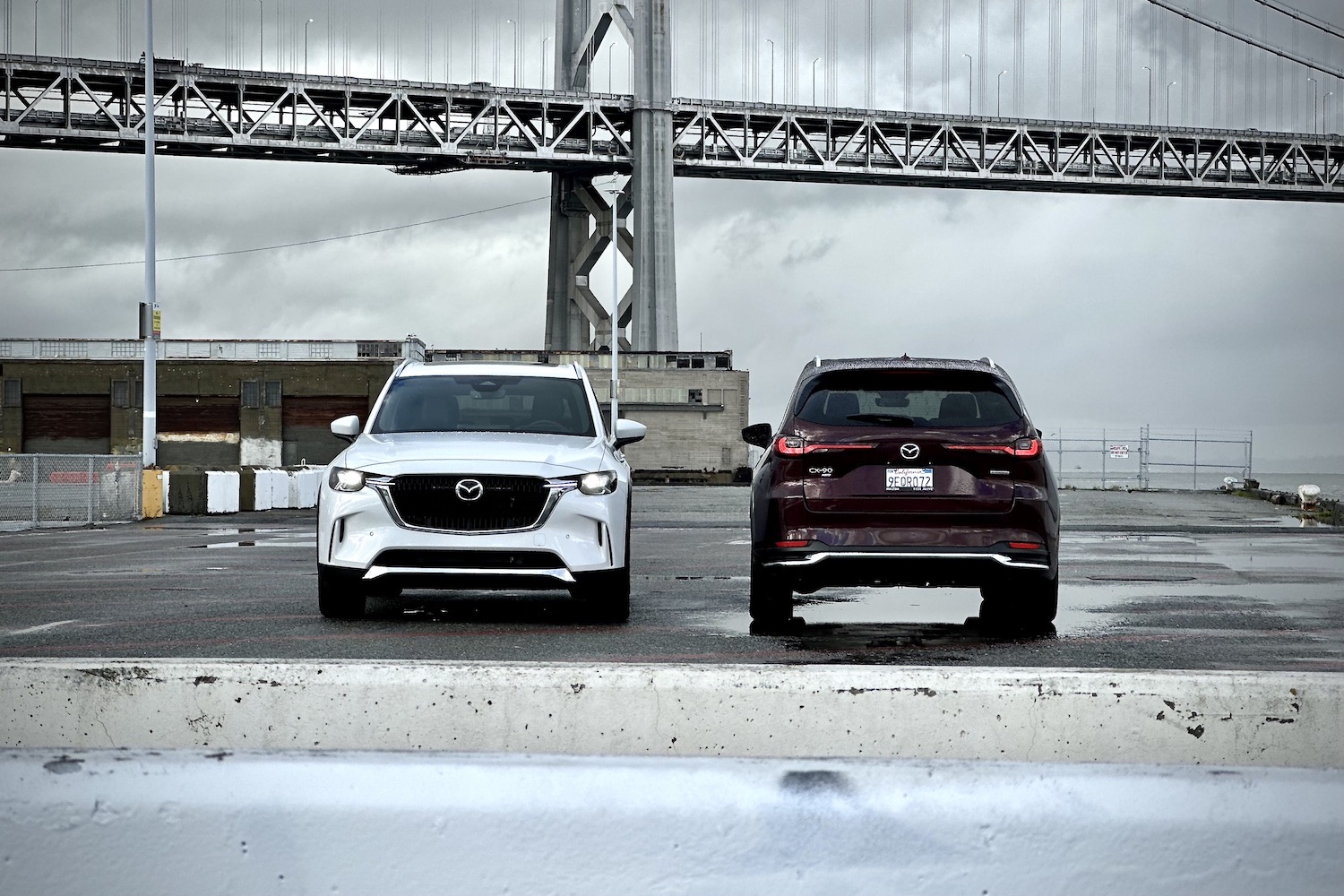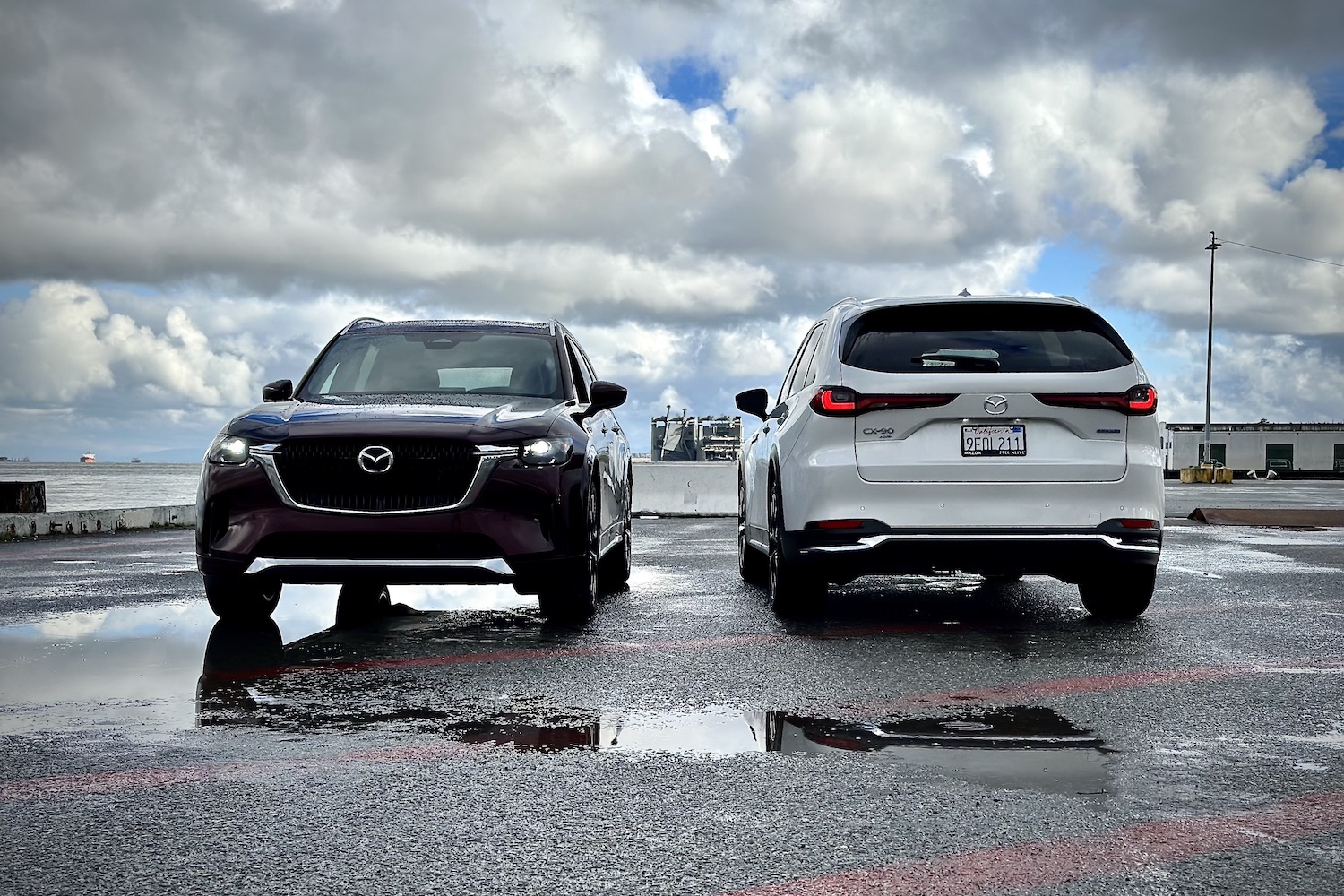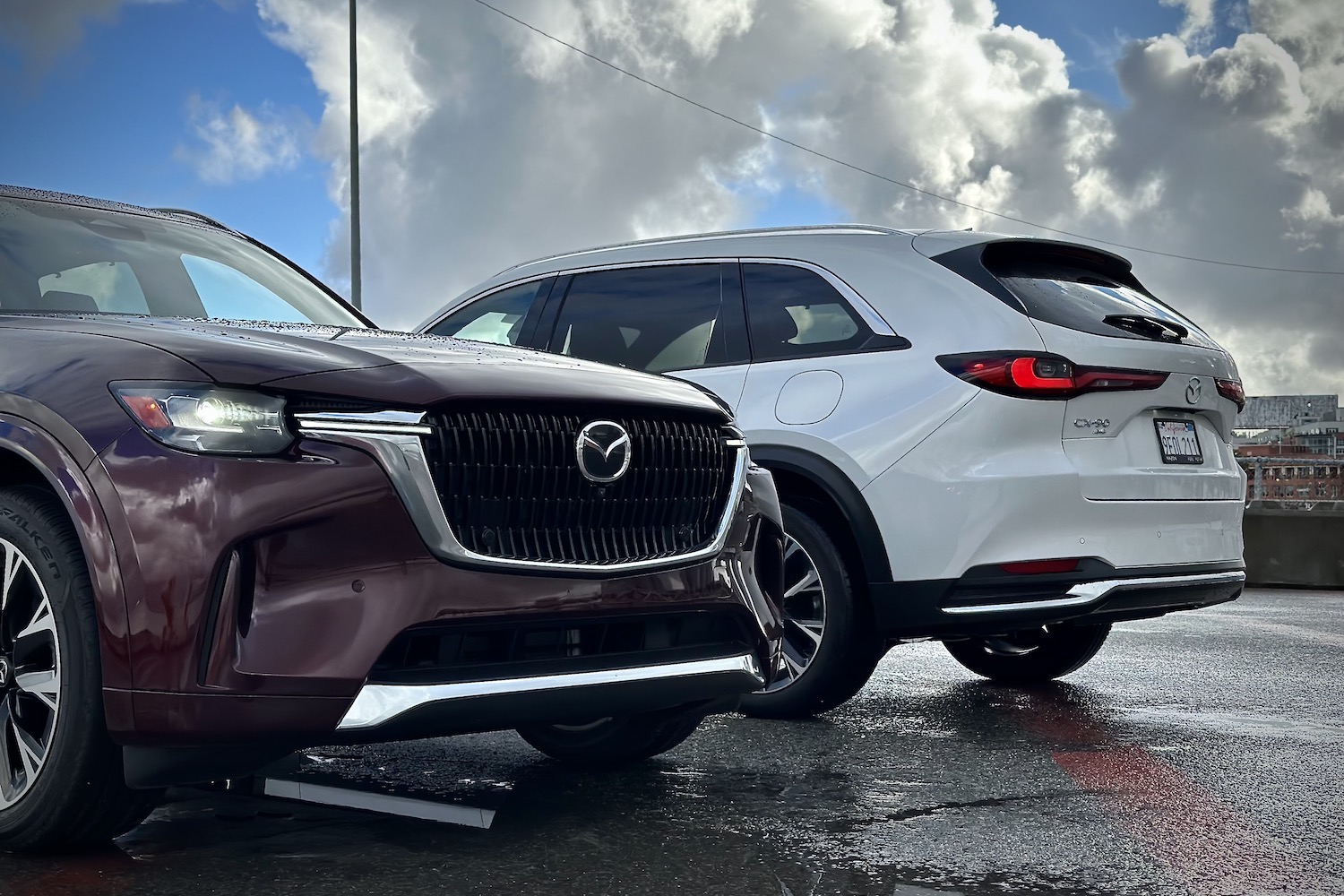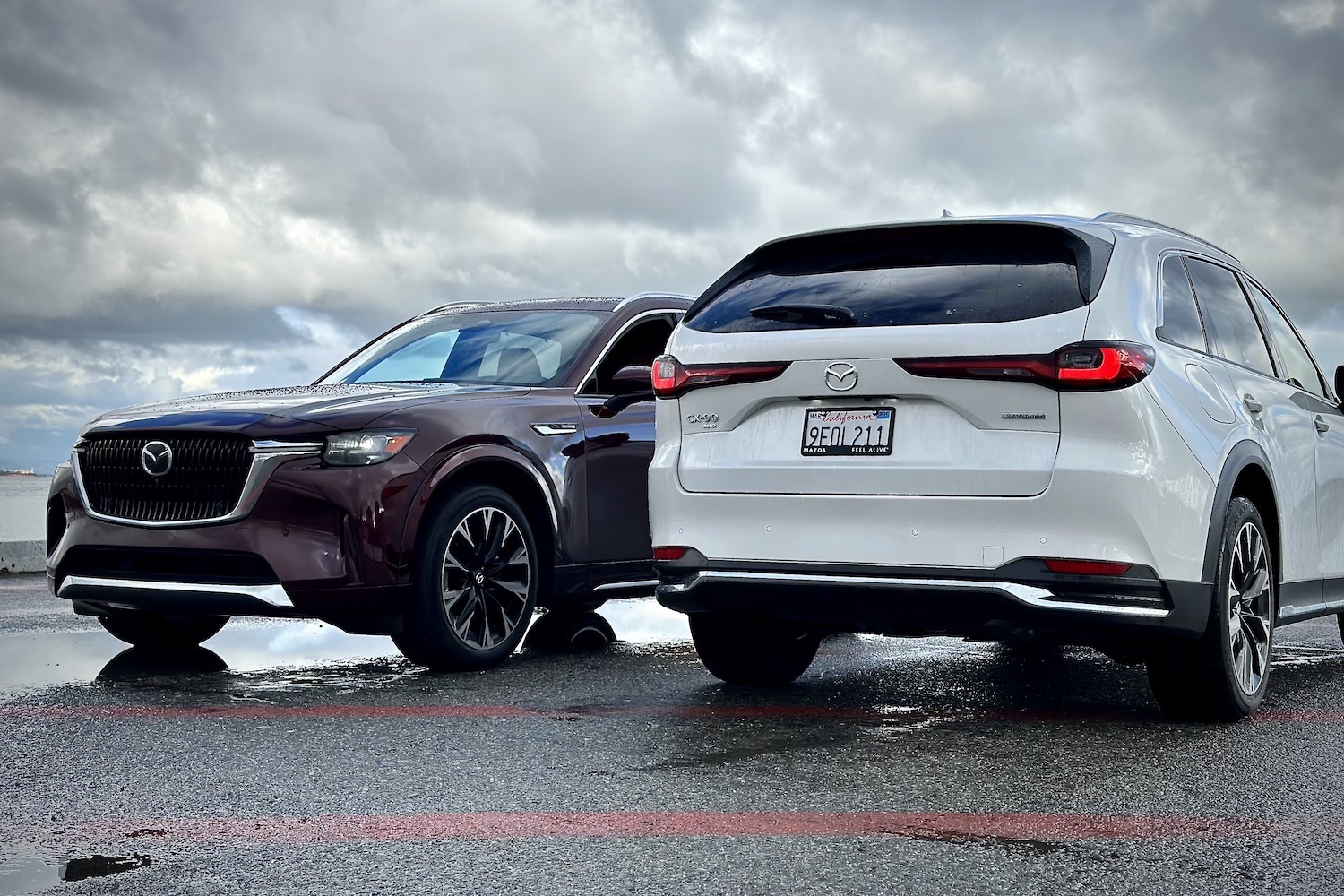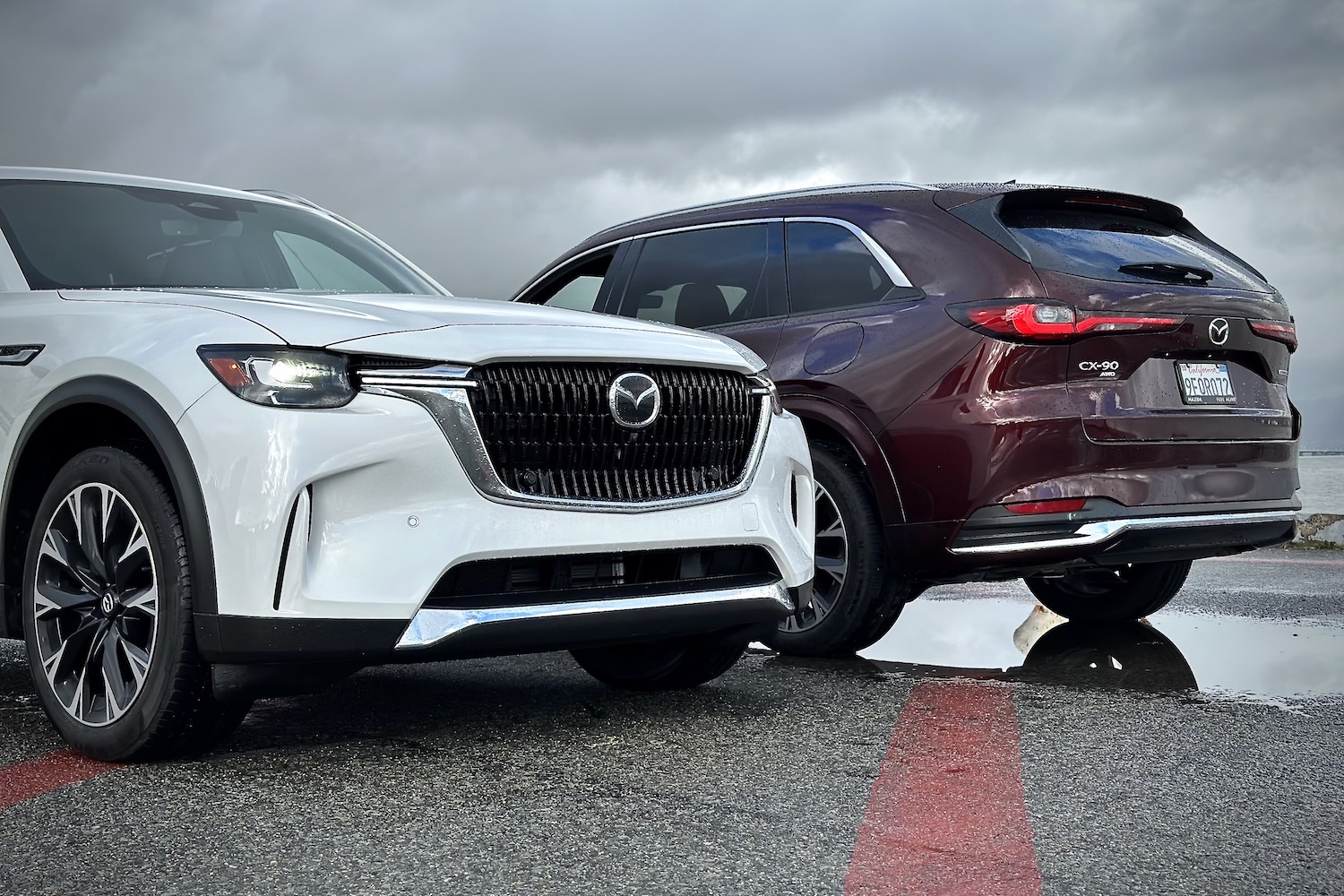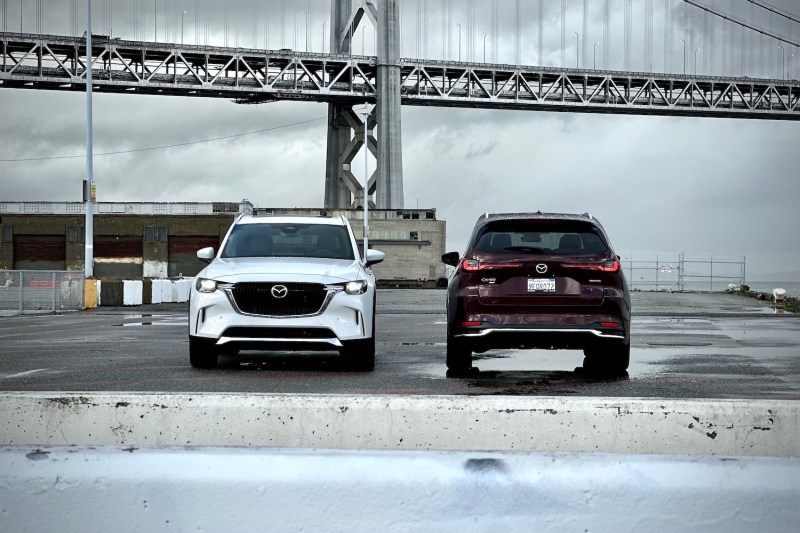
Automakers chase profits. Like all companies, they’re in the business of selling items — in this case, cars. That’s why most car manufacturers are switching gears to ditch convertibles and sports cars to make SUVs. SUVs bring in more profits and are incredibly popular. Automakers can’t keep up with demand for SUVs, and consumers still want more. Heck, even Ferrari has an SUV on sale now.
In their haste to make more SUVs, automakers have overlooked one major thing: Character. The majority of SUVs on the road all feel and look alike. Features, price, and size are the only three real things to consider when looking into an SUV. At first glance, you might be quick to write off the all-new 2024 Mazda CX-90 as being yet another SUV. Before you do that, you should know that the CX-90 is a sweet, characterful SUV that nails Mazda’s first true attempt at going upstream.
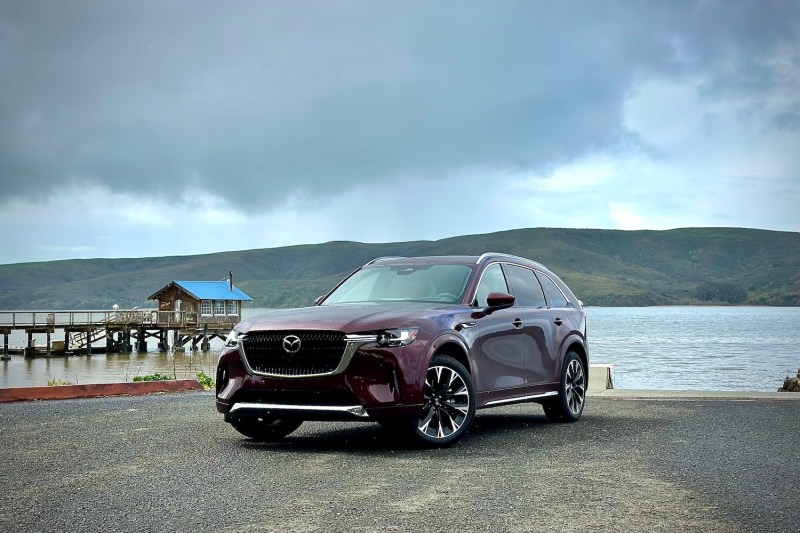
Is the Mazda CX-90 really all-new?
Yep, it sure is. The CX-90 arrives as the replacement for the aging CX-9. That model was one of the nicest-driving midsize SUVs on the market, so the CX-90 has large promises to uphold for people who enjoy driving. As nice as the CX-9 was to drive, it had a host of issues. The third row was tight, cargo space was limited, and the turbo-four could’ve used some extra pep.
The good news is that Mazda aimed to address these deficiencies with the new CX-90. The CX-90 features a new rear-wheel-drive architecture, a new turbocharged 3.3-liter inline-six-cylinder engine, a new plug-in hybrid powertrain, and a new eight-speed automatic transmission.
Mazda brought us out to a very rainy and dreary San Francisco to drive both the Turbo S Premium Plus (pictured in maroon here) and the PHEV Premium Plus (the SUV in white) on some gorgeous roads up to Sonoma and then back down to San Francisco.
What a sweet, sweet, inline-six
Inline-six engines are rare. At the moment, BMW, Jaguar, Land Rover, Mercedes-Benz, and Jeep are the only manufacturers to build vehicles that have engines with six cylinders in a straight line. Most have gone to turbo-fours or continue to stick with V8s, and with electrification on the horizon, seeing a brand invest so heavily into coming out with a new engine is odd.
Now, onto the engine. The turbocharged 3.3-liter inline-six is available in two states of tune. In non-S models, the engine makes 280 horsepower and 332 pound-feet of torque. In S trims, like the ones we drove, the engine makes 340 horsepower and 369 pound-feet of torque. Both come paired with a 48-volt mild-hybrid system. The difference in power can be attributed to tuning and gas. Non-S models are tuned to run on regular gas while S trims require premium fuel. Not interested in the extra bump in power? Save some money by going with a non-S trim.
The trip from San Francisco up to Sonoma includes a sizable stretch on the highway. The inline-six engine feels like it was made for long jaunts at highway speeds. Mazda’s engineers claim that the turbo engine delivers linear power delivery, and we have to say that we agree. There’s no noticeable turbo lag, as power builds and builds in a smooth, sonorous way that separates crisp inline-six engines from burlier V6 motors. There was never a moment where I was left wanting for more performance, as the turbo engine felt up for passing at 60 mph or merging from 30 mph. I appreciated the linear power delivery even more on back roads, as keeping the revs relatively high and flooring it brought immediate power.
The engine’s performance feels a lot more powerful than its 340 horsepower figure, and the noise it makes is ASMR for enthusiasts. Beyond helping Mazda stand out in the cramped class, the inline-six engine also helps Mazda with balance and packaging.
Is the PHEV a lot different?
Oh, yeah. The CX-90 with the available plug-in hybrid powertrain feels like a completely different vehicle. The PHEV comes with a 2.5-liter four-cylinder engine, but it includes a 68-kW electric motor and a 17.8-kWh battery pack. Thanks to the electric nature of the powertrain, the PHEV feels just as strong as, if not stronger than, the turbo engine down low, despite being rated at 323 horsepower and 369 pound-feet of torque, coming with fewer cylinders, and not having a turbo. It feels more visceral, too, with the instant power delivery of the electric motor. You’re also getting a great grumble that sounds different than the six-cylinder engine, though it’s assisted by a sound tube.
With 26 miles of all-electric range, the CX-90 PHEV strikes an interesting balance between performance and usability. For urbanites or shoppers who don’t quite understand the allure of an inline-six and aren’t chasing performance numbers, the plug-in hybrid powertrain could prove to be the sweet spot. The electric portion of the powertrain interacts smoothly with the gas portion, which isn’t always a given, especially for an automaker that’s just entering the electrified scene. Plus, there’s a special EV mode in which the vehicle only uses electricity to operate. There’s plenty of juice to run the SUV on electricity on the highway, though it’s much better for slower speeds.
Does the gearbox live up to the engine?
In addition to introducing a new inline-six engine, the CX-90 also features an all-new 8-speed automatic transmission that was built in-house. It utilizes a wet clutch instead of a traditional torque converter for better packaging under the body.
Mazda’s worked on the transmission tuning to ensure the gearbox recognizes when the driver is trying to get down the road spiritedly versus in a relaxed way. There’s no manual mode anymore. Instead, using the shifters behind the steering wheel engages a semi-manual mode that allows the driver to control shifts until the SUV senses that it’s time to take control.
Most of the time, the transmission does an admirable job of doling out shifts. There were a few times when the transmission canceled the manual mode too quickly or decided to upshift when we were driving spiritedly. Then again, this is a midsize SUV. I doubt people will flog the vehicle on a windy road, so feel free to leave the transmission to do its own thing and know that it’ll do a great job.
Way more fun than most midsize SUVs
No one does driver enjoyment quite like Mazda. The brand has consistently prioritized driver engagement more than most other brands, and it shows, even in the large CX-90. The rear-wheel-drive biased platform and all-wheel-drive system have done wonders for the SUV’s handling. The CX-9 was already one of the sportiest SUVs in the segment, but the changes have pushed the CX-90 even higher up the ladder.
The steering is direct and actually communicates road feel. It’s also well weighted in its comfort setting. The CX-90 feels like a rear-wheel-drive-based SUV. It’s quick to respond to steering inputs, and when pushed really hard into a corner, it’s more than happy to send enough power to the rear wheels to engage traction control.
Mazda, as it usually does, has also nailed the suspension tuning. The CX-90 forgoes adaptive suspension for a more traditional setup. Despite the vehicle not using any suspension magic and riding on 21-inch wheels, Mazda’s engineers found a sweet spot for comfort and enjoyability. On the highway, the CX-90 feels supremely smooth and almost limo-like with its rear-wheel-drive architecture. Then it transitions to feeling plenty sporty enough on curvy roads without skipping a beat. There’s no hiding the CX-90’s weight, and the SUV doesn’t quite shrink around you like the CX-9 did, but few can match the dual nature quite like Mazda’s latest SUV.
It’s more luxurious than other Mazdas, right?
Sort of. We only got to interact with the range-topping trims for the CX-90, and the Turbo S Premium Plus felt much nicer than the PHEV Premium Plus. The interior design of the Turbo S Premium Plus trim we tested featured a gorgeous two-tone color scheme and high-end materials. There’s faux suede on the dashboard and doors that feels and looks convincing, while the available wood trim is absolutely stunning. Mazda also continues to stick with physical buttons and simple controls, which is a godsend.
After driving the Turbo S Premium Plus for a few hours, making the switch to the CX-90 PHEV revealed that there was a substantial difference in the look and feel of the materials. The soft cloth materials on the door and hard plastic or leather on the dashboard don’t feel nice to touch, while the standard faux-metal trim looks like a stick-on from AutoZone. The CX-90 PHEV isn’t available with a two-tone interior look either, which is a shame. It may sound like I’m beating up on the plug-in hybrid version, and I am a little bit, but it still feels really nice on the inside. It’s just not as nice as the gas-powered version.
In addition to being a lot nicer than other Mazdas, the CX-90 is also larger than most Mazdas. Compared to the CX-9, the CX-90 has a wheelbase that’s 7.4 inches longer, so the CX-90 gave Mazda’s designers and engineers more flexibility with the seats. The CX-90 is available with seating for up to eight, seven, and six.
The first and second rows are plenty spacious, and the second row, at least with the captain’s chairs, has plenty of movement to accommodate taller adults. The front seats are also noteworthy, featuring comfortable Nappa leather upholstery and a great amount of bolstering. My only gripe is that eight different adjustments don’t seem like a lot when others offer more. Also, the second-row seats don’t have power adjustments, and you’ll have to manually fold the third row down because power adjustments for those aren’t available either. These two things seem like a miss for a near-luxury SUV. On the plus side, there is a nifty second-row console with a storage compartment, a slide-out drawer, and cupholders.
What might cause you to really hit the pause button on purchasing a CX-90 is the amount of space in the third row. There’s 30.4 inches in the third row, which isn’t bad, but it’s not great. The Kia Telluride has 31.4 inches of third-row legroom for comparison. If you’re an adult, you won’t want to spend too long back there. Cargo capacity is also down compared to the competition with up to 75.2 cubic feet of space.
Any other noteworthy things?
Mazda reps talked a lot about the available Bose audio system. The automaker and Bose worked together early on in the production and manufacturing process of the CX-90 to make the speakers an integral part of the car’s body. I’m not a fan of Bose audio systems in cars, but even I have to say that this one is pretty good. One quirk is the placement of the speaker for the driver. It’s immediately next to the dead pedal, so when you have the music turned up, your foot is vibrating and shaking like crazy. It makes you think that something’s wrong with the car.
The gear shifter has an odd movement, as it requires you to slide it to the right, which causes it to sit at a slight angle. Then, reverse, neutral, and drive are in a single line, with park sitting to the left. Getting to park can be tricky, but reverse and drive are easier to access.
The available 12.3-inch infotainment display continues to be controlled via a dial and by physical buttons by the gear shifter, but we’re happy to see physical buttons in a new vehicle these days. The available 12.3-inch digital instrument cluster only has two display settings: One with traditional gauges and another that displays active safety features like adaptive cruise control. The font in the gauge cluster can be enlarged, which will be incredibly useful for drivers who need a little extra boost in the vision department.
There’s going to be some sticker shock with the CX-90. With a starting price tag of $40,970 (with destination), it’s certainly not cheap, but the maroon Turbo S Premium Plus costs $61,920. The CX-90 PHEV is pricier to begin with ($47,445), but it doesn’t cost as much on the high end, with the white PHEV model that we drove costing $58,920. People will question a $60,000 Mazda.
Should you consider buying a 2024 Mazda CX-90?
Mazda is an underdog. The automaker’s PR reps will tell you that themselves. The Japanese brand knows it can’t keep up with the likes of Toyota and Honda when it comes to raw sales or the rugged allure of options like the Kia Telluride and Jeep Grand Cherokee. So it pulled an audible, moving upstream with a charming six-cylinder engine, a rear-wheel-drive platform, and even more luxury in a package that’s way too enjoyable to drive for its own good. Whether the average consumer looks at all of the parts, especially the soulful inline-six engine, and sees a premium SUV worth the premium price tag remains to be seen.
For me, the answer is simple. If you enjoy driving and don’t want an SUV that looks like it will take you into the woods, the 2024 Mazda CX-90 is so freaking good. What Mazda did here is special. It deserves to sell in mass quantities because car people got together and made an SUV that’s for genuine car people. The inline-six-powered SUV will speak to the driver in you, while the PHEV is the more logical choice. Either way, the CX-90’s grand design, fabulous interior, and athletic handling are enough to put in a class above the rest.
